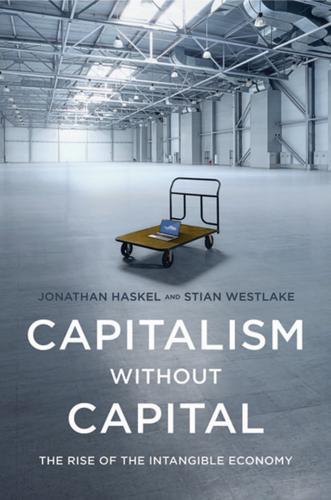
Capitalism Without Capital: The Rise of the Intangible Economy
by
Jonathan Haskel
and
Stian Westlake
Published 7 Nov 2017
Because (a) intangibles can be scaled, leading firms break away from laggards, and because (b) they are unmeasured, measured productivity and profitability look high. And because they spillover when the pace of intangible investment slows, as it did after the Great Recession, productivity slows down as reduced intangible growth throws off fewer spillovers. Secular Stagnation: The Symptoms Before we look at the link between secular stagnation and intangible investment, it is worth reviewing what secular stagnation actually consists of. Secular stagnation is characterized by a number of symptoms. The first is low investment. As figure 5.1 shows, for the United States and the UK, investment fell in the 1970s, recovered somewhat in the mid-1980s, and then fell precipitously in the financial crisis.
…
PART II The Consequences of the Rise of the Intangible Economy 5 Intangibles, Investment, Productivity, and Secular Stagnation This chapter looks at the role of intangibles in secular stagnation, the puzzling fall in investment and productivity growth seen in major economies in recent years. We argue that the increasing importance of intangible investment may have an important role to play in this troubling phenomenon. One of the most troubling and widely talked about trends in economics at the moment is secular stagnation: the fact that business investment is stubbornly low despite every indication that it shouldn’t be.
…
The economist and economic historian Robert Gordon developed this theme in his influential 2016 book The Rise and Fall of American Growth, in which he argued that the inventions over the twentieth century, such as electricity, indoor plumbing, and the like, were part of “one big wave of innovation” that will not be repeated. This explanation for secular stagnation has proved controversial, not least because it turns out to be very difficult to measure whether technological progress has slowed down. A totally out-of-the-blue technological slowdown that is not easy to confirm using data has seemed to some too much of a deus ex machina, and many of those interested in secular stagnation have looked around for other causes. And then there are three further symptoms associated with current-day secular stagnation, all of which demand explanation. The first is the fact that corporate profits in the United States and elsewhere are, on average, higher than they have been for decades and seem to be steadily increasing.

The Price of Time: The Real Story of Interest
by
Edward Chancellor
Published 15 Aug 2022
Taylor, ‘The Financial Crisis and the Policy Responses: An Empirical Analysis of What Went Wrong’, NBER Working Paper, January 2009. Barry Eichengreen also observes that global saving held stable for the first 15 years of the new millennium, at 23–24 per cent of GDP. 23. Barry Eichengreen, ‘Secular Stagnation: A Review of the Issues’, in Secular Stagnation, Facts, Causes and Cures, eds. C. Teulings and R. Baldwin (London, 2014). 24. When Hansen elaborated his secular stagnation hypothesis towards the end of the 1930s his earlier comments on ‘easy credit’ were dropped. 9. THE RAVEN OF BASEL 1. David Hume, ‘Of Interest’, Selected Essays (Oxford, 1993), p. 181. 2. For Hume’s financial conservatism see Antoin E.
…
‘If capitalist society rejects a more equal distribution of incomes and the forces of banking and finance succeed in maintaining the rate of interest somewhere near the figure which ruled on the average during the nineteenth century,’ he warned, ‘… then a chronic tendency towards the under-employment of resources must in the end sap and destroy that form of society.’5 Not everyone agreed with Hansen, or Keynes. In his book The Bogey of Economic Maturity (1945), business economist George Terborgh railed against the notion of secular stagnation. Since a secular movement is by definition a long-term trend, Terborgh argued, the secular stagnation of the 1930s should have been evident for some years earlier. Yet the Roaring Twenties had been a period of universal optimism about the American economy. The country’s population growth had been slowing for decades, but Terborgh found no correlation between demographic change and productivity growth.
…
Thus, it seems reasonable to conclude that global savings ‘do not appear to be a major factor in the persistently low level of interest rates and slow rate of economic growth’.23 If demographics, investment and savings cannot explain the torpor of Western economies and their low interest rates, some other explanation is called for. Secular stagnation narratives emphasize what economists consider ‘real’ factors (savings, population, investment, etc.) and overlook monetary and financial factors. Yet Hansen came up with his big idea not long after the October 1929 Crash. In the 1934 paper in which he first mentions secular stagnation, Hansen states that in the previous decade the American economy had been ‘artificially stimulated by an overdose of easy credit … [and that] is the basic cause of the depression.’24 Eighty years later, after another overdose of easy money, the US economy experienced another bout of indigestion.
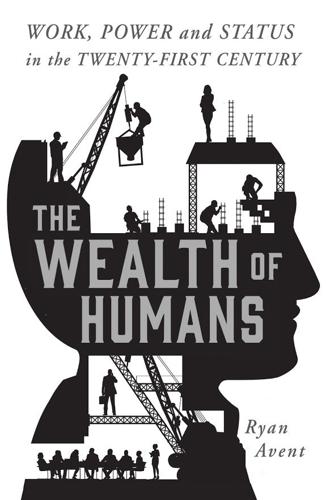
The Wealth of Humans: Work, Power, and Status in the Twenty-First Century
by
Ryan Avent
Published 20 Sep 2016
Much of the rich world, and a surprising share of the emerging world as well, appears to be descending into an era of chronically weak demand. This condition, which economists label ‘secular stagnation’, is associated with limp and vulnerable economic expansions, which often conclude in the deflation of big asset-price bubbles, and with protracted and disappointing recoveries. Secular stagnation in part of the world can function as a sort of economic black hole, sucking other economies into the weak-demand trap. It is caused by and exacerbates the inequities generated by the digital revolution. Secular stagnation slowly undermines support for the existing economic order, and while it is possible that governments will eventually settle on benign solutions to the problem, it is more likely that prolonged secular stagnation will lead to a broad backlash against global economic integration, and a costly turn inward.
…
Secular stagnation slowly undermines support for the existing economic order, and while it is possible that governments will eventually settle on benign solutions to the problem, it is more likely that prolonged secular stagnation will lead to a broad backlash against global economic integration, and a costly turn inward. THE HOARDERS The idea of secular stagnation dates to the 1930s, when Alvin Hansen, an American economist of Keynesian intellectual disposition, wrote a book called Full Recovery or Stagnation.1 The book mused on the nature of the Depression and asked whether some of the factors behind it might lead to permanent, structural economic malaise. Hansen suggested that ageing populations and a slowdown in technological progress reduced the appetite for investment.
…
In deflationary environments, on the other hand, such burdens loom ever larger, contributing to a cycle of cutbacks, defaults and further price declines. A WIDENING GYRE While the underlying conditions leading to chronically weak demand remain in place, the struggle to escape will grow harder, not easier, over time. Secular stagnation has a way of drawing additional countries into the trap, increasing the share of the global economy facing stagnant conditions and raising the gravitational pull towards the secular-stagnation black hole. The world is stuck. Too many big economies are struggling to generate enough demand to use up all their available economic capacity. Economies stuck in such a position can achieve fast growth, however, by capturing demand from abroad: by boosting their net exports (exports less imports) to other countries.
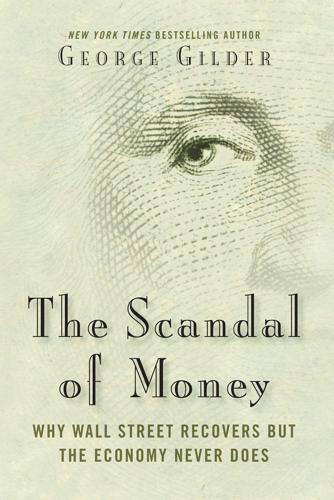
The Scandal of Money
by
George Gilder
Published 23 Feb 2016
In 2015 he assumed the chairmanship of London’s Institute for New Economic Thinking (INET) and surpassed Piketty with a compelling tract, Between Debt and the Devil, based on the same trends and similar formulae.3 Both Piketty and Turner align themselves with the thinking of the American Nobel laureates Paul Krugman and Joseph Stiglitz, who contend that “the price of inequality” is slow growth and secular stagnation.4 They have that backward: inevitable effects of government policies that guarantee secular stagnation are inequality and the unjust enrichment of the already well-to-do, who can afford to buy influence and preference from the state. Brooding over this hothouse efflorescence of “new economic thinking” is George Soros, the cerebral billionaire and disciple (from the left) of the philosopher Karl Popper.
…
In a dismal account of the limits to growth, Gordon foresees productivity’s running into six “headwinds”—demography (slowing of workforce growth), education (diminishing returns of learning as schooling spreads), inequality (with 52 percent of income gains siphoned off to the “One Percent”), globalization (the worldwide reach of U.S. technology pushing down U.S. pay), energy and the environment (“global warming” halting the huge historic growth contributions of fossil fuels), and an overhang of consumer and government debt, perhaps epitomized by the crisis of entitlement liabilities, $120 trillion in the United States alone.2 Such luminaries as the former Treasury secretary Lawrence Summers sum up the result as “secular stagnation”—a near-permanent retardation of growth.3 The Frenchman Thomas Piketty, demonstrating that not all his countrymen share Alexis de Tocqueville’s admiration of American exceptionalism, has extended the essential argument into a new Marxian “central law of capitalism.” Free markets have reached the end of the line of accumulation and growth, ushering in an era of redistribution and zero-sum reshuffling of wealth.4 Spreading this pall of pessimism in American politics is the Democratic Party.
…
With money as a manipulable instrument of elite control and enrichment, government guaranteed finance, real estate, insurance, alternative energy, agriculture, and education. But if investments are guaranteed, they cannot yield learning or growth. They are by definition unjust. On this injustice has been built the economy of secular stagnation. It reflects a great monetary heist and it must be reversed. But to reverse it, we must first grasp its sources in a deep misunderstanding of the nature of money itself. Chapter 3 Friedman and the Enigma of Money The first and most important lesson that history teaches about what monetary policy can do…is that monetary policy can prevent money itself from being a major source of economic disturbance.

The Upside of Inequality
by
Edward Conard
Published 1 Sep 2016
expires=1436996856&id=id&accname=guest&checksum=955AFBFEDF59ABFE3EF706272D0B3459. 7. Ben Bernanke, “Why Are Interest Rates So Low, Part 2: Secular Stagnation,” Ben Bernanke’s Blog, March 31, 2015, http://www.brookings.edu/blogs/ben-bernanke/posts/2015/03/31-why-interest-rates-low-secular-stagnation. 8. Ibid. 9. David M. Weil, Economic Growth (Boston: Pearson, 2005), figure 3.1, GDP and Capital per Worker, 2000, 49. 10. N. Gregory Mankiw, Macroeconomics, 6th Edition (Worth Publishers, 2007). 11. Bernanke, “Why Are Interest Rates So Low, Part 2: Secular Stagnation.” 12. “Gross Savings (% of GDP) 1980–2014,” World Bank National Accounts Data, accessed May 11, 2016, http://data.worldbank.org/indicator/NY.GNS.ICTR.ZS?
…
Chapter 5 THE MYTH THAT INVESTMENT OPPORTUNITIES ARE IN SHORT SUPPLY Recognizing the weaknesses of both the incentives-don’t-matter and the-successful-didn’t-earn-their-success arguments, proponents of redistribution, chiefly Larry Summers, have put forward a third argument for redistribution. They claim slow growth leaves the economy with a shortage of investment opportunities—so-called secular stagnation. If they are correct, then presumably we can shrink income inequality by taxing, redistributing, and consuming income that would otherwise be invested—namely, business profits and the income of high-income households—without slowing growth and reducing employment. Fear of secular stagnation—the supply of savings permanently exceeding the demand for investment—assumes investment waits for demand. After all, why would producers add more capacity until growing demand fills their existing capacity?
…
The availability of savings for investment does not seem to limit growth. Nevertheless, liberal economists Larry Summers and Paul Krugman are reluctant to agree with the underlying logic of trade and immigration advocates who state that supply creates its own demand. Summers’s theory of secular stagnation (discussed at length in chapter 5) asserts that a shortage of investment opportunities currently limits growth despite a surplus of unused savings.10 That hardly represents a world without constraints to growth where supply—in this case, savings—creates its own demand, quite the contrary. Krugman adamantly denies the notion that supply creates its own demand.
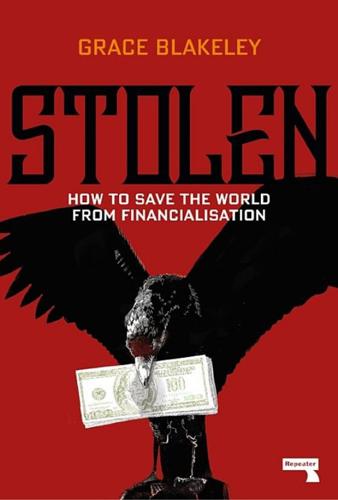
Stolen: How to Save the World From Financialisation
by
Grace Blakeley
Published 9 Sep 2019
Amongst the most prominent is Larry Summers — former World Bank Chief Economist and Treasury Department official. In November 2013, Summers delivered a speech to the IMF in Washington, in which he warned that the post-crisis economies of the global North were suffering from a peculiar affliction, one not sensitive to traditional medicine — an affliction he termed “secular stagnation”.19 But whilst its symptoms are now more obvious, secular stagnation is not a new disease; it had been lurking in remission for decades. During the pre-crash period, unprecedented levels of lending were the only thing keeping the US economy going, and this was only sufficient to produce “moderate economic growth”. Similar trends prevailed in the other most financialised economies, not least the UK.
…
Some have argued that this can be attributed to a slowdown in technological change.21 Others point to demographic change — falling birth rates and rising life expectancies associated with rising affluence in the global North have led to a fall in the working age population that is depressing long-term growth rates.22 But all those who support the secular stagnation hypothesis converge on one point: without extraordinary interventions from the state such as quantitative easing, many economies in the global North appear to have ground to a halt. Today’s economists have all converged on one burning question: What is going on? Just like the theory of the great moderation itself, the secular stagnation hypothesis takes for granted many of the assumptions of neoclassical economics. Take the argument about wage stagnation. Neoclassical economists argue that workers are paid a wage equal to their marginal productivity.
…
, London: Polity; Epstein (2005); Hein, E.and Van Treeck, T. (2010) “Financialisation and Rising Shareholder Power in Kaleckian/Post-Kaleckian Models of Distribution and Growth”, Review of Political Economy, vol. 22; Onaran, O., Stockhammer, E. and Grafl, L. (2011) “Financialisation, Income Distribution and Aggregate Demand in the USA”, Cambridge Journal of Economics, vol. 35; Barba, A. and Pivetti, M. (2008) “Rising Household Debt: Its Causes and Macroeconomic Implications — A Long-Period Analysis”, Cambridge Journal of Economics, vol. 33; Crotty, J (2008) ‘Structural Causes of the Global Financial Crisis: A critical assessment of the ‘new financial architecture’’, Cambridge Journal of Economics, vol. 33. 16 This account draws on: IPPR (2018) Prosperity and Justice: A New Plan for the Global Economy — The Final Report of the IPPR Commission on Economic Justice; Blakeley, G. (2019) “The Next Crash: Why the World Is Unprepared for the Economic Dangers Ahead”, New Statesman, 6 March 2019. 17 World Bank (2019) ‘Gross capital formation (% of GDP)’, World Bank National Accounts Data. 18 See, e.g., Teulings, C. and Baldwin, R. (2014) Secular Stagnation: Facts, Causes and Cures, London: CEPR Press 19 Rogoff, K. (2015) “Debt Supercycle Not Secular Stagnation”, in Blanchard, O., Rajan, R., Rogoff, K. and Summers, L. (eds.) Progress and Confusion: The State of Macroeconomic Policy, USA: MIT Press 20 Giles, C. (2019) “Politics Is Failing on Brexit but Economics Has Been on the Money”, Financial Times, 14 March. 21 This account draws on: Marx, K. (1894) Capital Volume III; Mandel, E. (1981) “Introduction to Capital Volume III”, in Marx, K. (1894) Capital Volume III; Grossman, H. (1922) The Theory of Economic Crises; Shaikh, A. (1978) “An Introduction to the History of Crisis Theory”, Union for Radical Political Economies. 22 Perelman, M. (2000) The Invention of Capitalism: Classical Political Economy and the Secret History of Primitive Accumulation, USA: Duke University Press 23 This account draws on: on Phillips, L. and Rozworski, M. (2019) The People’s Republic of Wal-Mart: How the World’s Biggest Corporations Are Laying the Foundation for Socialism, London: Verso 24 See, e.g., Bastani, A. (2019) Fully Automated Luxury Communism, London: Verso. 25 Marx, K. (1847) The Communist Manifesto. 26 This account draws on: Meiksins Wood, E. (1995) Democracy Against Capitalism: Renewing Historical Materialism, London: Verso; Marx, K. (1846) The German Ideology; Mandel, E. (1975) Introduction to Marxism, London: Pluto 27 This account draws on: Marx (1946, 1984); Mandel (1981); Shaikh (1978); Meiskins Wood (1995). 28 See, e.g.

The Only Game in Town: Central Banks, Instability, and Avoiding the Next Collapse
by
Mohamed A. El-Erian
Published 26 Jan 2016
Browning, “The ‘Investor’s Dilemma’: Everything Is Expensive,” Wall Street Journal, August 24, 2014, http://blogs.wsj.com/moneybeat/2014/08/24/the-investors-dilemma-everything-is-expensive/. 5. Lawrence H. Summers, “Reflection on the ‘New Secular Stagnation Hypotheses,’ ” in Coen Tuelings and Richard Baldwin, eds., Secular Stagnation: Facts, Causes, and Cures (London: CEPR Press, 2014), http://www.voxeu.org/sites/default/files/Vox_secular_stagnation.pdf. CHAPTER 9: THE QUEST OF A GENERATION 1. Mohamed A. El-Erian, “The Global Growth Quest,” Project Syndicate, April 9, 2013, http://www.project-syndicate.org/commentary/the-worldwide-search-for-new-growth-models-by-mohamed-a--el-erian. 2.
…
,” Reuters, October 31, 2011, http://blogs.reuters.com/mohamed-el-erian/2011/10/31/could-america-turn-out-worse-than-japan-2/. 9. Lawrence H. Summers, “U.S. Economic Prospects: Secular Stagnation, Hysteresis, and the Zero Lower Bound,” Business Economics 49, no. 2 (2014), http://larrysummers.com/wp-content/uploads/2014/06/NABE-speech-Lawrence-H.-Summers1.pdf. 10. Christine Lagarde, “The Challenge Facing the Global Economy: New Momentum to Overcome a New Mediocre,” speech to Georgetown University School of Foreign Service, October 2, 2014, http://www.imf.org/external/np/speeches/2014/100214.htm. 11. Gauti Eggertsson and Neil Mehrota, “A Model of Secular Stagnation,” NBER Working Paper No. 20574, National Bureau of Economic Research, April 2014, http://www.nber.org/papers/w20574.pdf. 12.
…
But I do worry, a lot, about future financial instability and what that does to economic and social well-being—agreeing with Fed chair Yellen’s remark that “a smoothly operating financial system promotes the efficient allocation of saving and investment, facilitating economic growth and employment.”12) This is an unprecedented policy configuration, and the outcome so far is mixed. CHAPTER 4 HOW AND WHY THIS BOOK IS ORGANIZED “Today, the growth picture is foggier. We have fear about secular stagnation at the same time as cheer about secular innovation. The technological tailwinds to growth are strong, but so too are the sociological headwinds. Buffeted by these cross-winds, future growth risks becoming suspended between the mundane and the miraculous.”1 —ANDY HALDANE “I am describing the outlook that I see as most likely, but based on many years of making economic projections, I can assure you that any specific projection I write down will turn out to be wrong, perhaps markedly so.”

Automation and the Future of Work
by
Aaron Benanav
Published 3 Nov 2020
Keynes himself would have agreed with that aim, although not with the means required to get there.9 As capital accumulates “up to the point where it ceases to be scarce,” Keynes argued, profit rates will fall to low levels, leading to the onset of a period of economic maturity, which Keynes’s American counterpart Alvin Hansen called “secular stagnation.”10 Harvard economist Larry Summers has recently revived the secular stagnation thesis. He now claims that the austerity-induced “structural reform” he previously advocated is unlikely to lead the economy to health; instead, he argues, only massive “public investment” can restore full employment.11 Keynes would have agreed with the need for greater public investment, but he would have argued, further, that the onset of economic maturity was an indication that the capitalist era was drawing to a close.
…
See Geoff Mann, In the Long Run We Are All Dead: Keynesianism, Political Economy, and Revolution, Verso, 2017. 10 Keynes, General Theory, 376. See also Alvin Hansen, “Economic Progress and Declining Population Growth,” American Economic Review, vol. 29, no. 1, 1939. For an analysis of the demographic aspects of these arguments, see Melinda Cooper, “Secular Stagnation: Fear of a Non-Reproductive Future,” Postmodern Culture, vol. 27, no. 1, 2016. 11 Larry Summers, “Demand Side Secular Stagnation,” American Economic Review, vol. 105, no. 5, 2015, p. 64. 12 Keynes, General Theory, p. 324. 13 Keynes, “Economic Possibilities,” pp. 368–9. 14 Lorenzo Pecchi and Gustavo Piga, Revisiting Keynes’ Economic Possibilities for our Grandchildren, MIT Press, 2008.
…
That should have increased the demand for labor, except that the productivity slowdown was overshadowed by another, more eventful trend: in a development originally analyzed by Marxist economist Robert Brenner under the title of the “long downturn”—and belatedly recognized by mainstream economists as “secular stagnation” or “Japanification”—economies have been growing at a progressively slower pace. The cause? Decades of industrial overcapacity killed the manufacturing growth engine, and no alternative to it has been found, least of all in the slow-growing, low-productivity activities that make up the bulk of the service sector.

Rethinking Capitalism: Economics and Policy for Sustainable and Inclusive Growth
by
Michael Jacobs
and
Mariana Mazzucato
Published 31 Jul 2016
Faltering Innovation Confronts the Six Headwinds, Centre for Economic Policy Research, Policy Insight No. 63, September 2012, http://www.cepr.org/sites/default/files/policy_insights/PolicyInsight63.pdf (accessed 12 April 2016). 18 See for example L. H. Summers, ‘U.S. economic prospects: secular stagnation, hysteresis, and the zero lower bound’, Business Economics, vol. 49, no. 2, 2014, pp. 65–73, http://larrysummers.com/wp-content/uploads/2014/06/NABE-speech-Lawrence-H.-Summers1.pdf (accessed 12 April 2016); C. Teulings and R. Baldwin (eds), Secular Stagnation: Facts, Causes and Cures, London, CEPR Press, 2014, http://voxeu.org/sites/default/files/Vox_secular_stagnation.pdf (accessed 12 April 2016). 19 Real median US household income in 2014 was $53,657 compared with $52,623 in 1990 (using 2014 CPI-U-RS Adjusted Dollars).
…
The rate of productivity-enhancing innovation appears to have slowed down markedly over the last decade,2 a trend likely to be exacerbated in the future by declining rates of investment in research and development by both public and private sectors. This is one factor generating concerns that the developed world has entered a period, not of sustained growth, but of ‘secular stagnation’.3 Some economists see the risk of secular stagnation as a quasi-inevitable consequence of demographic change and savings behaviour in high-income countries. This chapter will instead highlight its endogenous character: the result of problematic choices that are being made by both businesses and governments. It will focus on how a different understanding of the origins of innovation—and, in particular, the role of public investment in the process of wealth creation—creates a different set of policy imperatives for countries seeking ‘smart’ growth.
…
Faltering innovation confronts the six headwinds’, Centre for Economic Policy Research, Policy Insight No 63, September 2012. Available at: http://www.cepr.org/sites/default/files/policy_insights/PolicyInsight63.pdf (accessed 13 June 2015). 3 See for example C. Teulings and R. Baldwin, eds, Secular Stagnation: Facts, Causes and Cures, London, CEPR Press, 2014. Available at http://www.voxeu.org/content/secular-stagnation-facts-causes-and-cures (accessed 20 May 2015). 4 A public good is a good that is both non-excludable and non-rivalrous so the use by one individual does not exclude the use by another. This means it is hard to appropriate privately the return from public goods, and hence they are characterised by too little private investment.

Prosperity Without Growth: Foundations for the Economy of Tomorrow
by
Tim Jackson
Published 8 Dec 2016
What if the capacity of the economy to grow was slowing down? What if the reluctance of businesses to invest and consumers to spend was not just a cyclical downturn but a more entrenched change in economic fundamentals? The term ‘secular stagnation’ re-emerged – it had first been used in 1939 – to reflect precisely these possibilities.51 For the most part, fears of secular stagnation have been directed at the advanced economies. US economist Robert Gordon has suggested that a slowdown in the US economy could come about as a result of a decline in the pace of innovation – many of the big technological advances of the last two centuries are now over – together with six ‘deflationary headwinds’, which are taken to include: an ageing population, rising inequality and the ‘overhang’ of consumer and government debt.52 Irrespective of precise causes, it is indisputable that labour productivity growth in the advanced economies has been falling consistently for several decades, and was doing so long before the financial crisis.
…
‘The economics of ecosystems and biodiversity: mainstreaming the economics of nature: a synthesis of the approach, conclusions and recommendations of TEEB’. Online at http://doc.teebweb.org/wp-content/uploads/Study%20and%20Reports/Reports/Synthesis%20report/TEEB%20Synthesis%20Report%202010.pdf (accessed 30 December 2015). Teulings, Coen and Richard Baldwin 2014. ‘Secular Stagnation: facts, causes and cures’. London: Centre for Economic Policy Research. Online at www.voxeu.org/sites/default/files/Vox_secular_stagnation.pdf (accessed 17 October 2015). Thaler, Richard H. and Cass Sunstein 2009 Nudge: Improving Decisions About Health, Wealth and Happiness. London and New York: Penguin. Timmer, Marcel, Mary O’Mahony and Bart van Ark 2007. EU KLEMS growth and productivity accounts: overview, November 200 release.
…
William White, former chief economist at the Bank for International Settlements, warned the Davos World Economic Forum that the situation building in the global financial system was ‘worse than it was in 2007’ in a context in which central bankers had ‘used up all their ammunition’. The head of Swiss banking giant UBS, Axel Weber, added to the angst by warning that the world was now stuck in an era of low growth.57 These comments illustrate the visceral fear that haunts the prospect of an economic slowdown. But the threat of secular stagnation has strange as well as familiar consequences. One of these is that it brings the interests of conventional economists much closer to the concerns of those who have questioned growth on ecological or on social grounds. There now seems to be a distinct possibility that the growth on which we have relied, not only to improve the quality of our lives but also to maintain economic stability, might just not be available any more.
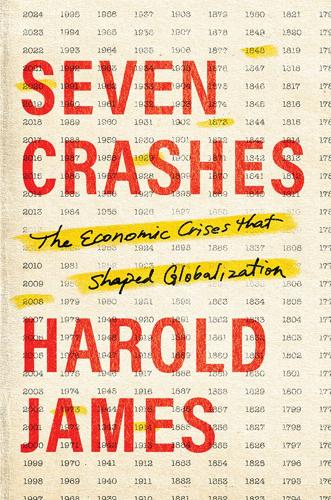
Seven Crashes: The Economic Crises That Shaped Globalization
by
Harold James
Published 15 Jan 2023
Larry Summers, “IMF Fourteenth Annual Research Conference in Honor of Stanley Fischer,” transcript of speech delivered at Washington, D.C., November 8, 2013, http://larrysummers.com/imf-fourteenth-annual-research-conference-in-honor-of-stanley-fischer/. 109. Larry Summers, “Accepting the Reality of Secular Stagnation,” Finance & Development 57, no. 1 (2020). 110. Larry Summers, “Reflections on the ‘New Secular Stagnation Hypothesis,’” in Secular Stagnation: Facts, Causes and Cures, ed. Coen Teulings and Richard Baldwin (London: Centre for Economic Policy Research, 2014), 30. 111. Summers, “Reflections,” 31. 112. Ibid., 32. 113. Ibid. 114. “America’s Lost Oomph,” Economist, July 19, 2014. 115.
…
Households installed washing machines. In the countryside, the tractor revolutionized productivity. Figure 4.2. Annual growth rate of total-factor productivity in the United States for the preceding ten years, 1900 –2012 (Data from Robert J. Gordon, “The Turtle’s Progress: Secular Stagnation Meets the Headwinds,” in Coen Teulings and Richard Baldwin, ed., Secular Stagnation: Facts, Causes and Cures [London: CEPR, 2014], 53) The trauma of the Great Depression did not slow down the American invention machine. If anything, the pace of innovation picked up in the last half of the 1930s.132 And then came a new push as a result of the war.
…
Lockdowns and travel bans interrupted supply chains. Going into the crisis, there was an intellectually dominant interpretation, associated above all with Larry Summers, of the future as lying in a great stagnation with low growth and increased income inequality, as a long-term negative demand shock. Theories of secular stagnation, with sustained low productivity growth and shortfalls in demand, conjured up the world of the 1930s and the Great Depression. This was importantly a misdiagnosis of the Great Depression: as well as a demand crisis, the middle years of the twentieth century brought a technology-driven transformative shift that would reconfigure supply and production.
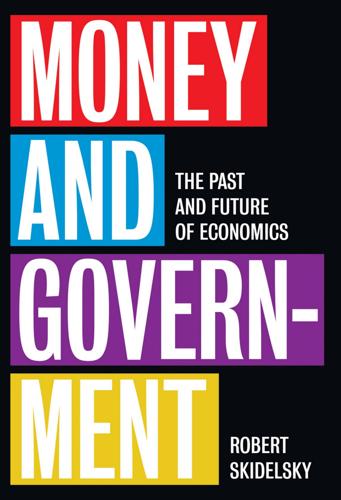
Money and Government: The Past and Future of Economics
by
Robert Skidelsky
Published 13 Nov 2018
Available at: http://www.nytimes.com/2010/07/02/opinion/02krugman.html [Accessed 21 June 2017]. Krugman, P. (2013a), Bubbles, regulation and secular stagnation. New York Times, 25 September. Available at: https://krugman.blogs.nytimes.com/ 2013/09/25/bubbles-regulation-and-secular-stagnation/?_r=0 [Accessed 21 December 2017]. Krugman, P. (2013b), Secular stagnation, coalmines, bubbles, and Larry Summers. New York Times, 16 November. Available at: https://krugman. blogs.nytimes.com/2013/11/16/secular-stagnation-coalmines-bubblesand-larry-summers/?_r=3 [Accessed 21 December 2017]. Krugman, P. (2014), Nobody understands the liquidity trap, still.
…
This was partly a consequence of a marked growth in inequality. Real wages were stagnant or falling; investment was down from its historic levels, and with it productivity growth. The finance sector was growing faster than the economy, and financiers were getting much richer than anyone else. Signs of ‘secular stagnation’ were not hard to see, after the event. I have singled out the stagnation of real earnings as the deep cause of the crisis, the result of which was transmitted to the financial sector through the build-up of unsustainable debt. The Great Moderation is known chiefly for its low inflation and cyclical stability.
…
In the United States it was – incredible as it now seems – the Soviet Union which posed the challenge, especially in the fields of aerospace and defence, the Russians having launched their first Sputnik satellite in 1957, with loud claims of being about to ‘bury’ the capitalist West economically. In fact, the Soviet growth rates were also high during the ‘golden age’. There was talk of ‘secular stagnation’, never far from the surface of American discussions. Germany, whose growth record was exemplary, also succumbed to the fear of slow growth, following its first recession in 1965. By that time there was a general feeling that the capitalist world needed a Keynesian boost. The analysis was deceptively simple.

The Corona Crash: How the Pandemic Will Change Capitalism
by
Grace Blakeley
Published 14 Oct 2020
Many economists were predicting that a recession would hit the US, the UK and the Eurozone by 2022.11 The yield curve, which shows the returns on US Treasuries of different maturities, had inverted for the first time since 2007 – meaning that short-term government bonds had higher yields than long-term bonds.12 An inverted yield curve has augured every major recession for the last half century. In the end, the recession came earlier – and hit unimaginably harder – than expected. All over the world, capitalists were already looking to nation-states to save them from the overlapping crises of secular stagnation, populism and climate breakdown. The Covid-19 recession has strengthened demands for government intervention, while further weakening profits and increasing the dependence of capital on the state. Central bankers and politicians have staged unprecedented economic interventions, not to help the most vulnerable through this crisis, but to save capitalism from itself.
…
The UK also had a persistent current account deficit, worth 4 per cent of GDP in 2018.5 Mainstream economists advanced many different explanations for this economic malaise, which was reflected across many other ‘advanced’ economies. Some attributed it to a slowdown in technological change under the mantle of ‘secular stagnation’, others to rising public debt, and others to growing protectionism.6 But the problem with mainstream explanations for the economic stagnation witnessed over the last ten years is that they only identify the symptoms of the disease, rather than the underlying cause. Most economists have been unable to determine why there has been a sudden slowdown in productivity growth, a sudden increase in government debt, and a slowdown in globalisation.
…
Competition for new markets between statebacked multinational corporations had generated a new age of capitalist imperialism. After 1945, American militarism (‘the arms race’) and slick Mad Men marketing underwrote corporate capitalism in its consolidation phase, argued Monthly Review’s Paul Baran and Paul Sweezy. But secular stagnation lay ahead, deferred for a season by a subsequent, unanticipated swerve into financialisation in the 1980s, which destabilised corporate structures – power within a new ‘monopoly-finance’ hybrid shifting from boardroom to trading floor. Meanwhile, the US gendarme acted as ultimate guarantor of neoliberal restructuring on the periphery.4 And today?
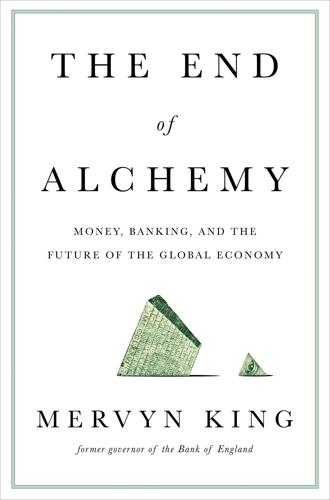
The End of Alchemy: Money, Banking and the Future of the Global Economy
by
Mervyn King
Published 3 Mar 2016
So why, after the biggest monetary stimulus the world has ever seen, and six years after the end of the banking crisis, is the world recovery so slow? Some economists believe that we are experiencing what they call ‘secular stagnation’, a phrase coined by the American economist Alvin Hansen in his 1938 book Full Recovery or Stagnation?36 Today’s American economists, such as Ben Bernanke, Paul Krugman, Kenneth Rogoff and Larry Summers, have been using the more modern literary form of blogging to debate the issue. But it is not exactly clear what they mean by secular stagnation. Does it refer to stagnation of supply or of demand, or indeed both? Growth today seems possible only if interest rates are much lower than normal – at present the long-term real rate of interest is close to zero.
…
When asked why demand is weak, economists tend to answer that it is because the natural real rate of interest is negative – in other words, people will spend only when faced with negative real interest rates. And when asked why that is, they reply that it is because demand is insufficient to maintain full employment. The reasoning is circular. Simply restating the phenomenon of secular stagnation in different words and pretending to have offered an explanation does not amount to a theory. Secular stagnation is an important description of the problems afflicting the world economy, but we need a new theory, or narrative, to explain why global demand is so weak and real interest rates are so low. The conventional analysis used by economists and central banks is based on the assumption that the economy grows along a steady path from which it occasionally deviates as a result of temporary shocks to demand or supply.
…
Stiglitz, Joseph (2014), ‘Reconstructing Macroeconomic Theory to Manage Economic Policy’, National Bureau of Economic Research Working Paper 20517, mimeo, Cambridge, Massachusetts. Summers, Lawrence H. (1983), ‘“On the Economics of Private Money” by Robert G. King’, Journal of Monetary Economics, Vol. 12, No. 1, pp. 159–62. —— (2014), ‘U.S. Economic Prospects: Secular Stagnation, Hysteresis, and the Zero Lower Bound’, Business Economics, Vol. 49, pp. 65–73. —— (2015), ‘Reflections on Secular Stagnation’, Speech at the Julius-Rabinowitz Center, Princeton University, 19 February 2015. Syed, Matthew (2011), Bounce: The Myth of Talent and the Power of Practice, Fourth Estate, London. Taleb, Nassim (2012), Antifragile: How to Live in a World We Don’t Understand, Allen Lane, London.
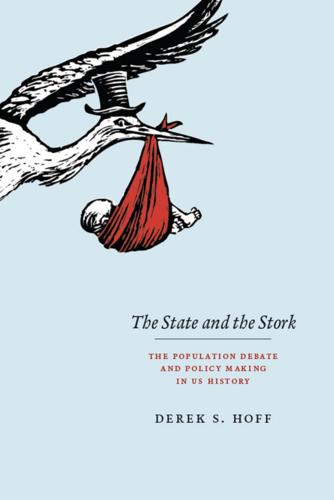
The State and the Stork: The Population Debate and Policy Making in US History
by
Derek S. Hoff
Published 30 May 2012
[higher] consumption,” he concluded, “rests on the failure to sustain full employment by other means.”88 Minimization of the importance of population growth also emanated, ironically, from some theorists who, despite the obvious inaccuracy of 1930s secular-stagnation theory’s predictions of the end of economic growth, continued to believe that modern capitalism had run its course. After the war, those who diagnosed secular stagnation in developed economies identified not a lack of exogenous variables necessary for economic growth (population growth, new lands, and new technologies) but endogenous, structural failings. They considered population growth a shibboleth compared to the factors of oligopoly and imperfect competition.
…
He concluded that wealthy and “mature” economies can arrive at an unfortunate “high unemployment equilibrium.” Put in less technical terms, economies can get stuck in quicksand. More happily, according to Keynes, because mass consumption would henceforth hold the key to prosperity in the industrialized nations, governments can cure “secular stagnation” (secular here means long-term) by increasing their direct spending in the economy, thereby propping up demand for goods and services and maintaining a floor on wages and prices. Although we remember Keynes less today for his demographic ideas than for his advocacy of government deficits to stimulate prosperity, he believed that the sluggish birthrates of the 1930s contributed to the Depression by lowering the number of consumers and hence aggregate demand and by squashing the business community’s expectations of the size of future markets.
…
As we have seen, classical economic theory held that a smaller population produces a higher standard of living, and some liberals in the 1930s were happy to abandon that proposition and welcome population growth as part of their broader rejection of classical economics.9 When historians discuss 1930s population debates, they tend to focus on this pronatalist thread. In particular, they highlight the mid-1930s development of “secular stagnation” or “mature economy” doctrine.10 Proponents of stagnation theory, led by John Maynard Keynes and Harvard’s Alvin Hansen,11 claimed that a triumvirate of factors in Western economies augured dwindling capital accumulation, continued high unemployment, and perhaps even a permanent economic plateau: (a) the cessation of population growth; (b) a lack of new lands to develop; and (c) a paucity of new technologies.
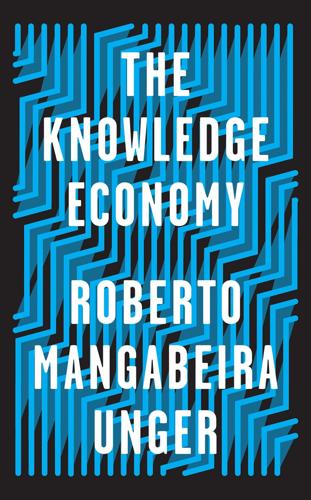
The Knowledge Economy
by
Roberto Mangabeira Unger
Published 19 Mar 2019
These recessions were prompted in part by the inability of debt, credit, and easy money, in the context of worldwide capital and trade imbalances, to make up for the lack of sustained rises in productivity and of broad-based, socially inclusive economic growth. It is also the reason why Keynes’s doctrine has proved sterile as the basis for a response to the contemporary discourse on secular stagnation. The thesis of secular stagnation attempts to give a semblance of naturalness and necessity to economic slowdown in contemporary societies. It does so by attributing stagnation to causes beyond our control, such as the supposedly smaller potential of contemporary technologies when compared to the technological innovations of a hundred years ago.
…
The goal of establishing an inclusive vanguardism—an economy-wide version of the most advanced practice of production—bears directly on the two overriding concerns of practical political economy: stagnation and inequality. A widespread and developed form of the knowledge economy offers the most promising way to promote socially inclusive economic growth and to diminish economic inequality. Under Alvin Hansen’s old label of “secular stagnation,” many economists have proposed to explain in recent years the persistent slowdown of economic growth. The figures measuring the growth of productivity chart the dimension of this slowdown. Consider the well-studied example of the US economy. From 1947 to 1972, labor productivity, which roughly tracks total factor productivity, rose in the United States by an average of 2.8 percent a year; from 1972 to 1994 by 1.5 percent a year; from 1994 to 2005 by 2.8 percent a year; and from 2005 to the present by 1.4 percent a year.
…
The slowdown in the growth of productivity since 1972, interrupted only by the turn-of-the-century spike, has been attributed to many of the factors emphasized by Hansen in the 1930s: the decline of population growth, the inadequacy of aggregate demand, and a “savings glut”—an excess of savings over consumption. One factor, however, largely absent from the older discussion of secular stagnation, has now taken center stage: the supposedly more limited transformative effect of contemporary technologies, especially in communication and information, when compared to the technological innovations of a hundred years ago. Consistently with this line of argument, we can explain the temporary rise in productivity growth in 1994–2005 as the result of a one-time phenomenon: the adoption of computers and other digital technologies by a wide range of mega-, large-, and medium-sized firms whose operations otherwise bear few traces of the now most advanced practice of production.
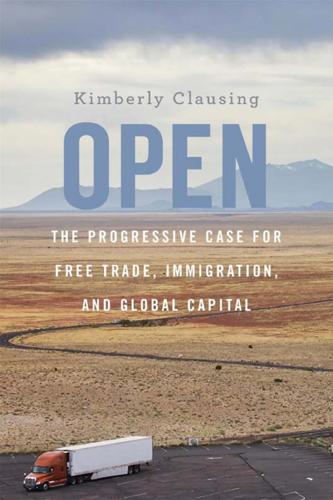
Open: The Progressive Case for Free Trade, Immigration, and Global Capital
by
Kimberly Clausing
Published 4 Mar 2019
See Figure 1 in Loukas Karabarbounis and Brent Neiman, “Declining Labor Shares and the Global Rise of Corporate Saving,” Working Paper 18154, NBER Working Papers, National Bureau of Economic Research, 2012. 29. Interested readers are referred to Larry Summers’s excellent pieces on these concerns. Lawrence H. Summers, “The Age of Secular Stagnation,” Larry Summers Blog, February 15, 2016. And Lawrence H. Summers, “Secular Stagnation and Monetary Policy,” Federal Reserve Bank of St. Louis 98:2 (2016), 93–110. 30. Treasury economists calculate that the fraction of the corporate tax base that consists of excess profits averaged 60 percent from 1992 to 2002, but has since increased to about 75 percent over the period 2003–2013.
…
See Germán Gutiérrez and Thomas Philippon, “Investment-Less Growth: An Empirical Investigation,” Working Paper 22897, NBER Working Papers, National Bureau of Economic Research, 2016. 15. On the savings glut, see: Ben S. Bernanke, “Why Are Interest Rates so Low, Part 3: The Global Savings Glut,” Brookings, April 1, 2015, https://www.brookings.edu/blog/ben-bernanke/2015/04/01/why-are-interest-rates-so-low-part-3-the-global-savings-glut/. On secular stagnation, see Lawrence H. Summers, “Secular Stagnation and Monetary Policy,” Federal Reserve Bank of St. Louis 98:2 (2016), 93–110. 16. See David Weil, The Fissured Workplace: Why Work Became So Bad for So Many and What Can Be Done to Improve It (Cambridge, MA: Harvard University Press, 2014). 17. Furman and Orszag, “A Firm-Level Perspective.”
…
Globally, since that year, corporations’ share of total savings has increased by about thirty percentage points (fig. 2.15).28 This staggering increase is mirrored by a declining share of global savings in the hands of households. Why are corporations doing more of the saving? Simply put, they are earning more of national income, as the capital share of income is rising relative to the labor share of income in most countries. These trends are related to the troubling issue of secular stagnation: rising corporate profits and changes in the distribution of income have increased savings, but investment opportunities are declining—which reduces economic growth. In the meantime, corporations are awash in cash.29 While we expect all businesses to earn some “normal” level of profit to justify their efforts, excess profits (above the normal rate) are now the norm in the US corporate sector.

Enlightenment Now: The Case for Reason, Science, Humanism, and Progress
by
Steven Pinker
Published 13 Feb 2018
Tucson, AZ: Center for Biological Diversity. http://www.esasuccess.org/pdfs/WildSuccess.pdf. Summers, L. H. 2014a. The inequality puzzle. Democracy: A Journal of Ideas, 33. Summers, L. H. 2014b. Reflections on the “new secular stagnation hypothesis.” In C. Teulings & R. Baldwin, eds., Secular stagnation: Facts, causes, and cures. London: Centre for Economic Policy Research. Summers, L. H. 2016. The age of secular stagnation. Foreign Affairs, Feb. 15. Summers, L. H., & Balls, E. 2015. Report of the Commission on Inclusive Prosperity. Washington: Center for American Progress. Sunstein, C. R. 2013. Simpler: The future of government.
…
Since then it has grown at a rate of around 0.6 percent, which would require more than a century to double.8 Some economists fear that low rates of growth are the new normal. According to “the new secular stagnation hypothesis” analyzed by Lawrence Summers, even those paltry rates can be maintained (in conjunction with low unemployment) only if central banks set interest rates at zero or negative values, which could lead to financial instability and other problems.9 In a period of rising income inequality, secular stagnation could leave a majority of people with static or falling incomes for the foreseeable future. If economies stop growing, things could get ugly.
…
Ideology of the good old days: Exaggerated perceptions of moral decline and conservative politics. In J. T. Jost, A. Kay, & H. Thorisdottir, eds., Social and psychological bases of ideology and system justification. New York: Oxford University Press. Eichengreen, B. 2014. Secular stagnation: A review of the issues. In C. Teulings & R. Baldwin, eds., Secular stagnation: Facts, causes and cures. London: Centre for Economic Policy Research. Eisner, M. 2001. Modernization, self-control, and lethal violence: The long-term dynamics of European homicide rates in theoretical perspective. British Journal of Criminology, 41, 618–38.

How Will Capitalism End?
by
Wolfgang Streeck
Published 8 Nov 2016
Re-reading what I said then, I see no reason to make modifications; in fact, in the short time of two years that has since passed, all five conditions became even more palpable. In the present section I will limit myself to just a few elaborations on oligarchy and corruption – the two, of course, being closely connected. Like secular stagnation, the private appropriation of public infrastructures, and global anarchy, they have in common that they critically weaken the systemic integration and stability of neoliberal capitalist societies.40 Beginning with oligarchic inequality – one could also speak of neo-feudalism – what matters here for the future of capitalism, or the lack of one, is not primarily that a tiny minority in today’s capitalist societies is becoming unimaginably rich.
…
In any case, in what looks like an afterthought, Gordon supports his prediction of low or no growth by listing six non-technological factors – he calls them ‘headwinds’ – which would make for long-term stagnation ‘even if innovation were to continue … at the rate of the two decades before 2007’.30 Among these factors he includes two that I argue have for some time been intertwined with low growth: inequality and ‘the overhang of consumer and government debt’.31 What is astonishing is how close current stagnation theories come to the Marxist underconsumption theories of the 1970s and 1980s.32 Recently, none other than Lawrence ‘Larry’ Summers – friend of Wall Street, chief architect of financial deregulation under Clinton, and Obama’s first choice for president of the Federal Reserve, until he had to give way in face of congressional opposition33 – has joined the stagnation theorists. At the IMF Economic Forum on 8 November last year, Summers confessed to having given up hope that close-to-zero interest rates would produce significant economic growth in the foreseeable future, in a world he felt was suffering from an excess of capital.34 Summers’ prediction of ‘secular stagnation’ as the ‘new normal’ met with surprisingly broad approval among his fellow economists, including Paul Krugman.35 What Summers mentioned only in passing was that the conspicuous failure of even negative real interest rates to revive investment coincided with a long-term increase in inequality, in the United States and elsewhere.
…
Whether this will be enough to restore global order, especially in light of China’s rise as an effective economic and, to a lesser extent, military rival to the United States may, however, be doubted. In summary, capitalism, as a social order held together by a promise of boundless collective progress, is in critical condition. Growth is giving way to secular stagnation; what economic progress remains is less and less shared; and confidence in the capitalist money economy is leveraged on a rising mountain of promises that are ever less likely to be kept. Since the 1970s, the capitalist centre has undergone three successive crises, of inflation, public finances and private debt.

The Great Demographic Reversal: Ageing Societies, Waning Inequality, and an Inflation Revival
by
Charles Goodhart
and
Manoj Pradhan
Published 8 Aug 2020
Diagram 5.1The household savings rate falls as the dependency ratio worsens (Source OECD) In steady state, with the dependency ratio constant, the personal sector savings ratio would be a positive function of the rate of growth, since working savers would put more aside for their old age than dissaving retirees. But dependency ratios are likely to worsen for decades to come and the growth rate of output to decline. Many of those who argue that personal sector savings will remain high enough to keep real interest rates and aggregate demand low (the secular stagnation camp) do so on the assumption that (i) the age of retirement will rise relative to the expected age of death, and/or (ii) that state benefits to the old will fall relative to the average income of workers. If either were to happen, the rate of increase of expenditure on the elderly would be less than the output generated by workers.
…
But now labour has retaliated, not at the wage bargaining table, but in the voting booth. Globalisation has been checked by populism, just at the time that demographic factors are swinging back to labour’s advantage. Meanwhile, those who extrapolate the recent past into the future, ignoring longer-run forces, are asserting that we will remain in secular stagnation. The slow-moving pendulum is about to swing back again. It may be that, for a year or two, we could combine even lower unemployment with price stability, but that will not last. The message of this chapter is that, not only is the long-run Phillips curve vertical at the NRU (u*), but also the position of u* is continuously and systematically shifting owing to longer-run demographic, political and economic forces.
…
But when inflation remains around 1%, as now in 2019, the ELB only becomes a serious constraint when the equilibrium real interest rate, r*, itself becomes negative, falling far below its prior typical values of 2.5 to 3.5%. And that is a real, and not just a nominal, monetary problem. The mainstream explanation of our times is precisely that, an r* that has indeed become negative. The secular stagnation thesis involves a variety of arguments (inequality and even the need for ageing societies to invest less are in the mix), to explain why r* has fallen and will remain low for the foreseeable future. Empirical estimates of r* regularly show estimates that are negative or very close to zero, backing up the claims of the secular stagnationists.
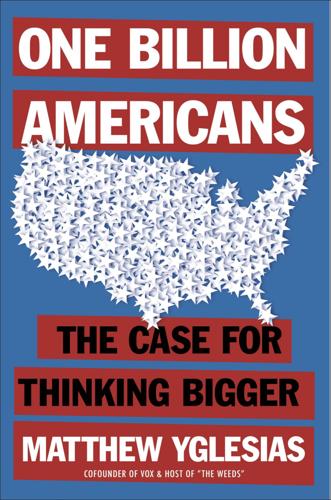
One Billion Americans: The Case for Thinking Bigger
by
Matthew Yglesias
Published 14 Sep 2020
Both interest rates and inflation have been low for years, and while that might change in the future, it’s not an immediate problem. Indeed, the low interest rates themselves are arguably a problem that more population growth could solve. Beating secular stagnation In the late 1930s, economist Alvin Hansen postulated that the American economy had entered a period of what he called secular stagnation, in which only large sustained budget deficits could prevent a recurrence of the kind of mass unemployment experienced during the Great Depression.* World War II delivered the deficits Hansen called for, and during the postwar demobilization period there was some concern that he might be right—though the next several decades clearly proved him wrong.
…
*Reihan Salam, “Alcohol Taxes Should Be Tripled,” Slate, May 27, 2014, https://slate.com/news-and-politics/2014/05/prohibition-lite-the-war-on-drugs-has-been-a-failure-but-the-war-on-alcohol-deserves-a-second-chance.html. *Alvin Hansen, “Economic Progress and Declining Population Growth,” American Economic Review, March 1939: 1‒15. *Larry Summers, “The Age of Secular Stagnation,” Foreign Affairs, February 15, 2016, http://larrysummers.com/2016/02/17/the-age-of-secular-stagnation. *Alissa Walker, “Five Myths About New York City Skyscrapers Debunked,” Curbed, October 6, 2016, https://ny.curbed.com/2016/10/6/13189862/nyc-skyscrapers-myths-jason-barr. *U.S. Department of Agriculture, Farming and Farm Income, September 2018, www.ers.usda.gov/data-products/ag-and-food-statistics-charting-the-essentials/farming-and-farm-income.
…
That meant that when the coronavirus pushed the global economy back into recession, there was only so much room to respond with rate cuts—raising the risk that high unemployment will persist even once the public health emergency passes. Population growth does not figure that centrally in Summers’s writing on secular stagnation, but it was at the heart of Hansen’s original analysis. The American Economic Review paper in which Hansen outlined it—and the earlier 1938 talk on which the paper was based—was titled “Economic Progress and Declining Population Growth,” and was founded on the basic observation that investment volume is on some level a function of the projected future population.
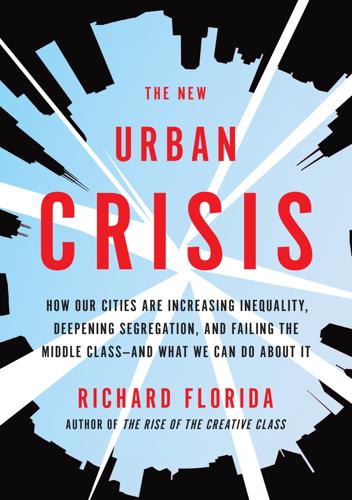
The New Urban Crisis: How Our Cities Are Increasing Inequality, Deepening Segregation, and Failing the Middle Class?and What We Can Do About It
by
Richard Florida
Published 9 May 2016
In addition, the New Urban Crisis Index tracks the political affiliations and voting patterns of metros: it is positively associated with more liberal metros (0.59), measured as the share of voters who voted for Clinton in 2016, and negatively associated with more conservative metros (–0.55), measured as the share of voters who voted for Trump in 2016. See Appendix Table 4 for the full rankings of all 350-plus metros on the New Urban Crisis Index. 3. On the concept of secular stagnation, see Timothy Taylor, “Secular Stagnation: Back to Alvin Hansen,” Conversable Economist, December 12, 2013, http://conversableeconomist.blogspot.ca/2013/12/secular-stagnation-back-to-alvin-hanson.html; Larry Summers, “U.S. Economic Prospects: Secular Stagnation, Hysteresis, and the Zero Lower Bound,” Business Economics 49, no. 2 (2014): 65–73, http://larrysummers.com/wp-content/uploads/2014/06/NABE-speech-Lawrence-H.-Summers1.pdf.
…
But even the affluent third of society who are thriving economically don’t feel as prosperous as they did in the past, because they live in expensive cities where securing their own, and their children’s, futures is growing more costly and increasingly difficult. Indeed, the New Urban Crisis is a big part of the reason why the economy has been unable to recover fully from the economic crisis and remains mired in what some call “secular stagnation.” That concept was originally used to describe the economic malaise of the Great Depression, when the economy was unable to generate the innovation, economic growth, and jobs required to raise living standards. Today, former treasury secretary Larry Summers believes we are stuck in a new era of stagnation, with the ongoing economic recovery operating in a lower gear than it could be, and failing to generate enough of the higher-paying jobs needed to restore the broad middle class.3 Summers, along with Nobel Prize–winning economist Paul Krugman and many others, believes that the best way out of this economic malaise is for government to stimulate the economy by spending more money on infrastructure.
…
ranking of, 16 (table), 17 real estate prices in, 22 renters in, 200–201 venture capital in, 9, 43, 44 (table), 45 wages in, 32 San Jose, CA, 30–32, 31 (table), 175 creativity in, 54–55 high-tech industry in, 42–43, 44 (table) Sandel, Michael, 103 Sanders, Bernie, 185 Santa Monica, CA, 45 Sassen, Saskia, 39 Saunders, Doug, 178–179 schools, investment in, 66, 207–208 Seattle, 41, 67, 155 creativity in, 54 high-tech industry in, 44 (table), 45–46 housing costs in, 29, 29 (fig.) secular stagnation, 188–189 segregation. See economic segregation Segregation-Inequality Index defined, 220 economic inequality and, 99, 112–114, 113 (fig.), 192, 220, 225 (table) self-employment, 179–180 Sellers, Jefferey, 165 Seoul, 16 (table), 17 service class creativity and, 206 defined, 217 disadvantages of, xiv, xvi, xviii, 6–7 family-supporting work for, 11, 202–206 growth of, 203 housing costs and, 37, 199 in Patchwork Metropolis, 122–123, 130–135, 137–139, 141–147, 149 segregation of, 104–108, 107 (table) wages of, 31–32 Shanghai, 44 (table), 45 Sharkey, Patrick, 117 Silicon Valley, 42, 45, 47, 175 Silva, Rohan, 36 SimCity, 13 Singapore, 16 (table), 17, 42 skyboxification, 103 Smith, Adam, 26 Smith, Patti, 35 social safety net, 204, 209–210 Social Security Act, 204 SoHo, xvi, 2, 19–20, 20 (fig.)
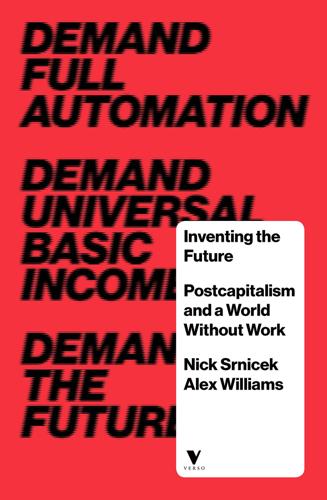
Inventing the Future: Postcapitalism and a World Without Work
by
Nick Srnicek
and
Alex Williams
Published 1 Oct 2015
World Economic Outlook 2015: Uneven Growth: Short- and Long-Term Factors (Washington, DC: International Monetary Fund, 2015), pp. 69–71, pdf available at imf.org. 133.We do not pretend to adjudicate between the competing explanations here, but merely point to the growing consensus about a new era of lower growth: Andrew Kliman, ‘What Lies Ahead: Accelerating Growth or Secular Stagnation?’ E-International Relations, 24 January 2014, at e-ir.info; Robert Gordon, Is US Economic Growth Over? Faltering Innovation Confronts the Six Headwinds, Working Paper, National Bureau of Economic Research, August 2012, at nber.org; Lawrence Summers, ‘US Economic Prospects: Secular Stagnation, Hysteresis, and the Zero Lower Bound’, Business Economics 49: 2 (2014); Tyler Cowen, The Great Stagnation: How America Ate All the Low-Hanging Fruit of Modern History, Got Sick, and Will (Eventually) Feel Better (New York: Dutton, 2011); Coen Teulings and Richard Baldwin, eds, Secular Stagnation: Facts, Causes and Cures (London: CEPR, 2014). 134.Cowen, Great Stagnation, pp. 47–8. 135.Thor Berger and Carl Benedikt Frey, Industrial Renewal in the 21st Century: Evidence from US Cities?
…
The left was largely without a meaningful and desirable economic programme, having focused primarily on the critique of capitalism rather than the elaboration of alternatives. This is a crisis of utopian imagination, but also of cognitive limits. A series of emerging contemporary phenomena must be thought through carefully: for instance, the causes and effects of secular stagnation; the transformations invoked by the shift to an informational, post-scarcity economy; the changes wrought by the introduction of full automation and a universal basic income; the possible approaches to collectivising automated manufacturing and services; the progressive potentials of alternative approaches to quantitative easing; the most effective ways to decarbonise the means of production; the implications of dark pools for financial instability – and so on.
…
Rousseau, General Purpose Technologies, Working Paper, National Bureau of Economic Research, January 2005, at nber.org; George Terbough, The Automation Hysteria: An Appraisal of the Alarmist View of the Technological Revolution (New York: W. W. Norton, 1966), pp. 54–5; Aaron Benanav and Endnotes, ‘Misery and Debt’, in Endnotes 2: Misery and the Value Form (London: Endnotes, 2010), p. 31. 25.Barry Eichengreen, Secular Stagnation: The Long View (Working Paper, National Bureau of Economic Research, January 2015), p. 5, pdf available at nber.org. 26.Kalyan Sanyal, Rethinking Capitalist Development: Primitive Accumulation, Governmentality and Post-Colonial Capitalism (New Delhi: Routledge India, 2013), p. 55. Notably, this means that this economic sector is eminently contemporary, rather than being a residue of some pre-capitalist mode of production. 27.Gabriel Wildau, ‘China Migration: At the Turning Point’, Financial Times, 4 May 2015, at ft.com; ‘Global Labor Glut Sinking Wages Means U.S.
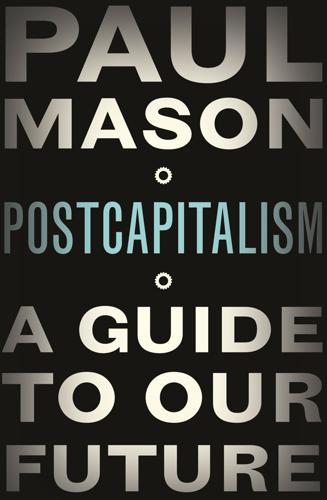
Postcapitalism: A Guide to Our Future
by
Paul Mason
Published 29 Jul 2015
Keynes, The General Theory of Employment, Interest and Money (Cambridge, 1936), p. 293: http://www.marxists.org/reference/subject/economics/keynes/general-theory/ch21.htm 12. http://www.ftense.com/2014/10/total-global-debt-crosses-100-trillion.html 13. http://www.internetworldstats.com/emarketing.htm 14. http://cleantechnica.com/2014/04/13/world-solar-power-capacity-increased-35-2013-charts/ 15. L. Summers, ‘Reflections on the New Secular Stagnation Hypothesis’, in C. Teulings and R. Baldwin (eds.), Secular Stagnation: Facts, Causes, and Cures, VoxEU.org (August 2014) 16. R. Gordon, ‘The Turtle’s Progress: Secular Stagnation Meets the Headwinds’ in Teulings and Baldwin (eds.), Secular Stagnation 17. http://www.constitution.org/mon/greenspan_gold.htm 18. http://www.treasury.gov/ticdata/Publish/mfh.txt 19. R. Duncan, The New Depression: The Breakdown of the Paper Money Economy (Singapore, 2012) 20. http://www.washingtonpost.com/blogs/wonkblog/wp/2013/01/18/breaking-inside-the-feds-2007-crisis-response/?
…
That is the assumption that has guided policy since 2008. Yet the persistence of low growth has now driven even mainstream economists beyond such complacency. Larry Summers, Treasury Secretary under Bill Clinton and an architect of bank deregulation, shook the economics world in 2013 by warning that the West faced ‘secular stagnation’ – that is, low growth for the foreseeable future. ‘Unfortunately,’ he admitted, low growth ‘has been present for a long time, but has been masked by unsustainable finances’.15 Veteran US economist Robert Gordon went further, predicting persistent low growth in the USA for the next twenty-five years, as a result of lower productivity, an ageing population, high debts and growing inequality.16 Remorselessly, capitalism’s failure to revive has moved concerns away from the scenario of a ten-year stagnation caused by overhanging debts, towards one where the system never regains its dynamism.
…
They are minimizing their exposure to being financially exploited, and maximizing their own ability to play in the financial markets. So while Husson and Shaikh successfully demonstrate a ‘falling profit rate’ prior to 2008, the crisis is a result of something bigger and more structural. Its cause (as Larry Summers suggested in his work on secular stagnation) is the sudden disappearance of factors that had compensated for inefficiency and low productivity for decades.29 The determination to trace crises in general to one abstract cause, ignoring the structural mutation that was actually going on, was the original source of confusion in Marxist theory.

On the Edge: The Art of Risking Everything
by
Nate Silver
Published 12 Aug 2024
People feel like this can’t happen anymore,” Twitter, August 6, 2022, twitter.com/jackclarkSF/status/1555992785768984576. GO TO NOTE REFERENCE IN TEXT no economic growth: Lawrence H. Summers, “Harvard’s Larry H. Summers on Secular Stagnation,” IMF, March 2020, imf.org/en/Publications/fandd/issues/2020/03/larry-summers-on-secular-stagnation. GO TO NOTE REFERENCE IN TEXT GDP has grown: Based on real GDP through the third quarter of 2023. GO TO NOTE REFERENCE IN TEXT considered extreme poverty: Max Roser, “Extreme Poverty: How Far Have We Come, and How Far Do We Still Have to Go?
…
Granted, this isn’t the most pressing concern—astronomers estimate we have about 5 billion years to go, so you should go ahead and pick up your dry cleaning. But roon also thinks humanity faces a lot of near-term threats. “We need technological progress,” he said. “Not to get too much into the tech-bro pseudo philosophy. But there’s a secular stagnation. There’s a population bomb[*7] going on. There’s a lot of headwinds for economic progress. And technology is really the only tailwind.” Despite his love of Twitter, roon could do without the Social Network era of Silicon Valley. “Even the Internet did not really give us what was promised…. There’s no real other technological boom happening right now that’s nearly as promising as AI.”
…
“There’s a lot of evidence in psychology that our bodies impact the way we think, and the way we conceptualize the world and the way we conceptualize other people isn’t captured in machines without bodies,” said Mitchell.[*45] Scientific and economic progress faces a lot of headwinds, and that changes the balance of risk and reward. In my conversation with roon, he used a “tech-bro” term: secular stagnation. Formally, this refers to a chronic condition of little or no economic growth, often coupled with low inflation and interest rates. Informally, it’s used more loosely. It doesn’t necessarily imply that the economy isn’t growing at all—in the U.S., for instance, GDP has grown at a rate of about 2 percent per year so far in the twenty-first century.
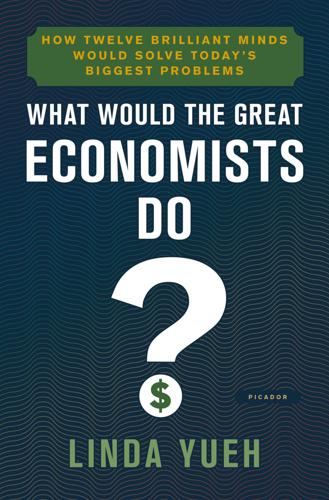
What Would the Great Economists Do?: How Twelve Brilliant Minds Would Solve Today's Biggest Problems
by
Linda Yueh
Published 4 Jun 2018
Unlike other recessions that saw a V-shaped output drop and quick recovery, the 2008 crisis has seen a sharp fall in national output or GDP (gross domestic product) but a sluggish recovery. Economists have become worried that this is our collective future. There’s even a term revived by Harvard economist Lawrence Summers to describe a slow-growth world: ‘secular stagnation’. This was a term used by Alvin Hansen in the 1930s after the last systemic banking crisis to describe the resultant slow growth due in part to ageing societies, among other issues.2 Japan is the forerunner here, as the most aged economy. How would Solow judge the slow post-crisis recovery, and would he agree that we face a slow-growth future?
…
Economies such as the United States, the euro area, Japan and the UK had been experiencing a marked slowdown in productivity growth since the mid 2000s. Some economists are warning about permanently slower growth in advanced economies, in part because their ageing populations will be less productive. Could these economies be facing what the former US Treasury Secretary and Harvard economist Lawrence Summers describes as ‘secular stagnation’? If so, then those countries face a worrying economic future. Fewer workers require fewer office buildings and less equipment, which also depresses investment and therefore the economic outlook. That point seems to be approaching: US labour force growth slowed to just 0.2 per cent in 2015, down from 2.1 per cent from the 1960s to 1980s; for the UK, the annual average rate of labour force growth is somewhat better, but it is still down to around 0.6 per cent.
…
Structural reasons include low capital investment and inefficient resource allocation, where workers are not moving from low- to high-productivity sectors. That can happen when there are high firm survival rates resulting in so-called zombie firms that have survived only due to the extraordinarily low interest rate environment. This is not just a UK problem, however. The term ‘secular stagnation’ has been revived as a concern for all developed economies and requires revisiting our models of growth. The slow recovery of the United States was what led Harvard economist Lawrence Summers to warn about a slow-growth future for advanced economies. At the forefront of this issue is Japan.
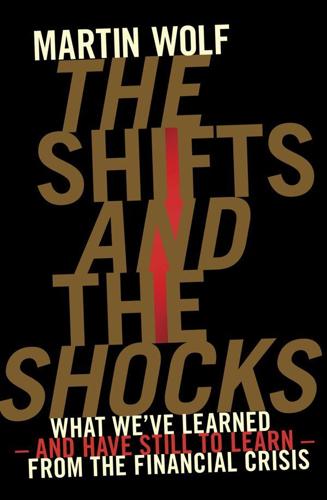
The Shifts and the Shocks: What We've Learned--And Have Still to Learn--From the Financial Crisis
by
Martin Wolf
Published 24 Nov 2015
This view fits with the analysis in Chapter Five of longer-term reasons why demand in the high-income countries had to be supported by aggressive monetary policy and an ultimately unsustainable credit boom, particularly after the Asian financial crisis and the collapse of the stock-market bubble of the late-1990s. The argument for secular stagnation made by Lawrence Summers is that demand has become structurally weaker over the past decade.37 Daniel Alpert’s The Age of Oversupply is about much the same thing.38 The principal piece of evidence of secular stagnation is, as Mr Summers also notes, the combination of rapidly growing credit and high asset prices with weak economies, even before the crisis hit. The first explanation for structurally deficient private-sector demand in the absence of credit bubbles is rising inequality.
…
These three underlying drivers – liberalization, technology and ageing – proceeded to shift the world economy into a new shape, one that created huge gross and net capital flows across borders, growing inequality within countries, radical shifts in the location of investment and the rise of liberalized credit. These shifts led high-income economies into ‘secular stagnation’ – a world of structurally deficient aggregate demand, identified by Lawrence Summers, the former US treasury secretary, following the Keynesian Alvin Hansen, who invented this term in the 1930s.54 These forces in turn help explain the low real rates of interest before 2007 and the still lower real rates after the crisis, which was caused in large part by the policy responses to pre-crisis recessionary forces.
…
So the question is whether one can do simple things that would make the system more or less on its present lines more robust, and if not what the alternatives might be. That is the subject of Chapter Seven. Third, this leads the discussion to the big macroeconomic challenges. How should we manage a world of savings glut – or, which comes to the same thing, excess supply? Is there a real chance of secular stagnation and, if so, what might be done about it? These are in fact plausible worries. In particular, our big problem is the addiction to ever-rising debt, and the most worrying debt is not the public debt with which policymakers are obsessed but private debt, whose collapse, as we have seen, creates huge public-sector debt problems.
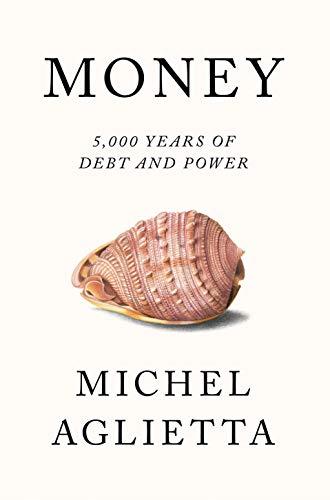
Money: 5,000 Years of Debt and Power
by
Michel Aglietta
Published 23 Oct 2018
On the one hand, the International Panel on Climate Change (IPCC)’s mean projection tells us that the world is on course for a 4°C rise in temperatures by the end of the century, and there is a non-negligible possibility of an extreme risk of around 6°C. On the other hand, the long-term growth slowdown in the advanced countries, so-called secular stagnation, persists thanks to the dramatic weakening of productive investment. According to the International Monetary Fund, at the end of 2014 aggregate productive investment in the advanced countries, measured in terms of real value, was 25 percent below the level it would have reached if the tendency prior to the 2008 crisis had continued.16 This anaemic capital accumulation is accompanied by very weak inflation, a drastic collapse in the price of raw materials, and a generalised rise in indebtedness, which has gripped the entire world.
…
We saw in Part I how untenable this hypothesis really is, and the historical analysis of this part has further confirmed this. Low-carbon investment is immersed in a both ecological and technological uncertainty, yet it is itself long term, with income flows staggered across time and with costs concentrated on the initial phase. In the current conditions of secular stagnation, characterised by a mass of idle savings and a low level of productive investment, organising a financial intermediation that could reallocate these savings with the aid of public guarantees for private risk-taking would mean retrieving a form of financial organisation that allowed the historical development of public transport.
…
What can monetary policy do, when numerous private agents are seeking massive debt reduction and when there is great reticence about investing in production? Of course, the result is chronically insufficient demand and lasting low growth rates. This owes essentially to the cumulative fall in investment in production. This ‘low-pressure’ macroeconomic balance is called secular stagnation. In response, central banks attempt to revive confidence. But they encounter a sizeable obstacle in the general disappearance of inflation and, in particular, in the falling prices in the economic sectors most linked to the production of means of production (the prices of raw materials, the prices of the intermediate products of first-stage processing, and the prices for producing industrial products).

The Levelling: What’s Next After Globalization
by
Michael O’sullivan
Published 28 May 2019
National Bureau of Economic Research, “US Business Cycle Expansions and Contractions,” http://www.nber.org/cycles.html. 6. L. Summers, “The Age of Secular Stagnation: What It Is and What to Do About It,” Foreign Affairs, March–April, 2016, https://www.foreignaffairs.com/articles/united-states/2016-02-15/age-secular-stagnation. In addition, a speech by Claudio Borio, chief economist at the Bank for International Settlements, examines some of the financial and monetary factors associated with low interest rates and, by association, low growth. Borio, “Secular Stagnation or Financial Cycle Drag.” 7. Gordon, “Is U.S. Economic Growth Over?” 8. Bloom, Jones, van Reenen, and Webb, “Are Ideas Getting Harder to Find?
…
So, as QE has continued, its long-run net effect has become steadily less economically impactful.14 The initial changes in both market returns and growth in response to quantitative easing were strong, but in the period running up to the election of Donald Trump as US president, the immense effort of central banks had produced a lingering, lethargic recovery. Economic growth and inflation had failed to respond to additional waves of QE, so much so that economic commentators spoke of “secular stagnation” and a “new normal” (lower growth being normal). As Atif Mian and Amir Sufi’s book House of Debt notes, consumers who were encumbered by already-high levels of household debt, lower house prices, and an uncertain economic outlook saved extra cash or used it to pay off debt rather than spend it.
…
(All views and opinions expressed in the book are his own and do not in any way reflect the views or position of any investment firm.) Follow The Levelling Instagram: @levellingbook Twitter: @levellingbook YouTube: The Levelling (youtube.com/user/thelevelling) BIBLIOGRAPHY Acemoglu, D., and P. Restrepo. “Secular Stagnation? The Effect of Aging on Economic Growth in the Age of Automation,” National Bureau of Economics Research (NBER) Working Paper 23077, January 2017. Acemoglu, D., and J. Robinson. Why Nations Fail: The Origins of Power, Prosperity, and Poverty. Crown Business, 2012. Achen, C. H., and L. M. Bartels.
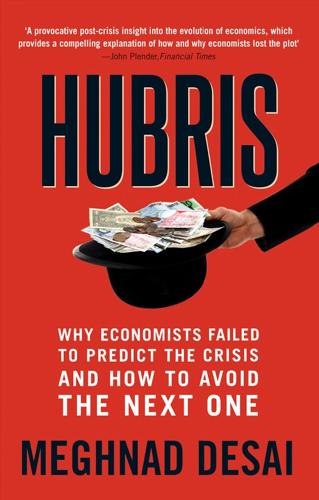
Hubris: Why Economists Failed to Predict the Crisis and How to Avoid the Next One
by
Meghnad Desai
Published 15 Feb 2015
As the crisis in the developed economies continues, the best that is on offer is a slow recovery; the high growth rates of 1992–2007 are not likely to return anytime soon. Indeed the fashionable talk is of “secular stagnation,” led by Larry Summers, sometime Harvard professor and president, Treasury Secretary and a senior advisor to President Obama.7 This was also the pessimistic prediction of Alvin Hansen, the American proselytizer of Keynes. Hansen argued in the immediate postwar years that the US would be trapped in a secular stagnation. This was because he shared Keynes’s idea that there would be oversaving and few investment opportunities for a rich country. He had also taken an interest in Kondratieff cycles and surmised that the US would be in the downswing of a Kondratieff cycle.
…
Previously the upswing from 1890/96 onward ended with World War I in 1914 for Europe, though it continued for the US. The financial crash of 2008 was unprecedented and has to be cited as the one reason why the upswing was cut short. But if the upswing ended sooner than expected, we may have to conjecture that we are now in a long downswing. Secular stagnation is here. To explore its likely effects we could go back to a previous Kondratieff downswing of the late nineteenth century. This lasted from 1870/75 to 1890/96. Prices fell steadily during this period due to a transport revolution which brought commodities from the Antipodes to Europe and also improved technology in manufacturing.
…
(i), (ii) Rothschilds (i) Roubini, Nouriel (i) Royal Charter, grants of monopoly (i) rules of competition (i) Russia (i), (ii) Russian revolution (i), (ii) saltwater economists (i), (ii) Samuelson, Paul (i), (ii), (iii), (iv) “Analytical Aspects of an Anti–Inflation Policy” (with Robert Solow) (i) Say, Jean-Baptiste (i) Say’s Law (i), (ii) scarcity value (i) Scholes, Myron (i), (ii), (iii) Schumpeter, Joseph (i), (ii), (iii), (iv) The Theory of Economic Development (i) Schwartz, Anna, A Monetary History of the United States (with Milton Friedman) (i) Scottish Enlightenment (i) Second International (i) secular stagnation (i) securitization of mortgages (i) seigniorage privilege (i) self-interest (i) self-organizing society (i) self-sufficiency (i) service sector (i), (ii) servomechanism (i) shadow banking structure (i) shares (i) Sherman Act (i) Shiller, Robert (i), (ii) shocks (i), (ii), (iii) contagion (i) debt crises (i) political (i) see also oil shock short cycles (i) short-run rate of interest (i) Silesian weavers (i) single global currency (i) skills, types needed (i), (ii) slack (i) slavery, abolition of (i) Slutsky, Eugen (i), (ii), (iii) Smith, Adam (i), (ii), (iii), (iv), (v) the founding of the political economy (i) An Inquiry into the Nature and Causes of the Wealth of Nations (i), (ii) The Theory of Moral Sentiments (i), (ii) social science, founding (i) Socialist International (i) society regulation (i) self-organizing (i) Solow, Robert (i), (ii), (iii) “Analytical Aspects of an Anti–Inflation Policy” (with Paul Samuelson) (i) sovereign debt crises (i), (ii) Soviet Union, break up (i), (ii) speculation (i) speculative motive (i), (ii) stag-deflation (i) stagflation (i), (ii), (iii) Stalin, Joseph (i) static vision (i) statistics (i) development of (i) historical research (i) usefulness (i) sterling, as reserve currency (i) stochastic calculus (i) stock market crash, London (i) stock markets bull run (i) competition (i) computer technology (i) stock prices, randomness (i) Stockholm School (i) Stop-Go cycle (i) policy (i) Summers, Larry (i) surplus value (i) sustainable recovery, sources of (i) Sutcliffe, Robert (i), (ii) sweetwater economists (i), (ii) Sweezy, Paul (i) System of Natural Liberty (i) T bills (i), (ii), (iii) tatonnement (i) tax cut, US (i) technical progress, role of (i) technological innovations author’s experiences (i) displacement effect (i), (ii) and manufacturing location (i) see also computer technology technological shocks (i) telecommunications (i) Thailand, Crisis, 1997 (i) Thatcher, Margaret (i) theories, need for validation (i) theory of economic behavior of the household (i) Thornton, Henry (i) time, role of (i) time series data (i) Tinbergen, Jan (i) Tobin, James (i) Tobin tax (i) total money supply, and prices (i) total output, heterogeneity (i) trade doctrine see under Ricardo trade-off, unemployment and inflation (i) trade surpluses, banking (i) trade unions effect on money wage (i) as harmful (i) power (i) rise of (i) strengthening (i) weakening (i) transactions motive (i) transmission mechanism (i) Troubled Assets Recovery Program (TARP) (i) true costs of production (i) Truman, Harry (i) trusts (i) Tugan-Baranowsky, Michael (i) Turkey (i) Turner, Adair, Lord (i) Two Treatises on Government (Locke) (i) uncertainty (i) underemployment equilibrium (i), (ii), (iii) undersaving (i), (ii) unearned income (i) unemployment aggregate level (i) cycles (i) effect of wages (i) explaining (i) and inflation (i) involuntary (i) and money wage (i) natural rate (i) see also Keynesian models unifying principle (i) unique static equilibrium, and moving data (i) unit labor costs (i) United Kingdom budget deficit elimination (i) deindustrialization (i) economic trajectory (i) Great Depression (i) monetarism (i) recovery strategy (i) see also Britain United Nations Industrial Development Organization (UNIDO) (i) United States budget deficit (i) deindustrialization (i) econometric modeling (i) economic trajectory (i) economic weakness, post WWI (i) fiscal boost (i) Gold Standard (i) Great Depression (i) interest rates (i) Keynesianism (i) post-World War I power (i) post-World War II (i) Progressive Movement (i) prosperity (i) recovery strategy (i) seigniorage privilege (i) tax cut (i) trade deficit (i) welfare state expansion (i) westward expansion (i) withdrawal of currency (i) see also America unorthodoxy (i) urbanization (i) US House of Representatives, Greenspan’s testimony (i) usury defining (i) laws (i) prohibition (i), (ii) utopianism (i), (ii) valuation of assets, theory of (i) of capital (i) value vs.price (i) as price (i) relative (i), (ii) value added (i) value of goods, determination (i) variable costs (i) variables (i) Vietnam War (i) visions of economy (i) vocabulary, economic (i), (ii), (iii) volition (i) wage agreements, voluntary (i) demands, post-World War I (i) downward trend (i) effect on unemployment (i) rates, and unemployment (i) restraint (i) rises (i) share: declining (i); developed and developing economies (i); rise in (i), (ii) wage/profit distinction (i) units (i), (ii) see also money wages; real wages Walras, Antoine Auguste (i) Walras, Léon (i), (ii) Walrasian model (i) wars, financing (i) wealth distribution (i) inequality of (i) indicators (i) Smith’s theory (i) weaving, mechanization (i) welfare economics (i) welfare state, levels of support (i) White, Harry (i) Wicksell, Knut (i), (ii) basis of Hayek’s theory (i) later development of ideas (i) Wicksellian boom, developing countries (i) Wicksellian cycle, combined with Kondratieff cycle (i) William III (i) women, in workforce (i) workers dependence on capitalists (i) living standards (i) migration (i) productive/unproductive (i) workforce, recruitment of women (i) World Trade Organization (WTO) (i), (ii) World War I (i) World War II, outbreak (i) yields (i) Zombie firms (i)
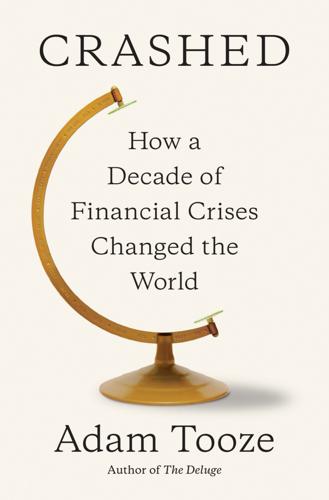
Crashed: How a Decade of Financial Crises Changed the World
by
Adam Tooze
Published 31 Jul 2018
Reinhart and Rogoff, This Time Is Different. 10. P. Krugman, “The Big Fail,” New York Times, January 6, 2013. 11. L. H. Summers, “US Economic Prospects: Secular Stagnation, Hysteresis, and the Zero Lower Bound,” Business Economics 49, no. 2 (2014): 65–74. 12. For an outstanding elaboration of the breadth of Summers’s argument see B. DeLong, “Three, Four . . . Many Secular Stagnations,” Grasping Reality with Both Hands (blog), January 7, 2017, http://www.bradford-delong.com/2017/01/three-four-many-secular-stagnations.html. 13. L. H. Summers, “The Inequality Puzzle: Piketty Book Review,” DEMOCRACY: A Journal of Ideas 32 (Spring 2014). 14.
…
In 2009–2010 the recovery had started strongly, but since then economic growth had relapsed to a depressing extent. Where was the “bounce”? What was wrong? Growth Disappointing: Potential GDP Estimates of 2007 and 2013 Compared to Actual GDP (2013 Dollars) Source: Taken from L. H. Summers, “U.S. Economic Prospects: Secular Stagnation, Hysteresis, and the Zero Lower Bound,” Business Economics 49, no. 2 (2014): 65–74. Data: CBO. The conventional view was that the United States was suffering from the aftereffects of an exceptionally severe financial crisis. This was no ordinary business cycle. It would take time for markets and balance sheets to recover.9 It was precisely to avoid such hangovers that economists like Reinhart and Rogoff argued for financial restraint.
…
The hypothesis that Summers suggested to his audience at the IMF in November 2013 was disconcerting and unfamiliar; so jarring, in fact, that Summers, who is not given to either modesty or self-doubt, acknowledged, “[T]his may all be madness, and I may not have this right at all.” But in light of the data, the question had to be put: What if the inadequate recovery was not simply down to policy failure? What if there was a deeper problem, a chronic shortfall in the demand for investment relative to the supply of savings, resulting in a sustained condition of “secular stagnation”? To see the force of this argument, Summers invited his surprised audience to look back to the period before the crash. In retrospect, everyone agreed that monetary policy before 2008 had been “too easy. . . . [T]here was a vast amount of imprudent lending going on. Almost everybody believes that wealth, as it was experienced by households, was in excess of its reality.
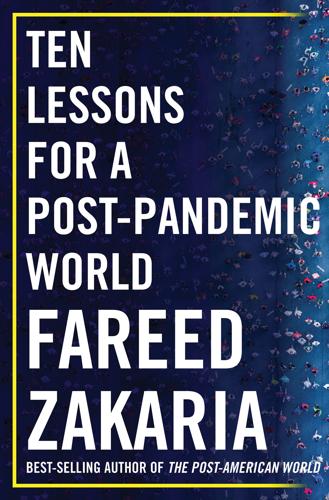
Ten Lessons for a Post-Pandemic World
by
Fareed Zakaria
Published 5 Oct 2020
(The lecture had the cringeworthy title, “The Relations of the Advanced and the Backward Races of Mankind.”) 185 The Great Illusion: Norman Angell, The Great Illusion: A Study of the Relation of Military Power in Nations to Their Economic and Social Advantage, 3rd ed., 1911, https://archive.org/details/greatillusion00angeiala. 186 return to the peaks: Obstfeld, “Globalization and Nationalism.” 186 rise of a new great power and the unease this creates in the existing hegemon: see Thucydides, “It was the rise of Athens and the fear that this inspired in Sparta that made war inevitable,” as quoted in Graham Allison, Destined for War: Can America and China Escape Thucydides’s Trap? (London: Scribe, 2017). Lesson Nine: The World Is Becoming Bipolar 187 “failed state”: George Packer, “We Are Living in a Failed State,” Atlantic, June 2020. 187 “secular stagnation”: Lawrence H. Summers, “Reflections on Secular Stagnation,” February 19, 2015, remarks at Princeton University’s Julis-Rabinowitz Center for Public Policy and Finance. 187 highlighted rising inequality: See, inter alia, Thomas Piketty, Capital in the Twenty-First Century (Cambridge, MA: Harvard University Press, 2013). 187 “deaths of despair”: Anne Case and Angus Deaton, Deaths of Despair and the Future of Capitalism (Princeton, NJ: Princeton University Press, 2020). 188 Fintan O’Toole: Fintan O’Toole, “Donald Trump Has Destroyed the Country He Promised to Make Great Again,” Irish Times, April 25, 2020.
…
We cannot—nor should we—stop emerging powers from growing nor prevent technological progress. We can only navigate through the times and trends we face, and do it poorly or well. We will face tough economic headwinds in the future. New trends—pandemic fears and protectionism—will compound deeper structural shifts like demographic decline and “secular stagnation,” so that growth, at least in the developed world, is likely to stay slow for the foreseeable future. But there are ways to encourage dynamism and also spread opportunities around to more people. Regulations, properly tailored, can ensure that competition is free and fair. Tax policies can be geared to help workers more and capital less.
…
The sense of shock prompted by the pandemic and America’s hapless response was real, but it came against the backdrop of growing worries about the state of the country. Since the 2008 financial crisis, which soiled America’s reputation, many had feared that the country was in deep trouble. Some economists wrote about slowing productivity and growth—“secular stagnation.” Others highlighted rising inequality, while still others the striking rise in mortality caused by alcoholism, drug use, and suicide—the so-called deaths of despair. The election of a reality TV star in 2016 was a sign of the collapse of politics. (Even those who saw Trump as a savior believed that the system was broken; they just thought that he was the solution.)

The Great Surge: The Ascent of the Developing World
by
Steven Radelet
Published 10 Nov 2015
Former secretary of the Treasury and Harvard professor Lawrence Summers worries that the United States and other leading economies may be entering a period of “secular stagnation,” with structural changes in the global economy such that a return to past growth rates might not be feasible. Economic growth has rebounded much less quickly than many expected, and output remains far below its potential. Japan is in its second decade of slow growth, with a GDP today far lower than anyone would have predicted twenty years ago. Global investment and aggregate demand have remained tepid despite low interest rates. Summers does not argue that secular stagnation in the advanced economies is inevitable but that it could become the reality if policy makers do not take steps to heighten demand such as increasing public investment in infrastructure and changing regulations to spur private investment in alternative energy sources.2 Northwestern University economist Robert Gordon sees other forces working to slow long-term growth in the United States.
…
The quote from James Kelly comes from his speech “U.S.-Thai Relations After September 11, 2001,” to the Asia Foundation in Bangkok on March 13, 2002, http://avalon.law.yale.edu/sept11/kelly_002.asp. 2. For a series of articles in which Summers lays out his views on secular stagnation, see his webpage: http://larrysummers.com/secular-stagnation. 3. See also Robert Gordon, “Is U.S. Economic Growth Over? Faltering Innovation Confronts the Six Headwinds,” working paper 18315, National Bureau of Economic Research, Cambridge, MA, August 2012, www.nber.org/papers/w18315.pdf. 4. Press Information Bureau, Government of India, Prime Minister’s Office, “Sixth BRICS Summit—Fortaleza Declaration,” July 16, 2014, paragraphs 5 and 18, http://pib.nic.in/newsite/PrintRelease.aspx?
…
W., 143 Delhi, 287 democracy, 3, 5, 6–7, 9, 16, 21, 22, 23, 97, 146–50, 162, 232, 294, 296, 303, 309 in Africa, 135, 145 Asian values and, 121, 122–23 in Brazil, 186–87 capitalism and, 146, 149 development and, 125 expansion of, 248–49 failures of, 11, 263–64, 273 famines and, 128 and fundamentalist Islam, 265 globalization and, 157 improved governance and, 197–99, 199 lack of attention to increasing, 10 measurement of, 106–15, 110 and oil-exporting countries, 114–15 pessimism over, 120–25 poor countries as, 98 poverty and, 121 in retreat after World War I, 146–47 reversals in, 113–14 rise of, 103–6, 105, 110 slowing down of growth of, 233 demographics, changing, 21 dengue fever, 205 Deng Xiaoping, 43, 185, 289 reforms of, 35, 192 resignation of, ix–x, 123, 134–35 Derg, 100, 187 Desai, Raj, 260 developing countries, 9, 40 challenges to, 294 lack of growth in, 8, 11 as playing substantial role in global markets, 52 skilled leadership needed for, 234 trade between, 47, 262 see also progress in developing countries Development as Freedom (Sen), 19, 127 development assistance, 307–8 development traps, 118 Dhaka, 277 Diamandis, Peter, 300 Diamond, Jared, 13 Diamond, Larry, 110–11, 186 diamonds, 206, 207, 284, 285 Diaoyu, 288 Diarra, Adama, 265 diarrhea, 10, 73, 75, 92, 94, 173, 215 dictatorships, 6, 7, 11, 99–101, 102, 125–29, 143–45, 222–23 private investments and, 223 Dietrich, Simone, 223 Dioura, Cheick, 265 diphtheria, 94, 161 disaster relief, 38 disease, 4, 15, 19, 21, 205, 266–68, 294 attention to, 10 noncommunicable, 268 see also specific diseases Djiguiba, Ansema, 108 Djiguiba, Sulamo, 108 Doe, Samuel, 99, 145 Doha round, 258, 298 Dollar, David, 65, 225 Dominican Republic, 6, 36, 47 aid to, 223 cocoa farmers in, 163 democracy in, 7, 106 exports from, 56 fall of poverty in, 36 growth in, 6, 45, 50, 128 Douglas DC-8, 168 drought, 171, 215 Drought Tolerant Maize for Africa Project, 171 Duarte, José Napoleón, 100 Dubai, 155 Duflo, Esther, 14, 31, 88 Dunning, Thad, 223 Duvalier, François “Papa Doc,” 222 Duvalier, Jean-Claude “Baby Doc,” 127 Duvalier family, 11, 100, 114, 141 East Asia, 5, 7, 50, 167 extreme poverty in, 36 growth in, 141 Easterlin, Richard, 86 Easterly, William, 213 Eastern Europe, 36, 141, 147, 148 trade and, 159 East Germany, x, 134 Ebola, 8, 10, 20, 22, 82, 205, 255, 266 economic growth, 37–38, 47–51, 49, 51, 86, 213 aid and, 224–27 cause of, 52–53 democracy and, 128–29 and poor, 63–65 sustainability of, 61–63 economic reforms, 192–97, 193, 194, 195, 196 Ecuador, 36, 47, 106 education, 4, 5, 6, 16, 24, 31, 77, 85–89, 88, 94–96, 154, 161, 164, 190–91, 191, 232, 247–48, 251, 258, 260–61, 262, 303, 306, 307 in Afghanistan, 215 aid and, 226 in Asia, 201 in Brazil, 187 conflict and, 118–19 of girls, 85–90 health and, 89–93, 205 Egypt: coup in, 113, 124–25, 185 demonstrations in, 281 ORT in, 173 poverty in, 36–37 in Six-Day War, 285 Ehrlich, Paul, 274, 275 Eichengreen, Barry, 236 election monitoring organizations, 110 elections, 198, 262 electricity, 216, 233, 278 electronics, 56, 165 El Salvador, 36, 39, 121 child mortality in, 84 democracy in, 123 dictatorship in, 99–100 war in, 100 End of History and the Last Man, The (Fukuyama), 148–49 energy, 21, 22, 162, 233, 235, 261, 258, 275, 277, 292, 293 environmental degradation, 1, 4, 8, 63, 163 Equatorial Guinea, 114, 184, 223 eRanger “ambulance,” 175 Eritrea, 49, 50 Ershad, Hussain Muhammad, 144 Essay on the Principle of Population, An (Malthus), 270 Essebsi, Beji, 124 Estrada, Joseph, 264 Ethiopia, 141, 144, 159, 285 aid to, 224 China’s example followed by, 266 dictatorship in, 100 growth in, 7, 50, 125, 238, 261 HIV in, 174 individual leadership in, 187 textiles from, 56 Europe, 19, 25, 167, 292, 300 democracy in, 296 leadership needed by, 234 post–World War II boom in, 262 European Union, 202, 259, 297 Executive Index of Electoral Competitiveness, 108 Extractive Industries Transparency Initiative, 306 factories, 165, 235 in Indonesia, 201 Falkland Islands, 100 famine, 4, 10, 128, 232 in Bangladesh, 271 in China, 35 after global food crisis (2007), 12 Fascism, 104, 124, 146, 147, 184, 265, 309 Fate of Young Democracies, The (Kapstein and Converse), 198 fertility rates, 73–74, 80–81, 84–85, 85, 95, 306 finance, 45, 158–61, 163, 234, 241, 305 financial flows, 17, 156, 157, 160, 306 Finland, malaria in, 210 flood, 171, 215, 226 floods, 281 Florecot, 47 food, 56, 79–80, 213, 233, 277, 280, 307 Food and Agriculture Organization, 79, 280 food assistance, 38 food prices, 54, 273, 301–2 food production, 294, 301 food security, 21, 22 Ford Foundation, 170 foreign aid, 10, 12, 18–19, 209–27 bureaucracy of, 222 criticisms of, 218–24 debate over, 213–14, 227 and diversion of government funds, 221–22 growth and, 224–27 monitoring of, 222 as poorly designed, 221 priorities of, 221 foreign direct investment (FDI), 149, 154, 157, 165 foreign exchange reserves, 192 forest loss, 280 Fossati-Bellani, Gabriel, 44 fossil fuels, 301 France, 47, 68, 140 Franco, Itamar, 186 freedom, 127, 131, 161, 198–99, 232 Freedom House, 107–8, 113, 182, 198 Freedom in the World index, 107–8 free markets, 148–49 free trade, 163–64 Friedman, Milton, 213 fuel efficiency standards, 297 Fujimori, Alberto, 185 Fukuyama, Francis, 148–49, 186, 288, 296 fundamentalist Islam, 124 G-7, 298 G-20, 298 Galiani, Sebastian, 227 Gallup, John, 210 Gambia, The, 113, 124, 190 Gandhi, Mohandas K., 293, 294 Gang of Four, 185 Gap, 164 garments, 56, 59 gas, 44, 139 Gates, Bill, 83–84, 213, 217 Gates, Robert, 20 Gdańsk, 103 Gelb, Alan, 205 General Agreement on Tariffs and Trade (GATT), 156, 258 General Electric, 159 genetically modified foods (GMOs), 171–73 genocide, 142 Georgia, 50, 143 growth in, 128, 238 Germany, 250, 298 germ theory, 77 Gerring, John, 129, 248 Getting Better (Kenny), 93 Ghana, 37, 127 aid to, 223 coastal vs. isolated areas in, 201 data entry firms in, 178 democracy in, 106, 122, 188–90 growth in, 6, 7, 22, 45, 50, 128, 261 oil exported by, 53 reforms in, 192 trade encouraged by, 155 Gill, Indermit, 261 Gini coefficient, 66, 70 glasnost, 134 Global Alliance for Vaccines and Immunizations (GAVI), 95, 161 global financial crisis, 12, 52–53, 113, 191, 233, 235, 257, 264, 269, 295, 305 global food crisis, 12, 280–81 Global Fund to Fight AIDS, Tuberculosis and Malaria, 95, 212 Global Health 2035 Commission, 91, 245, 267, 284, 306 global integration, 52 globalization, 17, 19, 131, 150, 158–61, 160, 162, 163–66, 183, 200, 207, 264, 287–88 technology and, 166 Global Malaria Eradication Program, 211–12 gold, 139, 152, 206 Golden Rice, 172 Gorbachev, Mikhail, 133, 134, 143 Gordon, Robert, 257–58 governance, 4, 5, 8, 17, 184, 197–99, 199, 201, 292–93, 294, 304, 307, 309 aid and, 214 and poverty traps, 15 and resource curse, 206 see also democracy Great Britain, 47, 68 colonialism of, 140 Zimbabwe’s independence from, 180 Great Depression, 126, 146 Great Famine, 284 Great Leap Forward, 35, 81, 128, 153 Greece, 105 Green Bay, Wisc., 60 Greenland, 280 Green Revolution, 38, 79, 170–73, 204, 214, 215, 274, 302 Guatemala, 18, 36 coup in, 100 war in, 145 Guinea: demonstrations in, 281 Ebola in, 82 health system in, 266 violence in, 206 Guinea-Bissau, 49, 50 guinea worm, 214 Guns, Germs, and Steel (Diamond), 13 Guntur, 31 H1N1 flu, 20, 82, 267, 269 Hafizibad, 178–79 Haiti, 8, 10, 11, 49, 50, 185, 213 aid to, 224 child mortality in, 82 and democracy, 248 demonstrations in, 281 dictatorship in, 100, 114, 127, 141, 222 earthquake in, 224 health improvements in, 93 lack of growth in, 50 poor governance in, 106, 114 Hansen, Henrik, 226 Harris, Gardiner, 270 Hartwick’s rule, 62 Havel, Václav, 143, 149, 184 Haves and the Have-Nots, The (Milanovic), 65 health, 3, 4, 5, 6, 7–8, 16, 17, 24, 94–96, 154, 161, 164, 166, 178, 232, 233, 234, 245–46, 248, 258, 260–61, 262, 266–69, 303, 306, 307 aid and, 226 in Asia, 201 in Brazil, 187 in China, 201 conflict and, 118–19 education and, 89–93, 205 and poverty traps, 15 technology and, 173–75, 179, 293 health care, 86 health services, 248 Heath, Rachel, 59 He Fan, 298 Henry, O., 97 Hindu nationalists, 287 Hitler, Adolf, 127, 146 HIV/AIDS, 20, 75, 81–82, 83, 94, 95, 173, 174–75, 182, 205, 214, 221, 246, 266 Hobbes, Thomas, 24 Honduras: coup in, 97–98 crime in, 264 war in, 145 Hong Kong: British control of, 153 and globalization, 155 growth in, 147 hookworm, 205 housing, 24, 307 humanitarian relief, 213 human rights groups, 110 Hungary, 7, 143 illiberalism in, 255, 263 protests in, 134 trade encouraged by, 155 Huntington, Samuel, 104, 105, 112, 121, 122, 146, 197, 265, 296 Hussein I, King of Jordan, 187 illiberal democracy, 264 immunization, 94, 178 income, 3, 5, 8, 17, 25, 31, 32, 40, 77, 94, 294 in Africa, 12 in China, 201 climbing, 240–41, 240 doubling of, 4, 5–6, 44 education, health and, 89–93 falling, 11, 49 income inequality, 65–71 between countries, 69–71, 70 within countries, 65–69 incubators, 175 independence from colonialism, 140–43 India, 3, 7, 22, 32–33, 37, 127, 159, 203, 289, 292, 297 colonialism in, 140 data entry firms in, 178 demand in, 53 as democracy, 98, 122, 123, 126 economic reforms in, 192 emigration from, 284 floods in, 281 future of, 234 growth in, 6, 8–9, 17, 21, 45, 50, 71, 128, 235, 237 inequality in, 69–70 infrastructure financing in, 259–60 innovation in, 302 malaria in, 211 natural capital in, 63 Pakistan’s wars with, 141, 145 poverty reduction in, 244 slowdown in growth of, 237, 255, 257, 262 software companies in, 56 terrorism in, 287 trade encouraged by, 155 universities in, 247 water demand in, 279 Zheng He’s trip to, 152 Indian Institute of Technology, 247 Indonesia, 10, 36, 124, 127, 184, 289 agriculture in, 58–59, 204 aid for schools in, 216 aid to, 214, 223 benign dictatorship in, 126 child mortality in, 85 colonial legacy in, 136–40 demand in, 53 democracy in, 106, 112, 114, 115, 122, 123, 124, 250 demonstrations in, 281 as dictatorship, 99, 122 factories in, 201 fertility rates in, 85, 85 growth in, 6, 7, 22, 38–39, 50, 71, 125–26, 128, 147, 233, 238, 242, 262 healthcare in, 95 individual leadership in, 187 Nikes from, 56 population growth in, 85 rice yields in, 215–16 terrorism in, 286 timber, 223 Zheng He’s trip to, 152 industrial equipment, 165 industrial revolution, 24, 25, 77, 135, 166, 300 industry, 45, 56, 260 inequality, 258 infant mortality, 92, 118, 175, 306 in South Africa, 183 infectious diseases, 92 inflation, 11, 192 in Africa, 12 information, 166, 234 information revolution, 175–79, 176 infrastructure, 164, 201, 207, 262 aid projects for, 216 Inkatha Freedom Party, 182, 185 innovation, 234, 258, 292, 294 in China, 236 Institute of World Economics and Politics, 298 institutions, 200, 294, 297–98, 303–4 and resource curse, 206 insurance companies, 241 insurance markets, 305 interest rates, 233, 305 Intergovernmental Panel on Climate Change (IPCC), 282 International Maize and Wheat Improvement Center (CIMMYT), 171 International Monetary Fund (IMF), 102, 235, 237, 239, 258, 259, 260, 298, 309 International Rice Research Institute (IRRI), 171, 215–16 internet, 162, 175, 233, 300 investment, 6, 20, 22, 52, 156, 157, 166, 301, 304–5, 306 in Africa, 12 in technology, 234, 246 Iran, 114, 124 coup in, 100 Zheng He’s trip to, 152 Iraq, 8, 114, 118, 124, 285 US invasion of, 8, 118, 124, 146 Ireland, 284 iron, 25, 53, 159 Islam, 124 fundamentalist, 265 Islamabad, 287 Israel, 106, 285 Istanbul, 201, 206 Istanbul Technical University, 247 Italy, 47, 104 ivory, 152, 206 Jakarta, 137 Jamaica, 49, 50 Jamison, Dean, 246 Japan, 19, 20, 21, 146, 167, 201, 288, 290, 292, 298, 300 as democracy, 122, 123, 126, 250, 296 colonialism in Indonesia, 137 industrialization of, 25–26 leadership needed by, 234 post–World War II boom in, 262 reforms in, 295 slowing of progress in, 250, 255, 257 Jarka, Lamine Jusu, 104 Java, 152, 204 Jensen, Robert, 177 job training, 38 Johannesburg, 58 Johnson, Simon, 13 Johnson Sirleaf, Ellen, 3, 120, 184, 185, 209, 217 Jordan, 285 growth in, 45 individual leadership in, 187 life expectancy in, 78 poverty in, 36 JSI Research and Training Institute, 173 Kabila, Laurent, 185 Kagan, Robert, 253 Kampala, 177 Kaplan, Robert, 11 Kapstein, Ethan, 198 Karimov, Islam, 8, 127, 144, 185 Kathmandu, 203, 206 Kazakhstan, 36, 106, 115, 285 Kelly, James, 254 Kenny, Charles, 11, 93 Kenya, 18, 169 accounting firms in, 56 data entry firms in, 178 horticulture in, 169 Zheng He’s trip to, 152 Kerekou, Mathieu, 144 Kharas, Homi, 240–41, 261 Khatun, Jahanara, 270, 272 Khmer Rouge, 114 Khrushchev, Nikita, 250 Kim, Jim Yong, 231, 242 Kim Il Sung, 100, 144, 184 Kirkpatrick, Jeanne, 124 Kissinger, Henry, 271 Kodari, 203 Kolkata, 203 Korean War, 81, 100, 141, 145 Kosovo, and democracy, 248 Kotler, Steven, 300 Kraay, Aart, 65 Kufuor, John, 189–90 Ku Klux Klan, 124, 265 Kurlantzick, Josh, 263 Kuwait, 47 Kuznets, Simon, 66 KwaZulu-Natal, 182 Kyrgyzstan, 205, 285 labor unions, 102 Lancet, 91, 245, 267, 284, 306 Landes, David, 13 Laos, 184 Latin America, 11, 36, 146 colonialism in, 140 economic growth in, 255 growth in, 50, 141 inequality in, 67–68 megacities in, 277 reforms in, 192 Latvia, growth in, 128 Laveran, Alphonse, 211 leadership, 16, 17–18, 131, 184–87, 200, 201, 234, 303–4 Lebitsa, Masetumo, 57 Lee, Jong-Wha, 87 Lee Kuan Yew, 7, 121, 122, 123, 125, 127 Lensink, Robert, 226 Lesotho, 57, 103 Levine, Ruth, 214 Levi Strauss & Co., 165 Lewis, Arthur, 66 Liberia, 3, 11, 18, 159, 184, 185, 285 aid to, 217 democracy in, 106, 145 Ebola in, 82 growth in, 7, 50 health system in, 266 infrastructure investment in, 216 violence in, 120, 145, 146, 206, 209, 217 Libya, 115 life expectancy, 78–79, 79, 92, 93, 232, 266, 271, 294 Lipset, Seymour Martin, 121 literacy programs, 161, 162, 176, 178–79 literacy rates, 87 Liu Yingsheng, 153 London, 24, 201 Lord’s Resistance Army, 287 Lukashenko, Alexander, 85 Maathai, Wangari, 18 McAfee, Andrew, 166, 300 Macapagal-Arroyo, Gloria, 264 McLean, Malcolm, 167 Madagascar, 49, 50, 263 Mahbubani, Kishore, 241 malaria, 6, 10, 14, 73, 75, 92, 94, 205, 209–13, 221, 246, 302 Malawi, 103, 122, 175, 208 Malaysia, 136 benign dictatorship in, 126 and democracy, 248, 250 forest loss in, 280 malaria in, 211 Zheng He’s trip to, 152 Maldives, 152, 284 Mali, 206 child mortality in, 84 coup in, 114, 264–65 democracy in, 103, 108, 122, 123, 263 economic problems in, 255 as landlocked, 205 poverty in, 122 malnutrition, 73, 80 Malthus, Thomas, 270, 273–74, 275 Mandela, Nelson, 17, 149, 180, 182–83, 184, 198, 309 released from jail, 103, 143, 148 Mandelbaum, Michael, 11 manufacturing, 25, 37–39, 45, 56, 67, 156, 260, 261–62 in China, 235–36 Mao Tse-tung, ix, 35, 81, 102, 123, 127, 134, 185 Maputo, 44 Marcos, Ferdinand, 11, 100, 103, 104, 109, 127, 141, 143, 148, 222 Mariam, Mengistu Haile, 144 Marrakesh, 206 Marshall Islands, 284 Maseru Tapestries and Mats, 57 Massmart Holdings Ltd., 46 Matela Weavers, 57 maternal mortality rates, 246 Mauritania, 281 Mauritius: aid to, 216 child mortality in, 84 as democracy, 98 growth in, 5, 37, 50, 126, 128 Mbasogo, Teodoro Obiang Nguema, 184 Mearsheimer, John, 290–91 measles, 92, 94, 161 Mecca, Zheng He’s trip to, 152 medical equipment, 20, 165 medicine, 21, 31 megacities, 277 Meiji Restoration, 25–26, 146 Melaka, 136 Menchú Tum, Rigoberta, 18 Mexico, 159, 162 default by, 101–2 democracy strengthening in, 115 demonstrations in, 281 emigration from, 284 growth in, 235 Micklethwait, John, 295 middle class, 20, 240–41 Middle East, 36, 184, 256, 265 conflict in, 146 democracy and, 265 financing in, 259 growth in, 50 life expectancy in, 82–83 oil from, 201 trade and, 159 middle-income trap, 261 Milanovic, Branko, 65, 70 Millennium Challenge Corporation, 216 Millennium Development Goals (MDGs), 18, 30–31, 95, 217, 242 Millennium Summit, 217 Mills, John Atta, 189 minerals, 22, 152, 205–6 Ming China, 151–53 minimum wage, 165 mining, 278 Ministry of Finance, Gambia, The 190 Mitteri Bridge, 203 Mobarak, Mushfiq, 59 Mobile Alliance for Maternal Action (MAMA), 178 mobile devices, 47 mobile phones, 157, 175–78, 176 Mobilink-UNESCO, 179 Mobutu Sese Seko, 11, 100, 127, 141, 143, 145, 222 Moi, Daniel Arap, 103 Moldova, 6, 7, 36, 143 Mongolia, 108 aid to, 223 coal and iron ore exported by, 53 democracy in, 104, 122, 123, 144 growth in, 6, 7, 45, 128 Moran, Ted, 164–65 Moreira, Sandrina Berthault, 226 Morocco: demonstrations in, 281 growth in, 6, 50 individual leadership in, 187 inequality in, 67 poverty in, 36 Morrisson, Christian, 25, 27, 28 mosquitoes, 212 Moyo, Dambisa, 12 Mozal aluminum smelter, 44 Mozambique, 11, 18, 43–45, 159 aid to, 214, 216 aluminum exported by, 53 and democracy, 248 demonstrations in, 281 growth in, 6, 50, 261 inequality in, 67 infrastructure investment in, 216 reforms in, 192 state-owned farms in, 195 war in, 100, 145 M-Pesa, 47 Mubarak, Hosni, 113, 125, 185 Mugabe, Robert, 8, 106, 113, 127, 144, 181, 182, 185, 221 Mumbai, 287 Museveni, Yoweri, 112, 187 Musharraf, Pervez, 113 Mussolini, Benito, 104, 146 Myanmar, 9, 22, 112, 144, 184, 208, 263 child mortality in, 82 cyclones in, 281 health improvements in, 93 Namibia, ix, x, 37 democracy in, 135 growth in, 50 life expectancy in, 266 war in, 100, 145 National Academy of Sciences, US, 172 National Constituent Assembly, Tunisia, 124 National Institutes of Health, US, 302 natural capital, 62–63 Natural Resource Governance Institute, 306 Nazarbayev, Nursultan, 106 Nazism, 124, 146, 265, 309 Ndebele tribe, 180 Nepal, 37, 174, 203–4, 208 democracy in, 107, 122, 123 demonstrations in, 281 as landlocked, 202, 205 poverty in, 122 Netherlands, 47 Indonesian colonialism of, 136–37, 138, 139 New Development Bank, 259 New Orleans, La., 201 New York, N.Y., 201, 277 New York Times, 104, 176–77, 270 New Zealand, 25, 78, 167, 202, 231 Nicaragua, 11, 36 democracy in, 104 war in, 100, 145 Niger, 208 agriculture in, 204 democracy in, 124, 263 as landlocked, 202, 205 mobile phones in, 177–78 Nigeria, 115, 159, 243, 245, 287 dictatorship in, 99, 113 health technology in, 175 oil in, 285 per capita wealth in, 62 Nike, 165, 202 Nkomo, Joshua, 181 noncommunicable diseases (NCDs), 268 non-governmental organization (NGOs), 110, 221 Noriega, Manuel, 144 North Africa, 36 growth in, 50 life expectancy in, 82–83 trade and, 159 North American Free Trade Agreement (NAFTA), 156, 162 North Korea, 8, 9, 100, 144, 184, 192, 208, 243 nutrition, 232 Obama, Barack, 297 Obama administration, 297 O’Hanlon, Michael, 299 oil, 44, 53, 62, 67, 114–15, 201, 205, 285 in Equatorial Guinea, 223 in Indonesia, 138, 139 oil crises, 10 open markets, 131 Opium Wars, 153 oral rehydration therapy (ORT), 94, 173, 215 overfishing, 61 overtime regulations, 165 Paarlberg, Rob, 172 Pakistan, 37, 162, 243, 245, 285–86 conflict in, 118, 119 coup in, 113 and democracy, 263 emigration from, 284 factories in, 58 India’s wars with, 141, 145 terrorism in, 287 violence in, 146 Panama, 9 growth in, 50, 128, 238 US invasion of, 144 Panama Canal, 211 Panasonic, 202 Papua New Guineau, 50, 213 Paraguay, 50, 280 Park Chung-hee, 99, 122 patents, 157 Peace Corps, 75, 90, 202 pensions, 38, 241 People Power Revolution, 186 Perkins, Dwight, 235 pertussis, 94, 161 Peru, 159, 185, 285, 287 agriculture in, 56–57 copper exported by, 53 demonstrations in, 281 pharmaceuticals, 20, 165 Philippines, 7, 11, 17, 18, 100, 103, 121, 127, 184, 185, 201, 222, 289, 290, 297 call centers in, 178 corruption in, 264 democracy in, 104, 106, 109, 122, 123, 250, 263 growth in, 242 inequality in, 67 nickel exported by, 53 rice yields in, 215–16 transcribers in, 56 Piketty, Thomas, 68–69 Pinker, Steven, 115 Pinochet, Augusto, 107–8, 122, 141, 143–44, 187 Plano Real (“Real Plan”), 187 Plundered Planet, The (Collier), 292 pneumonia, 73 Poland, 6, 18, 36, 103, 143, 184, 186 protests in, 134 trade encouraged by, 155 universities in, 247 polio, 94, 119, 161, 215 Polity IV Project, 107, 109 pollution, 302 Population Bomb, The (Ehrlich), 274 population growth, 21, 80–81, 84, 95, 233, 234, 272, 273–77, 276 Portfolios of the Poor (Collins et al.), 32, 33–34 Port of Cotonou, 216 Portugal, 105, 123, 136 poverty, 94, 294 definitions and terminology of, 26–27 democracy and, 121 as exacerbated by conflicts, 119, 119 as man-made, 180 poverty, extreme, 5, 8, 25, 26, 27–30, 30, 31–35, 36, 41, 42, 118, 231, 232, 240, 241–45, 244, 256, 271 in China, 35, 36, 242 in Indonesia, 136 in South Africa, 183 poverty, reduction of, 3, 4, 5, 8, 17, 21, 27–31, 28, 30, 34–35 in Africa, 12 in China, 201 after global food crisis (2007), 12 ignorance of, 10 lack of attention to, 10 poverty traps, 14–16 pregnancy, 178 press, freedom of, 198–99 Preston, Samuel, 92 Preston curves, 92 Pritchett, Lant, 89, 235, 262 Programa Bolsa Família, 38, 67 progress in developing countries, x, 3–5, 45–53, 46, 49, 229, 237–39, 238 democratization and, see democracy factors for, 16–19 future of, 21–23 as good for West, 19–21 income growth in, 240–41, 240 investment in, 238 and long historical perspective, 13 and microlevel studies, 13–14 middle class emergence in, 240–41 pessimism about, 9–12 possible stalling of, 255–56 possible tripling of incomes in, 277–78 and poverty traps, 14–16 reduction of poverty in, see poverty, reduction of threats to, 291–92 transforming production in, 262–63 property rights, 142, 303 protein, 280 Protestant work ethic, 120–21 Publish What You Pay, 305 Punjab, 178–79 Putin, Vladimir, 224, 255 Radelet, John, 60 Rahman, Ziaur, 271 Rajan, Raghuram, 225, 237 Rajasthan, 33 Ramos, Fidel, 103 Ramos-Horta, José, 184 Ravallion, Martin, 27, 29, 64, 227, 243 Rawlings, Jerry, 188–89 Rebirth of Education, The (Pritchett), 89 recession (1980s), 10, 191 Reebok, 164 religion, freedom of, 198–99 religious bodies, 110 Reserve Bank, Zimbabwe, 181 resource curse, 54, 163, 206 resource demand, 21, 233, 272, 281 resource extraction, 162–63 resources, 275 in Africa, 261 resource wars, 284–86 retail trade, 37, 45 Return of History and the End of Dreams, The (Kagan), 253 Reuveny, Rafael, 272 Rhodes, Cecil, 180 Rhodesia, 43 rice, 139, 215–16 rickshaw drivers, 32–33 Ridley, Matt, 11 rights, 131, 161, 198–99 rinderpest, 215 Rio de Janeiro, 46, 58, 159, 201 river blindness, 214 roads, 169, 233, 235 aid for, 216 in South Africa, 202 Robinson, James, 13, 140, 249 robotics, 261, 301 Rockefeller Foundation, 170 Rodrik, Dani, 261, 263 Roll Back Malaria Partnership, 212 Romania, 36, 50, 134, 143 Romero, Óscar, 100 Roosevelt, Franklin, 100 Roosevelt, Theodore, 169 Ross, Ronald, 211 Royal Economic Society, 226 Russia, 47, 146, 222, 256 democracy in, 113, 263, 264 infrastructure financing in, 259–60 slowing of progress in, 250, 264 Ukraine invaded by, 192, 233 US aid banned by, 224 Rutagumirwa, Laban, 176–77 Rwanda, 144, 159 aid to, 214, 216, 224 China’s example followed by, 266 growth in, 6, 7, 45, 50, 125, 128, 261 individual leadership in, 187 as landlocked, 207 Sachs, Jeffrey, 14–15, 175, 205, 210, 213, 219 Safaricom, 47 salinity, 171, 215 Sall, Macky, 114 Samoa, 202 sanitation, 73, 77, 216, 303 Sargsyan, Vazgen, 113 Saudi Arabia, 115 savings rate, 201 schistosomiasis, 205 Schlesinger, Arthur, Jr., 121 Schumpeter, Joseph, 249 Second Machine Age, The (Brynjolfsson and McAfee), 166, 300 secular stagnation, 257 seed drill, 25 seeds, 171 semiconductors, 20 Sen, Amartya, 19, 123, 127, 128 Sendero Luminoso, 287 Senegal, 7, 37 aid to, 223, 224 corruption in, 114 democracy in, 123, 124, 263 demonstrations in, 281 growth in, 261 inequality in, 67 Senkaku islands, 288 Seoul, 201 September 11, 2001, terrorist attacks of, 269 services, 67, 260, 261–62 severe acute respiratory syndrome (SARS), 82, 267 Seychelles, 284 Shanghai, 201 Shenzhen, 91 Sherpas, 203 Shikha, 33–34 Shinawatra, Thaksin, 254–55, 264 Shinawatra, Yingluck, 255 Shining Path, 287 shipping, 202 shipping containers, 167–68 shock therapy, 219 shoes, 56, 139, 162, 262 Sierra Leone, 220, 285 democracy in, 104, 107 Ebola in, 82 growth in, 50 health system in, 266 violence in, 146, 206 Silk Road, 206 silks, 152 silver, 152 Simon, Julian, 294 Sin, Jaime, 18, 103 Singapore, 7, 16, 184 benign dictatorship in, 126 and democracy, 122, 248, 250 and globalization, 155 growth in, 125, 139, 147 universities in, 247 Singh, Manmohan, 192 Six-Day War, 285 skills and capabilities, 16, 190–92 slavery, 142, 156, 180, 206 smallpox, 214, 215 Smith, Adam, 151, 156, 200–201 Smith, David, 43 Smith, Marshall, 178–79 SMS text messages, 47, 178 Snow, John, 77 social safety net, 38, 39, 68, 164, 307 Sogolo, Nicéphore, 144 soil, 171, 215 Solow, Robert, 165 Somalia, 8, 9, 99, 119, 213, 243 aid to, 224 power vacuum in, 184 Zheng He’s trip to, 152 Somoza García, Anastasio, 100, 127 Song-Taaba Yalgré women’s cooperative, 178 South Africa, 7, 17, 18, 20, 22, 37, 43, 46, 127, 143, 145, 155, 182–83, 207 aid to, 223 apartheid in, 44, 57, 68, 100, 103, 135, 141, 180, 182 banks in, 56 corruption in, 264 economic growth in, 183, 235, 262 future of, 234 HIV in, 174 inequality in, 68 infrastructure financing in, 259–60 life expectancy in, 266 political turmoil in, 57 roads in, 202 universities in, 247 South Asia, 37, 50 Southeast Asia, 5, 12, 167 colonialism in, 140 growth in, 141 Southern Rhodesia, 180 South Jakarta, 286 South Korea, 36, 127, 159, 184, 201, 288, 290 aid to, 214, 216 benign dictatorship in, 126 democracy in, 104, 122, 126, 250 as dictatorship, 99, 122 and globalization, 155 growth in, 7, 16, 29, 71, 125, 139, 147, 236, 262 individual leadership in, 187 inequality in, 68 lack of resources in, 205 land redistribution in, 68 Soviet Union, x, 50, 126, 133–34, 145, 148, 298, 309 Afghanistan invaded by, 134, 146 collapse of, 16, 81, 103, 131, 135, 142, 156, 250, 251 countries controlled by, 141 dictatorships supported by, 100 malaria in, 210 Spain, 105, 123, 140 speech, freedom of, 198–99 Spence, Michael, 86, 165 Spratly Islands, 289 Sputnik, 147, 250 Sri Lanka, 11, 37 economic problems in, 255 engineers from, 56 malaria in, 211 Zheng He’s trip to, 152 Stalin, Joseph, 127 state-owned farms, 195 Stavins, Robert, 297 steam engine, 25, 300 Steinberg, James, 299 Stern, Nicholas, 213, 292 Stiglitz, Joseph, 213, 227 stock exchanges, 241 Strait of Malacca, 201 student associations, 110 Subic Bay Naval Station, 201 Subramanian, Arvind, 225 Sudan, 114, 115, 185, 206, 208, 285 aid to, 224 China’s example followed by, 266 violence in, 285 Suharto, 99, 112, 122, 126, 138–39, 144 Sumatra, 152 Summers, Lawrence, 88, 227, 235, 246, 257 Sustainable Development Goals, 217 Swaziland, life expectancy in, 266 sweatshops, 58 Sweden, 159 Switzerland, 27, 202 Sydney, 201 Syria, 8, 285 aid to, 224 conflict in, 118, 119, 146, 233, 255 in Six-Day War, 285 Taiwan, 29, 153, 201, 289, 290 aid to, 216 benign dictatorship in, 126 democracy in, 122, 126, 250 and globalization, 155 growth in, 125, 139, 147, 236, 262 individual leadership in, 187 lack of resources in, 205 Tajikstan, 205, 208 Tanzania: aid to, 214, 216 and democracy, 248 fruit markets in, 58 growth in, 45, 50, 238, 240, 261 purchasing power in, 27 reforms in, 192 Zheng He’s trip to, 152 tariffs, 44, 102, 155, 167, 193, 263, 305 Tarp, Finn, 226 tax revenues, 241, 247 Taylor, Charles, 99, 145 technology, x, 17, 19, 22, 94–96, 135, 150, 151–79, 183, 200, 206–7, 234, 245, 258, 294, 301 for agriculture, 170–71 for banking, 175, 179 in China, 154–55, 236 for education, 178–79 globalization and, 156, 166 for health, 173–75, 179, 293 terrorism and, 287–88 telecommunications, 158 Terai, 211 terms-of-trade ratio, 54 terrorism, 19, 20, 21, 146, 286–88 tetanus, 94, 161 textiles, 25, 56, 139, 152 Thailand, 9, 22, 36, 253–55, 265 benign dictatorship in, 126 child mortality in, 84 corruption in, 254, 264 and democracy, 248, 253–54, 255, 263 growth in, 139, 147, 262 protests in, 255, 263 Zheng He’s trip to, 152 Theroux, Paul, 12 Things Fall Apart (Achebe), 72 think tanks, 110 Third Wave, The (Huntington), 121 Thomas, Brendon, 90–91 Tiananmen Square, 148 Tibet, 203 Tigris, 285 timber, 61, 139, 206, 223, 285 Timbuktu, 206 Timor-Leste, 36, 139, 144, 184, 220 aid to, 223 democracy in, 106, 122 infrastructure investment in, 216 poverty in, 122 tin, 139 Tokyo, 201, 277 totalitarianism, 10–11, 16 tourism, 45 toys, 56, 139 trade, x, 6, 17, 20, 22, 52, 156, 157, 162–63, 193, 203, 204–5, 234, 257, 303 in agriculture, 273 Asian economic miracle and, 170, 201 growth of, 157, 158–59, 160 sea-based, 200–201 shipping containers and, 167–68 trade unions, 110 transportation, 166, 261 Truth and Reconciliation Commission, 182 T-shirts, 159, 164 Tuareg, 265 tuberculosis, 75, 94, 161, 205, 214 Tull, Jethro, 25 Tunisia: democracy in, 7, 106, 124, 255, 263 growth in, 50, 238 Turkey, 36, 127, 285 aid to, 223 authoritarian rule in, 255 demand in, 53 democracy in, 106, 123, 124, 263 future of, 234 growth in, 6, 7, 22, 235, 238 protests in, 263 trade encouraged by, 155 universities in, 247 Turkmenistan, 114, 266, 285 Tutu, Desmond, 18, 103, 185 Uganda, 106, 112, 144, 159, 287 aid to, 216 and democracy, 263, 264 growth in, 50 horticulture producers in, 169 individual leadership in, 187 inequality in, 67 infrastructure investment in, 216 mobile phones in, 176–77 Ukraine, 143, 192, 233 Ultimate Resource, The (Simon), 294 unemployment benefits, 38, 164 United Fruit Company, 223 United Nations, 79, 212, 217, 258, 275, 298, 309 United Nations’ International Labour Organization, 57 United States, 19, 47, 68, 148, 231, 292, 300 China’s relationship with, 298–99 countries controlled by, 141 coups supported by, 100 democracy criticized in, 126 democracy in, 112, 296 and dictatorships, 139, 222 Iraq invasion by, 8, 118, 124, 146 leadership needed by, 234 natural capital in, 63 Panama invaded by, 144 post–World War II boom in, 262 protection provided by, 289–90 in World War II, 137 universities, 247 urbanization, 4, 22, 233, 268, 276–77, 279 US Agency for International Development (USAID), 95, 170, 171, 216, 308 Uyuni Sal Flat, 205 Uzbekistan, 8, 145, 185, 281, 285 vaccines, 77, 94, 161, 214, 233, 302 Velvet Revolution, 103 Venezuela, 22, 47, 106, 115 and democracy, 248, 263, 264 economic problems in, 255 natural capital in, 63 Vereenigde Oostindische Compagnie (VOC), 136–37 Vietnam, 36, 106, 144, 289 aid to, 214, 224 China’s example followed by, 266 growth in, 7, 45, 50, 125, 128, 147, 262 individual leadership in, 187 inequality in, 67 life expectancy in, 78 rice yields in, 215–16 textiles from, 56 Zheng He’s trip to, 152 Vietnam War, 100, 138, 141, 145, 289 Vincent, Jeffrey, 61 violence, 6, 20, 290 decline in, 4, 115–20, 116, 117, 119, 145–46 poverty deepened by, 119, 119 and poverty traps, 15 over resources, 284–86 Vitamin A deficiency, 173–74 Viviano, Frank, 152 Wade, Abdoulaye, 114, 224 Wałesa, Lech, 18, 103, 143, 149, 184, 186 Walls, Peter, 181 Walmart, 46 Wang Huan, 90–91 war, 5 attention to, 10 and poverty traps, 15 reduction of, 3, 4, 6 watchdog groups, 110 water, 77, 80, 161, 216, 275, 277–80, 307 water conservation, 233 water pollution, 8 water shortages, 22, 73 Watt, James, 25 Wealth and Poverty of Nations, The (Landes), 13 Wealth of Nations, The (Smith), 200–201 Weber, Max, 120 West Africa, 8, 10, 22, 205 colonialism in, 140 West Bengal, 31 Western Samoa, 75, 202 What We Know (AAAS report), 281–82 “When Fast Growing Economies Slow Down” (Eichengreen et al.), 236 White, Howard, 226 white supremacy, 124 “Why Isn’t the Whole World Developed?”

Rethinking the Economics of Land and Housing
by
Josh Ryan-Collins
,
Toby Lloyd
and
Laurie Macfarlane
Published 28 Feb 2017
Today, a number of economists claim that high levels of debt across the globe, with its origins in excessive bank lending against real estate in the build-up to the financial crisis, is depressing demand and preventing a return to pre-crisis levels of growth (Jordà et al., 2015; Mian et al., 2015; Turner, 2015a). Excessive land-related debt appears to be a key cause of the ‘secular stagnation’ (Summers, 2015) that has plagued the global economy since the crisis. Regulating property-related credit Despite the evidence of a powerful link between house prices, credit growth and crises prior to the financial crisis, central banks did not use monetary policy to prevent asset booms.
…
Without such demand, firms will draw back from investment in production and banks further decrease their productive lending, instead recycling their profits or loans into even more consumer or mortgage debt where demand is greater. Ultimately, these dynamics may be a key explanation of the ‘secular stagnation’ and ‘productivity puzzle’ that has cast a shadow over advanced economies in the last few decades. In the next and final chapter, we propose some solutions that could help reverse the damaging role land has come to play in modern economies. 1 In economics, Pareto efficiency, or Pareto optimality, is a state of allocation of resources in which it is impossible to make any one individual better off without making at least one individual worse off.
…
Policy responses to the financial crisis may have prevented the property bubble from bursting completely, but much of the Western world is now facing up to the reality of a Japanese-style ‘lost decade’, with high private debt weighing down on consumption growth. Even if it may be possible, via permanently low interest rates, to prevent economies from crashing under such arrangements, the prospects for a continuance of a ‘secular stagnation’ (Summers, 2015) appear high. To summarise, the factors which have contributed toward this eventual outcome, particularly in Anglo-Saxon economies such as the UK, are a confluence of: • The emergence of the concept of tradable, privately owned property in land and the enclosure of previously common land into private ownership, beginning in the fifteenth century (Chapter 2)
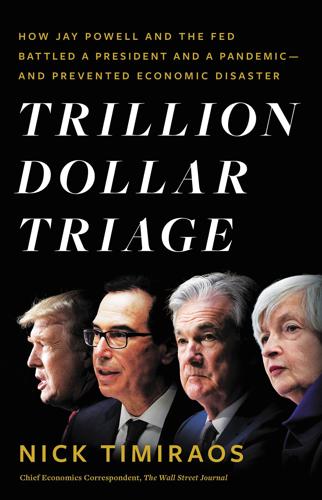
Trillion Dollar Triage: How Jay Powell and the Fed Battled a President and a Pandemic---And Prevented Economic Disaster
by
Nick Timiraos
Published 1 Mar 2022
Powell’s new framework had been an appropriate response to secular stagnation, but Summers now believed it was no longer tenable for the Fed to focus on a shortfall of jobs. “Walk outside. Labor shortage is the pervasive phenomenon, and the failure to recognize that and begin an adjustment to that reality, [risks] the kinds of mistakes that we have not seen made in the United States for a long time,” he said. Yellen remained far less convinced. “I still think the medium- to long-run problem is inflation too low rather than inflation too high,” she said in a June 2021 interview. “I don’t believe secular stagnation is going away, and so most likely, we remain in a world of chronically low interest rates, and there will be more concern in the years ahead about inflation too low than too high.
…
“We do have the tools to deal with high inflation—but if you use them late, you may” cause a recession.14 “Drunk people staggering around” The loudest criticism of the Fed and Biden came, surprisingly, from someone who had until recently been on their side—and, in Biden’s case, on his team: Larry Summers. Just a few years earlier, Summers had warned that the United States had become mired in a prolonged period of low growth, low inflation, and low interest rates that he called secular stagnation. The way out of it, he argued, was more fiscal expansion. Now, Summers was saying that the stimulus, on top of the Fed’s policies, was too much, too fast. If he was right, inflation would now menace the economy not just for a year or slightly more, but potentially year after year until the Fed hit the monetary brakes.
…
If Powell’s initial story was right, and inflation organically began to fall as bottlenecks loosened and more people began to look for jobs, maybe he could stick the landing. “I think this is the right thing to do, but even if it’s wrong, this is the gamble worth taking, to avoid repeating the mistakes of the past and to get us out of secular stagnation,” said Adam Posen, who had confronted a similar question about how to respond to a surge in inflation as a member of the Bank of England’s policy committee from 2009 to 2012. Posen had argued against raising rates, correctly predicting the shock would be temporary. “But the Fed is taking more of a gamble now than we did then.”21 By the fall, inflation pressures were broadening, weakening some conviction at the Fed about how soon prices might decelerate.
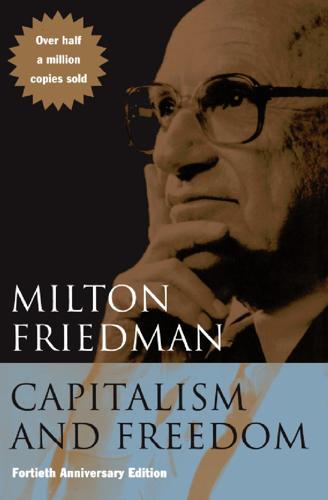
Capitalism and Freedom
by
Milton Friedman
Published 1 Jan 1962
At first, government spending was needed to “prime the pump.” Temporary expenditures would set the economy going and the government could then step out of the picture. When the initial expenditures failed to eliminate unemployment and were followed by a sharp economic contraction in 1937–38, the theory of “secular stagnation” developed to justify a permanently high level of government spending. The economy had become mature, it was argued. Opportunities for investment had been largely exploited and no substantial new opportunities were likely to arise. Yet individuals would still want to save. Hence, it was essential for government to spend and run a perpetual deficit.
…
The idea may be accepted by none, but the government programs undertaken in its name, like some of those intended to prime the pump, are still with us and indeed account for ever-growing government expenditures. More recently, the emphasis has been on government expenditures neither to prime the pump nor to hold in check the specter of secular stagnation but as a balance wheel. When private expenditures decline for any reason, it is said, governmental expenditures should rise to keep total expenditures stable; conversely, when private expenditures rise, governmental expenditures should decline. Unfortunately, the balance wheel is unbalanced.
…
railroads, 29, 35, 123, 126, 156, 197 recession, 76, 78 registration, 144, 145–46, 149 regulation, industry, 35, 38 rent control, 35 “right-to-work” laws, 115–17 riparian rights, 27 Road to Serfdom, The (Hayek), 11 roadways, 30–31, 36, 125, 199 Rome, 10 Roosevelt, Franklin Delano, 59 royalties, 27 Russia, 7–8, 20, 59, 164, 169, 196, 197, 101–2 salaries, teacher, 93–94, 95–96 Schacht, Hjalmar, 57 schooling, 85–98; and citizenship, 86, 88, 90, 96, 98, 199; conformity as result of, 94, 95, 97; denationalization of, 91; effect of competition on, 93; effect of teacher salaries on, 93–94; for-profit institutions of, 89; governmental administration of, 85, 87, 89, 90, 94, 95, 97, 98, 117; government funding of, 85, 86–88, 90, 93–94, 95; nonprofit funding of, 85, 89; and segregation, 117–18; subsidies for, 87 88–89, voucher system of, 89, 90, 91–98 Schumpeter, Joseph, 5 n. Schwartz, Anna J., 45 n. Second Bank of America, 44 secular stagnation, 75, 76 segregation, 117–18 Sherman antitrust laws, 125, 155, 199 Simons, Henry, 22, 32 Smith, Adam; 131, 133, 100, 102 socialism, 167–68, 171; vs. freedom, 7–8, 16–19, 20, 34, 74 social responsibility, 120, 133–36; and support of charities and universities, 135 social security, 35, 177, 182–89, 191, 199; administrative machinery to handle, 97; compulsory nature of annuities of, 8–9, 183, 187, 188–89; nationalization of, 183, 185–87; tax, 182–89 Social Security Administration, 186 South Africa, 59 South (U.S.), 109, 123, 181 Spain, 10 specialization of function, 22, 23, 14 stability, money.
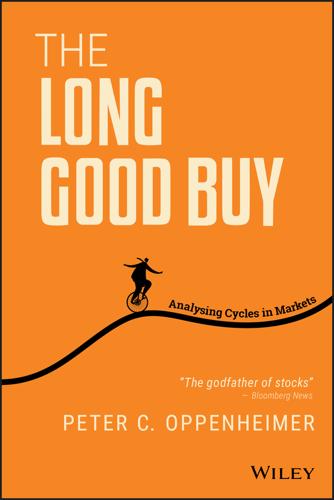
The Long Good Buy: Analysing Cycles in Markets
by
Peter Oppenheimer
Published 3 May 2020
There may be many reasons for this. One explanation is that an excess of savings over investment has driven equilibrium real interest rates down. The argument is that changes in monetary policy and fiscal spending have not really been the most important drivers of interest rates. For instance, in his secular stagnation hypothesis, Summers (2015) suggests that chronically weak aggregate demand has, together with ultra-low policy rates, kept desired saving above investment and pushed the natural rate below market rates. The global saving glut (Bernanke 2005) and the shortage of safe assets (Caballero and Farhi 2017)10 have driven excess savings in emerging market economies, reflected in their current account surpluses, into advanced economies, depressing real rates there.
…
The trillion fold increase in computing power, visualized. Gizmodo [online]. Available at https://gizmodo.com/the-trillion-fold-increase-in-computing-power-visualiz-1706676799 Struyven, D., Choi, D., and Hatzius, J. (2019). Recession risk: Still moderate. New York, NY: Goldman Sachs Global Investment Research. Summers, L. H. (2015). Demand side secular stagnation. American Economic Review, 105(5), 60–65. Sunstein, C. R., and Thaler, R. (2016). The two friends who changed how we think about how we think. The New Yorker [online]. Available at https://www.newyorker.com/books/page-turner/the-two-friends-who-changed-how-we-think-about-how-we-think Terrones, M., Kose, A., and Claessens, S. (2011).
…
Index 100 year bond 34 1920s, United States 148, 154, 157, 160 1945-1968, post-war boom 129–131 1960s ‘Nifty Fifty’ 114, 130–131, 233, 235 structural bear market 130 1970s Dow Jones 131 equity cycle 56 oil crisis 108 1980s bull markets 131–133 Dow Jones 15–16, 131–132 equity cycle 56–57 Japan 114, 148–149, 155–156, 158, 160–161, 162, 164 technology 12–15 1990s 16–17 Asia crisis 108, 133 equity cycle 57 S&P concentration 114 technology bubble 33, 93–94, 149–150, 156–157, 158–159, 161, 164 2000-2007 equity cycle 57 2007-2009 financial crisis 169–174 emerging markets 171–173 forecasting 19–21 growth vs. value company effects 94–96 impact 169–170 phases 171–174 quantitative easing 173–174, 178–179 sovereign debt 170, 171–173 structural bear market 110, 118–119 A accounting, bubbles 163–165 adjustment speed 74, 89–90 Akerflof, G.A. 23 American Telephone and Telegraph (AT&T) 154, 225, 235–236, 238 Asia crisis, 1998 108, 133 ASPF see Association of Superannuation and Pension Funds asset classes across phases 66–68 contractions and expansions 63–65 cyclical 83–89 defensive 83–89 diversification 42, 45–47, 178–179 growth 83–84, 90–96 and inflation 65–66, 70 levels of yield 74–76 relationship through cycle 68–76 returns across cycle 63–79 speed of adjustment 74 structural shifts 76–79 value 83–84, 90–96 see also bonds; commodities; equities Association of Superannuation and Pension Funds (ASPF) 77 AT&T see American Telephone and Telegraph austerity 239 Austria, 100 year bond 34 B bank margins 214–215 bear markets 49, 99–125 1960s 130 characteristics 100–106, 117–118 cyclical 105, 106–107 deflation 109, 113 duration 100–101, 106–111, 117 employment 121–124 event-driven 105, 107–109 false negatives 119–120 financial crisis 118–119 growth momentum 122–123 indicators 106, 108, 109–110, 119–125 inflation 101–103, 109, 121–122 interest rates 106, 111–113 prior conditions 121–124 private sector financial balance 124 profitability 115–117 recovery 101 risk indicator vs MSCI index 124–125 S&P 500 103–105 structural 105 triggers 101–105, 106, 108, 111 valuations 123 yield curve 122 behavioural factors 5, 22–25 Berlin Wall, fall of 133 Bernanke, B. 133 betas 65, 85 ‘Big Bang’ deregulation 12 Bing 237 Black Monday 16, 102, 148 Black Wednesday 16–17 ‘bond-like’ equities 96 bonds, 100 year 34 bond yields across phases 66–68, 72–76 current cycle 95–96, 191–193, 201–220 cyclical vs. defensive companies 87–88 and demographics 215–217 and equity valuations 72–76, 206–208 and growth companies 92–94 historical 43, 202 and implied growth 210–215 and inflation 65, 70 quantitative easing 173–174, 202–205 and risk asset demand 217–220 S&P 500 correlation 72–73 speed of adjustment 74, 89–90 ultra-low 201–220 and value companies 92–94 vs. dividends 78–79 vs. equities 43–45, 68–76, 78–79 Bretton Woods monetary system 102, 130–131 broadcast radio 154, 225 Bubble Act 147, 157 bubbles 143–165 1920s US 148, 154, 157, 160 1980s Japan 114, 148–149, 155–156, 158, 160–161, 162, 164 accounting 163–165 canal mania 152 characteristics 145–146 deregulation 157–159 easy credit 160–161 famous 145 financial innovation 158–159 government-debt-for-equity swaps 151–152 Mississippi Company 147, 151 ‘new eras’ 150–157 personal computers 155 psychology 144–145 radio manufacturing 154 railways 148, 152–154, 157, 160, 163 Shanghai composite stock price index 156 South Sea Company 147, 151, 153 structural bear markets 113 sub-prime mortgages 70, 102, 118, 133, 145, 159 technology, 1990s 33, 93–94, 149–150, 156–157, 158–159, 161, 164 tulip mania 146–147 valuations 161–162 bull markets 49, 127–142 characteristics 127–141 composition 138 cyclical 134–136 disinflation 131–133 duration 136–138, 139–141 equity performance 135–136 Great Moderation 133–134, 187–189 non-trending 138–141 post-war boom 129–131 quantitative easing 134 secular 127–134 United States 136 C canal mania 152 CAPE see cyclically adjusted price-to-earnings ratio capital investment, Juglar cycle 3 CDO see collateralised debt obligations characteristics bear markets 100–109, 111, 117–118 bubbles 145–146 bull markets 127–141 cyclical bear markets 106–107 event-driven bear markets 108–109 structural bear markets 111 China 15, 156 Cold War 14–15, 133 collateralised debt obligations (CDO) 159 commodities across phases 66–68 Kitchin cycle 3 composition of bull markets 138 concentration structural bear markets 115 and technology 238–240 contractions asset performance 63–65 mini cycles 60 see also recessions Cooper, M. 162 corporate debt 65, 110, 114, 160–161 corporate profitability bear markets 107, 115–117 current equity cycle 185–186 monetary policy 239 credit crunch 78–79, 170, 171 crowds, psychology of 21–22, 144–145 cult of the equity 77–78 current equity cycle 57–58, 167–240 bank profitability 214–215 bond yields 191–193 demographic shifts 215–217 drivers 179–180 earnings per share 195–196 employment and unemployment 183–185 equity valuations 206–208 ‘first mile problem’ 226–227 future expectations 246–247 global relative performance 193–196 growth momentum 174–178, 182–183, 227–231 growth and value companies 190–196, 239–240 implied growth 210–215 inflation 180–182, 203–205 interest rates 180–182, 239–240 Japan, lessons from 196–200 lessons from 244–245 market and economy incongruence 174–178 monetary policy 178–179, 201–205 opportunities 230–231 profitability 185–186 quantitative easing 202–205 returns 174–179 risk asset demand 217–220 structural changes 76–79, 93–96, 169–200 technology 189–190, 221–241 term premium collapse 204–205 ultra-low bond yields 201–220 valuations 233–235 volatility 187–189 cycles 1970s 56 asset returns 63–79 cyclical vs. defensive companies 85–89 equities 49–62 growth vs. value companies 90–96 investment styles 81–96 long-term returns 29–47 riding 11–27 sectors 83–85 valuations 53 cyclical bear markets 105, 106–107, 117, 118 vs. event-driven 109 cyclical bull markets 134–136 cyclical companies bond yields 193 inflation 88 sectors 83–84 vs. defensive 85–89 cyclical growth 83–84 cyclically adjusted price-to-earnings ratio (CAPE) 37–38, 44–45 cyclical value 83–84 D DDM see discounted dividend model debt levels bubbles 160–161 structural bear markets 110, 114 decarbonization 13 defensive companies 63–65 bond yields 193 inflation 88 Japan 198 sectors 83–84 vs. cyclical 85–89 defensive growth 83–84 defensive value 83–84 deflation bear markets 109, 113 Volker 102, 131 delivery solutions 226–227 demographics and zero bond yields 215–217 deregulation 12, 132–133, 157–159 derivative markets 158–159 design of policy 25–26 despair phase 50–52, 53, 55–56, 60, 66–68 cyclical vs. defensive companies 86, 88 growth vs. value companies 92 Dice, C. 161 Dimitrov, O. 162 discounted dividend model (DDM) 36, 69 discount rate 68 disinflation 131–133 disruption 1980s 12–15 current equity cycle 189–190, 221–241 electricity 226 historical parallels 222–227 printing press 223–224 railway infrastructure 224–227 telecoms 225–226 divergence, and technology 238–240 diversification 42, 45–47, 178–179 dividends asset yields 38–41, 69 reinvestment 38–40 value of future streams 209 vs. bonds 78–79 Dodd, D. 163, 164 domain registrations 12–13 dominance of technology 231–233 dotcoms 12–13, 33, 93–94, 102, 161, 237 Dow Jones 1970s 131 1980s 15–16, 131 Black Monday 16, 102, 148 Draghi, M. 17, 173 drivers of bull markets 138 current equity cycle 179–180 duration bear markets 100–101, 106–111, 117 bull markets 135–138, 139–141 cyclical bear markets 106–107, 117, 118 cyclical bull markets 135–136 dominance of technology 231–233 event-driven bear markets 108–109, 117–118 non-trending bull markets 139–141 structural bear markets 109–111, 117 term premia 204–205 DVDs 227 E earnings per share (EPS) bear markets 115–117 historical 189 since pre-financial crisis peak 195–196, 209–210 easy credit, and bubbles 160–161 ECB see European Central Bank Economic Recovery Act, 1981 132 efficient market hypothesis 4 electricity 226 email 13 employment 121–124, 183–185 Enron 164 environmental issues 13 EPS see earnings per share equities across phases 66–68 ‘bond-like’ 96 and bond yields 72–73, 74–76, 206–208 bull market performance 135–136 CAPE 37–38, 44–45 dividends 38–41, 69, 78–79, 209 and inflation 65–66, 70 mini/high-frequency cycles 58–61 narrowing and structural bear markets 114–115 overextension 36–37 phases of investment 50–58 quantitative easing 173–174, 178–179 S&P 500 historical performance 42 valuations and future returns 43–45 vs. bonds 43–45, 68–76, 78–79 equity cycle 49–62 1970s 56 1980s 56–57 1990s 57 2000-2007 57 current 57–58, 76–79 historical periods 56–58 length 49 mini/high-frequency 58–61 phases 50–56 structural shifts 76–79 equity risk premium (ERP) 35–38, 69–72, 210 ERM see exchange rate mechanism ERP see equ ity risk premium ESM see European stability mechanism Europe dividends 39–40 exchange rate mechanism 16–17, 111 Maastricht Treaty 17 market narrowing in 1990s 115 privatisation 132 quantitative easing 17, 204–205 sovereign debt crisis 170, 171–173 European Central Bank (ECB) 17, 171, 173 European Recovery Plan 129–131 European stability mechanism (ESM) 173 event-driven bear markets 105, 107–109, 117–118 vs. cyclical 109 excess see bubbles exchange rate mechanism (ERM) 16–17, 111 exogenous shocks 108 expansions, asset performance 63–65 F false negatives, bear markets 119–120 fat and flat markets 128, 139 features see characteristics Federal Reserve 16, 102, 131, 134, 150–151, 157, 203 financial crisis, 2007–2009 169–174 forecasting 19–21 growth vs. value company effects 94–96 impact 169–170 structural bear market 110, 118–119 financial innovation 158–159 ‘first mile problem’ 226–227 Fish, M. 19 fixed costs 84–85, 173–174 fixed income assets 35, 65, 69–70, 205 flat markets 138–141 see also non-trending bull markets forecasting 2008 financial crisis 19–21 bear markets 106, 108, 109–110, 119–125 behavioural aspects 22–25 difficulties of 18–22 future growth 211–212 neuroeconomics 24–25 and policy setting 25–26 recessions 20–21 and sentiment 21–25 short-term 17–18 weather 18–19 France Mississippi Company 147, 151 privatisation 132 Fukuyama, F. 15 future expectations 246–247 G Galbraith, J.K. 160 GATT see General Agreement on Tariffs and Trade General Agreement on Tariffs and Trade (GATT) 129 Germany Bund yield 207 fall of Berlin Wall 133 wage inflation 185 Glasnost 14 Glass-Steagall Act, 1933 132 global growth 182–183 globalisation 14–16 global relative performance 193–196 global sales growth 212 global technology bubble 33, 93–94, 149–150, 156–157, 158–159, 161, 164 Goetzmann, F. 151 ‘Golden Age of Capitalism’ 129–131 Gold Standard 130 see also Bretton Woods monetary system Goobey, G.R. 77 Google 237 Gorbachev, M. 14 Gordon Growth model 209 government-debt-for-equity swaps 151–152 Graham, B. 161, 163, 164 Great Britain South Sea Company 147, 151, 153 see also United Kingdom Great Depression 4 Great Moderation 133–134, 187–189 Greenspan, A. 16, 113, 150–151 gross domestic product (GDP) cyclical vs. defensive companies 87 labour share of 185, 238–239 phases of cycle 52–53 profit share of, US. 186 growth bear markets 122–123 current equity cycle 174–178, 182–183, 227–231 technology impacts 227–231 and zero bond yields 208–210, 210–215 growth companies bond yields 92–94, 191–193 current cycle 190–196 definition 90–91 since financial crisis 94–96 interest rates 92–94 outperformance 239–240 sectors 83–84 vs. value 90–96 growth phase 50–52, 54–56, 67–68 cyclical vs. defensive companies 86 growth vs. value companies 92 Gulf war 102 H herding 21–22, 144–145 high-frequency cycles 58–61 historical performance 10 year bonds, US 43 bonds 43, 202 equities cycles 49, 56–58 S&P 500 38–39, 42 trends 29–31 holding periods 31–34 Holland, tulip mania 146–147 hope phase 50–52, 53–54, 55–56, 66–67 cyclical vs. defensive companies 86 growth vs. value companies 92 housing bubble, US 70, 102, 118, 133, 145, 159 Hudson, G. 163 I IBM 13, 155, 236 IMAP see Internet Message Access Protocol IMF see International Monetary Fund impacts of diversification 42, 45–47 financial crisis, 2007-2009 169–170 technology on current cycle 221–241 ultra-low bond yields 201–220 Imperial Tobacco pension fund 77 implied growth 210–215 income, Kuznets cycle 3 indicators bear markets 106, 108, 109–110, 119–125 cyclical bear markets 106 event-driven bear markets 108 structural bear markets 109–110 industrial revolution 224–226 industry leadership, S&P 500 232–233, 237–238 inflation asset performance 65–66, 70 bear markets 101–103, 109, 121–122 current equity cycle 180–182, 203–205 cyclicals 88 Volker 102, 131 Institute of Supply Management index (ISM) 59–61 bear markets 123 cyclical vs. defensive companies 86–87 interest rates bear markets 106, 111–113 current equity cycle 180–182, 239–240 growth vs. value companies 92–94 structural bear markets 111–113 and yield 69, 74–76 International Monetary Fund (IMF) 129 internet 12–13, 225–227 search 237 see also dotcoms Internet Message Access Protocol (IMAP) 13 inventories 84–85 Kitchin cycle 3 investment, Juglar cycle 3 investment cycle bear markets 122–123 current 57–58, 76–79 historical periods 56–58 lengths 49 mini/high-frequency 58–61 phases 50–56 structural shifts 76–79 see also cycles ISM see Institute of Supply Management index J Japan bubbles 114, 148–149, 155–156, 158, 160–161, 162, 164 defensive companies 198 dividends 39–40 lessons from 196–200 John Crooke and Company 160 Juglar cycle 3 K Kahneman, D. 22–23 Kennedy Slide bear market 102 Keynes, J.M. 22 Kindleberger, C.P. 22 Kitchin cycle 3 Kondratiev cycle 3 Kuznets cycle 3 L labour share of GDP 185, 238–239 land and property bubble, Japan 114, 148–149, 155–156, 158, 160–161, 162, 164 laptop computers 13 largest companies S&P 500 237–238 technology 234–237 light touch regulation 157–159 see also deregulation Live Aid 13–14 Loewenstein, G. 21–22 long-term returns 29–47 M Maastricht Treaty 17 Mackay, C. 21 market forecasts short-term 17–18 see also forecasting market narrowing structural bear markets 114–115 and technology 238–240 markets current equity cycle 174–178 psychology of 21–25, 144–145 see also bear markets; bubbles; bull markets market timing 41–43 market value of technology companies 234, 235–238 Marks, H. 6–7 Marshall Plan 129–131 MBS see mortgage-backed securities Microsoft 12, 236–237 mini cycles 58–61 Mississippi Company 147, 151 monetary policy 157–159, 178–179, 201–205, 239 austerity 239 European Central Bank 17, 171, 173 Federal Reserve 16, 102, 131, 134, 150–151, 157, 203 quantitative easing 17, 70–71, 119, 133–134, 173–174, 178–179, 202–205 Montreal Protocol 13 mortgage-backed securities (MBS) 159 MSCI indices 91 N narrow equity markets 114–115, 238–240 NASDAQ 149–150, 161 negative bond yields 201–220 demographics 215–217 and equity valuations 206–208 and growth 208–210 implied growth 210–215 monetary policy 201–205 quantitative easing 202–205 risk asset demand 217–220 neuroeconomics 24–25 ‘new eras’ 113–114, 150–157 ‘Nifty Fifty’ 114, 233 non-trending bull markets 138–141 nudges 26 O oil 108, 226 opportunities, technology 230–231 optimism phase 50–52, 54–56, 67–68 cyclical vs. defensive companies 86 growth vs. value companies 91–92 output gaps 4 Outright Monetary Transactions (OMT) 171, 173 overextension 36–37 ozone layer 13 P pension funds 77, 218–219 Perestroika 14 Perez, C. 159 performance bull markets 134–136 current equity cycle 174–179 and cycles 53–56 diversification impacts 42, 45–47 dividends 38–41 equities vs. bonds 43–45 factors 41–45 historical trends 29–31 holding periods 31–34 interest rates 69, 74–76 long-term 29–47 market timing 41–43 risks and rewards 35–38 valuations 43–45 volatility 30–31 personal computing introduction 12–13, 155 phases 2007-2009 financial crisis 171–174 asset classes 66–68 bear markets 123 cyclical vs. defensive companies 86 of equities cycle 50–56 growth vs. value companies 91–92 Phillips curve 182 Plaza Accord, 1985 148–149, 158 PMI see purchasing managers’ index policy, design of 25–26 population decline 216 post-financial crisis see current equity cycle post-war boom 129–131 prediction see forecasting price-to-earnings ratio (P/E) 53–56 printing press 223–224 prior conditions to bear markets 121–124 private sector debt 65, 110, 114, 160–161 private sector financial balance 124 privatisation 132 productivity growth 227–230 profit labour share of 185, 238–239 share of GDP, US. 186 profitability banks 214–215 bear markets 107, 115–117 current equity cycle 185–186 property and land bubble, Japan 114, 148–149, 155–156, 158, 160–161, 162, 164 psychology bubbles 144–145 of markets 21–25 policy setting 25–26 public ownership 132 purchasing managers' index (PMI) 59–61, 86–87, 89–90 Q QE see quantitative easing Qualcom 149–150 quality companies 193 quantitative easing (QE) asset returns 70–71, 119, 178–179 bond yields 173–174, 202–205 start of 17, 133–134, 171 United Kingdom 17, 204–205 United States 134, 171, 202–204 R radio, expansion of 154, 225 Radio Corporation of America (RCA) 154 railways bubbles UK 148, 152–153, 157, 163 US 153–154, 160 infrastructure development 224–227 Rau, P. 162 RCA see Radio Corporation of America Reagan, R. 14, 131–132 real assets 68 real estate bubble, US 70, 102, 118, 133, 145, 159 recessions bear markets 101–103 current equity cycle 174–178 forecasting 20–21 recovery bear markets 101 current equity cycle 174–178 reinvestment of dividends 38–40 return on equity (ROE) 43–45 returns bull markets 134–136 current equity cycle 174–179 cycles 53–56 diversification impacts 42, 45–47 dividends 38–41 equities vs. bonds 43–45 factors 41–45 historical trends 29–31 holding periods 31–34 interest rates 69, 74–76 long-term 29–47 market timing 41–43 risks and rewards 35–38 valuations 43–45 volatility 30–31 reverse yield gap 77 risk assets, demand for 217–220 risk-free interest rate 68 risk indicators bear markets 119–125 event-driven bear markets 108 structural bear markets 110–111, 113–114 risk premia equity 35–38, 69 neuroeconomics 25 term premia 204–205 ROE see return on equity Rouwenhorst, G. 151 Russian debt default, 1997 108 S S&P 500 bear markets 103–105 and bond yields 72–73 concentration in 1990s 115 dividends 38–39 historical performance 38–39, 42 industry leadership 232–233, 237–238 and ISM 60 largest companies 237–238 US Treasury yields 206 sales growth 212 savings, current equity cycle 182 Schumpeter, J. 150 search companies 237 ‘search for yield’ 217–220 secondary-market prices 229–230 sectors across the cycle 83–85 dominance 231–233 secular bull market 127–134 disinflation 131–133 Great Moderation 133–134, 187–189 post-war boom 129–131 secular stagnation hypothesis 181 sentiment 5, 21–25 see also bubbles Shanghai composite stock price index 156 Shiller, R.J. 4–5, 23 short-term market forecasts 17–18 skinny and flat markets 139–140 smartphones 226, 229–230 Solow, R. 229 South Sea Company 147, 151, 153 sovereign debt crisis 170, 171–173 Soviet Union 14–15, 133 speed of adjustment 74, 89–90, 122–123 Standard Oil 235 structural bear markets 105, 109–115 1960s 130 bubbles 113 debt levels 110, 114 deflation 113 duration 109–111, 117 financial crisis, 2007 118–119 interest rates 111–113 narrow equity markets 114–115 ‘new eras’ 113–114 risk indicators 110–111, 113–114 triggers 111 volatility 105, 115 structural changes 6 1980s 12–15 current equity cycle 76–79, 93–96, 169–200 sub-prime mortgage bubble 70, 102, 118, 133, 145, 159 Summers, L. 181 Sunstein, C.R. 26 ‘super cycle’ secular bull market 127–134 see also secular bull market T technology 1920s America 154 bubble in 1990s 33, 93–94, 149–150, 156–157, 158–159, 161, 164 current equity cycle 189–190, 221–241 and disruption in 1980s 12–15 dominance 231–233 and growth 227–231 historical parallels 222–227 industrial revolution 224–226 Kondratiev cycle 3 largest companies 234–237 market value 234, 235–238 opportunities 230–231 personal computers 12–13, 155 printing press 223–224 railway bubbles 148, 152–154, 157, 160, 163 railway infrastructure 224–227 and widening gaps 238–240 telecommunications 13, 154, 225, 235–236, 238 telegrams 225 term premium collapse 204–205 TFP see total factor productivity growth Thaler, R.H. 26 Thatcher, M. 14, 132 Tokkin accounts 158 ‘too-big-to-fail’ 133 total factor productivity (TFP) growth 238–240 triggers bear markets 101–105, 106, 108, 111 cyclical bear markets 106 event-driven bear markets 108 structural bear markets 111 tulip mania 146–147 Tversky, A. 22–23 U ultra-low bond yields 201–220 demographics 215–217 and equity valuations 206–208 and growth 208–210 implied growth 210–215 monetary policy 201–205 quantitative easing 202–205 risk asset demand 217–220 UNCTAD see United Nations Conference on Trade and Development unemployment 121–124, 183–185 unexpected shocks 108 United Kingdom (UK) Black Wednesday 16–17 bond yields, historical 202 canal mania 152 deregulation 132 exchange rate mechanism 16–17, 111 privatisation 132 quantitative easing 204–205 railway bubble 148, 152–153, 157, 163 South Sea Company 147, 151, 153 United Nations Conference on Trade and Development (UNCTAD) 129 United States (US) 10 year bond returns 43 Black Monday 16, 102, 148 bull markets 136 credit crunch 78–79, 170, 171 disinflation 132 dividends 38–39 Dow Jones 15–16, 131 equities in current cycle 207–208 housing bubble 70, 102, 118, 133, 145, 159 labour share of GDP 185, 238–239 market narrowing 114 NASDAQ 149–150, 161 ‘Nifty Fifty’ 114, 130–131, 233, 235 post-war boom 129–131 profit share of GDP 186 quantitative easing 133–134, 171, 202–204 radio manufacturing 154, 225 railway bubble 153–154, 160 stock market boom, 1920s 148, 154, 157, 160 vs.

Men Without Work
by
Nicholas Eberstadt
Published 4 Sep 2016
3 Some economists suggest the reason has to do with the unusual nature of the Great Recession. Downturns born of major financial crises intrinsically require longer correction periods than business cycle downturns.4 Others theorize that the scale of recent technological innovation is unrepeatable or that we have entered into an age of “secular stagnation” with low “natural real interest rates” consistent with significantly reduced investment demand.5 What is incontestable is that the ten-year moving average for U.S. per capita economic growth is lower today than at any time since the Korean War and that this slowdown commenced in the decade before the 2008 crash.
…
Rogoff, “Recovery from Financial Crises: Evidence from 100 Episodes,” American Economic Review: Papers and Proceedings 104, no. 5: 50–55. http://scholar.harvard.edu/files/rogoff/files/aer_104-5_50-55.pdf. 5.Cf. Robert J. Gordon, The Rise and Fall of American Growth: The U.S. Standard of Living since the Civil War (Princeton, NJ: Princeton University Press, 2016); see for example, Lawrence H. Summers, “U.S. Economic Prospects: Secular Stagnation, Hysteresis, and the Zero Lower Bound,” Business Economics 49, no. 2: 65–73. 6.August 2016 projections for 2016–2026 by Congressional Budget Office anticipates full potential growth for U.S. GDP. See Congressional Budget Office, “Budget And Economic Data: Potential GDP and Underlying Inputs,” https://www.cbo.gov/about/products/budget_economic_data#6. 7.Simple calculations based on Bureau of Labor Statistics numbers make the point.
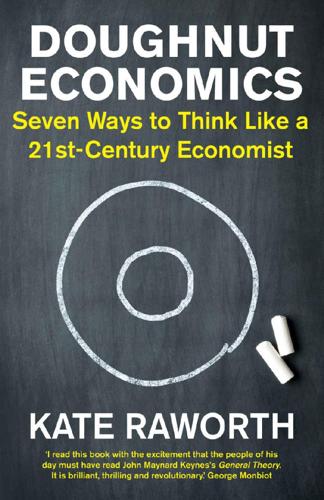
Doughnut Economics: Seven Ways to Think Like a 21st-Century Economist
by
Kate Raworth
Published 22 Mar 2017
In early 2016, Mark Carney, governor of the Bank of England, warned that the global economy risked being trapped in a ‘low growth, low inflation, low interest rate equilibrium’.21 The Bank for International Settlements – effectively the central banks’ central bank – concurred, noting that ‘the global economy seems unable to return to sustainable and balanced growth … the road ahead is quite narrow’.22 The IMF meanwhile advised that, ‘our projections continue to be progressively less optimistic over time … policymakers should not ignore the need to prepare for possible adverse outcomes’.23 The OECD itself agreed that the world was in a ‘low-growth trap’ with growth ‘flat’ in high-income countries.24 And the influential US economist Larry Summers declared that we have entered ‘the age of secular stagnation’.25 It sounds suspiciously as if some economies might be approaching the top of their S curves. Can we keep on flying? Set in this context, the debate over the future of GDP growth in today’s high-income countries is polarised between the ‘keep-on-flying’ advocates of green growth and the ‘prepare-for-landing’ advocates of post-growth economics.
…
OECD (2016) ‘Global economy stuck in low-growth trap: policymakers need to act to keep promises, OECD says in latest Economic Outlook’, 1 June 2016, available at: http://www.oecd.org/newsroom/global-economy-stuck-in-low-growth-trap-policymakers-need-to-act-to-keep-promises.htm 25. Summers, L. (2016) ‘The age of secular stagnation’, Foreign Affairs, 15 February. 26. Beckerman, W. (1972) In Defense of Economic Growth. London: Jonathan Cape, pp. 100–101. 27. Friedman, B. (2006) The Moral Consequence of Economic Growth. New York: Vintage Books, p. 4. 28. Moyo, D. (2015) ‘Economic growth has stalled. Let’s fix it’. TED Global, Geneva. https://www.ted.com/talks/dambisa_moyo_economic_growth_has_stalled_let_s_fix_it?
…
E. (2011) ‘Of the 1%, for the 1%, by the 1%’, Vanity Fair, May 2011. Stiglitz, J. E. (2012) The Price of Inequality. London: Allen Lane. Stiglitz, J. E., Sen, A. and Fitoussi, J-P. (2009) Report of the Commission on the Measurement of Economic Performance and Social Progress, Paris. Summers, L. (2016) ‘The age of secular stagnation’, Foreign Affairs, 15 February 2016. Sumner, A. (2012) From Deprivation to Distribution: Is Global Poverty Becoming a Matter of National Inequality? IDS Working Paper no. 394, Sussex: Institute of Development Studies. Thaler, R. and Sunstein, C. (2009) Nudge: Improving Decisions About Health, Wealth and Happiness.
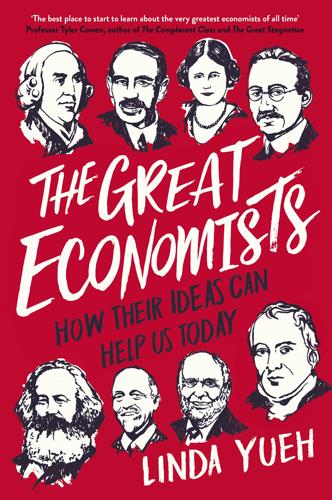
The Great Economists: How Their Ideas Can Help Us Today
by
Linda Yueh
Published 15 Mar 2018
Unlike other recessions that saw a V-shaped output drop and quick recovery, the 2008 crisis has seen a sharp fall in national output or GDP (gross domestic product) but a sluggish recovery. Economists have become worried that this is our collective future. There’s even a term revived by Harvard economist Lawrence Summers to describe a slow-growth world: ‘secular stagnation’. This was a term used by Alvin Hansen in the 1930s after the last systemic banking crisis to describe the resultant slow growth due in part to ageing societies, among other issues.2 Japan is the forerunner here, as the most aged economy. How would Solow judge the slow post-crisis recovery, and would he agree that we face a slow-growth future?
…
Economies such as the United States, the euro area, Japan and the UK had been experiencing a marked slowdown in productivity growth since the mid 2000s. Some economists are warning about permanently slower growth in advanced economies, in part because their ageing populations will be less productive. Could these economies be facing what the former US Treasury Secretary and Harvard economist Lawrence Summers describes as ‘secular stagnation’? If so, then those countries face a worrying economic future. Fewer workers require fewer office buildings and less equipment, which also depresses investment and therefore the economic outlook. That point seems to be approaching: US labour force growth slowed to just 0.2 per cent in 2015, down from 2.1 per cent from the 1960s to 1980s; for the UK, the annual average rate of labour force growth is somewhat better, but it is still down to around 0.6 per cent.
…
Structural reasons include low capital investment and inefficient resource allocation, where workers are not moving from low- to high-productivity sectors. That can happen when there are high firm survival rates resulting in so-called zombie firms that have survived only due to the extraordinarily low interest rate environment. This is not just a UK problem, however. The term ‘secular stagnation’ has been revived as a concern for all developed economies and requires revisiting our models of growth. The slow recovery of the United States was what led Harvard economist Lawrence Summers to warn about a slow-growth future for advanced economies. At the forefront of this issue is Japan.
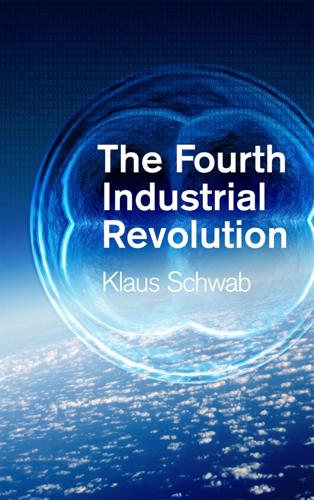
The Fourth Industrial Revolution
by
Klaus Schwab
Published 11 Jan 2016
But this has not happened. The global economy seems to be stuck at a growth rate lower than the post-war average – about 3-3.5% a year. Some economists have raised the possibility of a “centennial slump” and talk about “secular stagnation”, a term coined during the Great Depression by Alvin Hansen, and recently brought back in vogue by economists Larry Summers and Paul Krugman. “Secular stagnation” describes a situation of persistent shortfalls of demand, which cannot be overcome even with near-zero interest rates. Although this idea is disputed among academics, it has momentous implications. If true, it suggests that global GDP growth could decline even further.

Restarting the Future: How to Fix the Intangible Economy
by
Jonathan Haskel
and
Stian Westlake
Published 4 Apr 2022
Why does my job involve so much bullshit?). It united unimpeachably mainstream economists debating secular stagnation and market concentration with critical voices asking whether capitalism is destroying our planet and creating an unbridgeable gulf between rich and poor. When people talked about the economy, they did so with a sense of disappointment, as if we lived in an age of lead. Faced with the challenges of recovery from a global health crisis, these concerns may seem quaint and dated. Who cares about secular stagnation when output has fallen by 25 percent? Who cares about the structure of the economy when the immediate challenge is to protect public health and consumer and investor confidence?
…
But the problem with economic growth is not just that it has slowed down. It has slowed down in a way that has defied many standard economic explanations. The weak growth of the early twenty-first century coexisted with low interest rates and, until the COVID-19 crisis, high corporate valuations. Economists call this phenomenon secular stagnation. We can see those high valuations in figure 1.2: Tobin’s Q (a measure of how optimistic investors are about future corporate profits) is not quite at the dizzying heights of the dot-com boom, but it is way above its 1980s lows. FIGURE 1.2: Tobin’s Q in the United States. Source: Federal Reserve Economic Data.

WTF?: What's the Future and Why It's Up to Us
by
Tim O'Reilly
Published 9 Oct 2017
v=F7vJDtwidWU. 269 including knowledge work: Martin Ford, The Rise of the Robots (New York: Basic Books, 2015). 271 lack of aggregate consumer demand: Bill Gross, “America’s Debt Is Not Its Biggest Problem,” Washington Post, August 10, 2011, https://www.washingtonpost.com/opinions/americas-debt-is-not-its-biggest-problem/2011/08/10/gIQAgYvE7I _story.html. 271 “on the demand, rather than the supply, side”: Robert Summers, “The Age of Secular Stagnation: What It Is and What to Do About It,” Foreign Affairs, February 15, 2016, retrieved from http://larrysummers.com/2016/02/17/the-age-of-secular-stagnation/. 271 “Only around 15%”: Rana Foroohar, “The Economy’s Hidden Illness—One Even Trump Failed to Address,” LinkedIn Pulse, November 12, 2016, https://www.linkedin.com/pulse/economys-hidden-illness-one-even-trump-failed-address-rana-foroohar. 272 “the job is likely to be ill-done”: John Maynard Keynes, The General Theory of Employment, Interest, and Money (New York: Harcourt Brace, 1964), 159. 272 “long-term prospects and to those only”: Ibid., 160. 272 each additional year that an asset is held: Fink, “I write on behalf of our clients . . .” 272 such as that proposed by Thomas Piketty: Michelle Fox, “Why We Need a Global Wealth Tax: Piketty,” CNBC, March 10, 2015, http://www.cnbc.com/2015/03/10/why-we-need-a-global-wealth-tax-piketty.html. 273 “it’s good for business”: Stiglitz, “Of the 1%, by the 1%, for the 1%.”
…
Why do we have lower taxes on capital when it is so abundant that much of it is sitting on the sidelines rather than being put to work in our economy? Why do we tax labor income more highly when one of the problems in our economy is lack of aggregate consumer demand because ordinary people don’t have money in their pockets? When economists like former Treasury secretary Larry Summers talk about “secular stagnation,” this is what they are referring to. “The main constraint on the industrial world’s economy today is on the demand, rather than the supply, side,” Summers writes. Why do we treat purely financial investments as equivalent to real business investment? “Only around 15% of the money flowing from financial institutions actually makes its way into business investment,” says Rana Foroohar.
…
See fake news disruptive forces, xxiii disruptive technology, 351–52 Dobbs, Richard, xxiii “Dog and the Frisbee, The” (Haldane), 175 Doing Capitalism in the Innovation Economy (Janeway), 104–5, 274 DonorsChoose, 183 dot-com boom, 29 Dougherty, Dale, 28–29, 81, 99–100, 337 Drucker, Peter F., 250 Dvorak, John, 41 Dyson, George, 45 eBay, 39, 182–83, 294 “Economic Mechanism Design for Computerized Agents” (Varian), 261 “Economic Possibilities for Our Grandchildren” (Keynes), 298–99 economics, 271–73 assigning a value to caregiving, 310–11 efficiency wages, 197 employers’ 29-hour loophole, 194–95, 196 fundamental law of capitalism, 268 invisible hand of competition, 262–70 the “laws” of economics, 257–62 and leisure time, 308–11 machine money and people money, 306–7, 308, 309 minimum wage, 197–98, 264–68 secular stagnation, 271 Stiglitz exposes the 1%, 255 trickle down, 244, 265, 273 universal basic income, 305–6, 307–11 wealth inequality, 263–65 welfare economics, 263, 266, 307 economy, xxii and adaptations to change, xxiv–xxv creativity-based, 312–19 financial crisis of 2008, 172–73, 175, 238, 265, 275, 359 as government’s thick marketplace, 133 of Korea, 134 technology and the future of the economy scenario plan, 364–67 See also financial markets economy and Silicon Valley, 274–75 the Clothesline Paradox, 295–97 digital platforms and the real economy, 288–89 market capitalization/supermoney, 276–79, 280–84, 289 measuring value creation, 289–95 pool of qualified workers, 347–50 venture capital-backed startups, 275, 282–84 Y Combinator program for VC-funded companies, 286–87 education/training creating, sharing, and embedding into tools, 323–32, 334–36 as investment in other’s children, 320–21 for jobs, 303, 304, 321 lagging behind technology, 335–36 learning by doing, 337–41, 345–50 on-demand education, 341–45 Open Cloud Academy at Rackspace, 350 play element, 340–41 and social capital, 345–50 efficiency wages, 197 efficient market hypothesis, 259–61 “Eight Principles of Open Government Data” (Malamud, Lessig, and O’Reilly), 130–31 electric cars, safety-related load of, 66–67 Eliot, T.

The Age of Stagnation: Why Perpetual Growth Is Unattainable and the Global Economy Is in Peril
by
Satyajit Das
Published 9 Feb 2016
KENNAN In a time of universal deceit, telling the truth is a revolutionary act. GEORGE ORWELL PROLOGUE Reality Bites 1. GREAT EXPECTATIONS Postwar Booms and Busts 2. BORROWED TIMES Causes of the Global Financial Crisis and the Great Recession 3. ESCAPE VELOCITY The Power and Impotence of Economic Policies 4. THE END OF GROWTH The Factors Driving Secular Stagnation and the New Mediocre 5. RUNNING ON EMPTY The Resource and Environmental Constraints on Growth 6. CIRCLING THE WAGONS Globalization in Reverse 7. BRIC(S) TO BIITS The Rise and Fall of Emerging Markets 8. ECONOMIC APARTHEID The Impact of Rising Inequality on Growth 9. THE END OF TRUST How a Democracy Deficit Harms Economic Activity 10.
…
The US, one of the strongest performers among developed countries, was further below its economic potential than even Japan was at an equivalent time following the collapse of its bubble economy. In late 2013, Harvard economist and former US Treasury secretary Lawrence Summers argued that the US economy may be suffering from secular stagnation, a concept introduced by economist Alvin Hansen in the 1930s. Changes in the economy's structure made growth at previous rates unattainable, with little prospect of recovery to pre-crisis output levels. The situation was global, not confined to the US. IMF president Christine Lagarde termed it the new mediocre.
…
Economic activity globally was affected by slower growth in populations and workforces, as well as declining improvements in productivity. Lawrence Summers argued that the problem was not the result of the GFC itself, having emerged slowly over the previous twenty years. Critics claimed there was no direct evidence of secular stagnation. Some disputed the existence of a savings glut. Others thought that government intervention had distorted the economy. Many pointed out that Alvin Hansen's thesis proved incorrect. World War II, the postwar baby boom, rising consumption, investment, and technological innovation had revived economic growth.
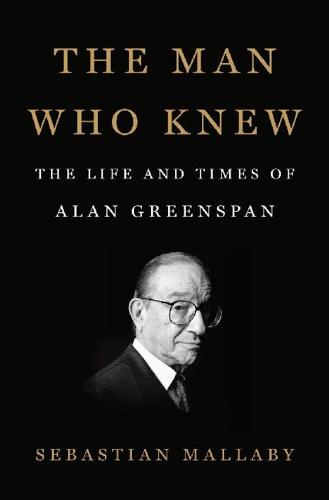
The Man Who Knew: The Life and Times of Alan Greenspan
by
Sebastian Mallaby
Published 10 Oct 2016
The forces that had spurred spending in the nineteenth century had played themselves out; slowing population growth, the closing of the American frontier, and the maturation of the great capital-consuming industries such as railroads and steel signaled that spending would be weak indefinitely. Full employment and inflation were almost inconceivable under these conditions, Hansen believed; and this meant that the policy prescriptions that Keynes had advocated during the Depression were actually permanent imperatives. To counter what Hansen called secular stagnation, the government would have to discourage excess saving by redistributing money from the high-saving rich to the high-spending poor. It would have to boost public spending and tolerate large budget deficits. Greenspan was not convinced by any of this. The contention that excess savings would pile up, with nobody willing to spend or invest them, seemed just too pessimistic.
…
Since his days in the Henry Jerome Orchestra, when he had read economic history while his bandmates smoked pot, Greenspan had chosen his own path, and his affinity with a cultish author was no more bizarre than his enthusiasm for an obscure pamphleteer such as George Terborgh, the economist who had debunked postwar predictions of secular stagnation. Besides, Rand’s celebration of entrepreneurs and inventors seemed tailored to appeal to an individualistic consultant who was building his own business, and her romantic fascination with the industrial barons of the nineteenth century completed the connection. Indeed, as Greenspan grew more willing to assert his views, his affinity with the nineteenth century colored his approach to everything.
…
Thanks to John Gurley and Edward Shaw, he had formed a firm conviction that financial innovation was positive for the economy, even though markets were only approximately efficient. Now, in the wake of the attacks of September 2001, another debate from Greenspan’s youth floated up from the deep past. The controversy unleashed by Alvin Hansen, the distinguished Keynesian at Harvard who predicted “secular stagnation,” came back with a vengeance. As an undergraduate at New York University, Greenspan had been unimpressed by Hansen’s forecast. He had sided instead with the far less illustrious George Terborgh, rejecting the contention that America had run out of scope to innovate, or that companies’ anemic appetite for investment would saddle the economy with excess savings and inadequate demand—and hence with stagnation and deflation.

The Myth of Capitalism: Monopolies and the Death of Competition
by
Jonathan Tepper
Published 20 Nov 2018
It is a puzzle why they're returning almost all cash to shareholders rather than doing more research and development or spending it on new factories and equipment. Larry Summers, the former Secretary of the Treasury and Harvard economics professor, shares the view with the 1930s economist Alvin Hansen that we're experiencing a “secular stagnation.” Supposedly, the economies of the industrial world suffer from “an imbalance resulting from an increasing propensity to save and a decreasing propensity to invest.”59 This means that the slowdown is structural and not cyclical. He blames inequality and technology. “Greater saving has been driven by increases in inequality and in the share of income going to the wealthy.”
…
Available at SSRN: https://ssrn.com/abstract=1019023. 58. John J. McConnell, John J. Sibley, E. Steven, and Wei Xu, “The Stock Price Performance of Spin-Off Subsidiaries, Their Parents, and the Spin-Off ETF, 2001–2013,” Journal of Portfolio Management; New York 42, no. 1 (Fall 2015): 143–152. 59. http://larrysummers.com/2016/02/17/the-age-of-secular-stagnation/. 60. Robin Döttling, German Gutierrez Gallardo, and Thomas Philippon, “Is There an Investment Gap in Advanced Economies? If So, Why?” (July 2017). Available at SSRN: https://ssrn.com/abstract=3002796. 61. Christopher Lasch, The Revolt of the Elites and the Betrayal of Democracy (W.W. Norton & Co., 1995). 62. https://evolution.berkeley.edu/evolibrary/article/agriculture_02. 63. http://www.pbs.org/thebotanyofdesire/potato-control.php. 64. https://www.bloomberg.com/view/articles/2017-12-21/the-bananapocalypse-is-nigh. 65. https://www.csmonitor.com/1991/1002/02191.html. 66. https://www.theguardian.com/us-news/2018/jan/10/hurricane-maria-puerto-rico-iv-bag-shortage-hospitals. 67. https://www.theatlantic.com/business/archive/2015/11/cities-economic-fates-diverge/417372/. 68.
…
Paul, 158 McKesson, price-fixing allegations, 131 McLaughlin, Patrick A., 179 McNamee, Rogert, 113 Measure of America report, 114 Meat industry, oligopolies, 132–133 Meat processing firms, ownership timeline (changes), 134f Media, oligopolies, 133, 135 Medical care, oligopolies, 129 Mega merger waves, 163f Mellon, Carnegie, 139 Mergers changes, 9f enforcement, death, 163 impact, 43–44 mega waves, 163f merger-induced price increases, evidence, 42 prices, increase, 44 rejection, standard/basis, 243 reversal, 243 solutions/remedies, 242–245 studies, 60 waves, 145f, 154 Mergers and acquisitions (M&As) impact, 12 proportion, 164f Mergers, Merger Control, and Remedies, (Kwoka), 42 Metcalfe's Law, 98 Michaely, Roni, 8, 13 Microprocessors, monopolies/local monopolies, 121 Microsoft monopoly, 93 operating system market share, 117 “Middle America,” revolt, 58 Miliband, Ed, 215 Milk, monopolies/local monopolies, 118–119 MillerCoors, creation, 123 Mill, John Stuart, 22 Minimax theory, 27 Mnuchin, Steven, 189 Moeran, Shivaun, 87–88 Mogridge, Martin, 18–19 Molson Coors beer market dominance, 188 SABMiller, duopoly, 123 Money, spending, 247 Monocultures, danger, 59 Monopolies, 15 competition, impact, 179 condemnation (Truman), 146 defining, 37–38 factors, 16 impact, 116–122 King Kong, comparison, 35 Monopolists, barrier entry, 245 Monopoly Machine, 15–16 usage, 51 Monopoly Rules, 5–6 Monopsonies, 37–38, 71 meaning, 74 power, 85 ranking, 73f Monsanto Bayer purchase, proposal, 119, 121 federal government, revolving door, 193f lobbying spending, 192 Moody's, return on invested capital (ROIC), 183 Moore, Gordon E., 66 Morganizing (Morganization), 195, 196, 209, 240 Morgan, John Pierpont, 143, 195 Buffett, comparison, 198 failing company finance, 196 inheritance, 208 Mueller, Holger M., 39 Mukherjee, Siddhartha, 167 Munger, Charlie, 2 Murdoch, Rupert, 133 “My Fellow Zillionaires” (Hanauer), 231–232 N Nakaji, Peter, 35–36 Nash, John, 26 National Dairy Holdings, price fixing, 119 Nationally Recognized Statistcal Rating Organization (NRSRO), 183–184 Navalny, Alexei, 92 Nazis, trusts (commonality), 137 NBCUniversal, Comcast purchase, 6–7 NBC Universal, market dominance, 133 Net investment (nonfinancial businesses), 205f Netscape, Microsoft (impact), 93 Net wealth shares (United States), 230f Network Effects, 15, 98 self-reinforcement, 103–104 Nevins, Allan, 156 New Deal, 78 “New Poor,” 230–231 News Corporation, market dominance, 133 News Feed (Facebook), impact, 99–100 Nixon, Richard, 157 Noesser, Gary, 28 Noncompete agreements (noncompetes) spread, 84 state enforcement, absence, 70f worker percentage, 69f Nonfinancial businesses, net investment, 205f Northern Rock, panic, 17–18 Northern Securities Company, formation, 196 Noyce, Robert, 66–67 NSC, antitrust case, 196 O Obama, Barack, 95–96, 161, 165, 190 reverse revolvers, 191–192 Occupational licensing, excess (impact), 83 Occupy Wall Street movement, 211–212 Ogden, Aaron, 137 Ohlhausen, Maureen K., 83 Old Republic, market dominance, 135 Oligopolies, 15, 125–136 Buffett perspective, 201 court decision, 30 ownership, 201 reputation, problem, 5 Olney, Richard, 191 “On Being the Right Size” (Haldane), 49 Online advertising, duopolies, 123–124 Operating systems, Microsoft market share, 117 Optimism, essence, 229 OptumRx, market dominance, 130 Ordoliberalism, 153, 238 Organisation for Economic Co-operation and Development (OECD), study, 23 Organisms, growth phases, 52f Orphan Drug Act (1983), 175 Orwell, George, 113 Ownership, concentration, 199 P Page, Larry, 68 Panic of 1907, 195–196, 208–209 Pasquale, Frank, 123 Passive investing, 201 Passive investments, contest, 203 Passively managed assets, share, 202f Patents, 171–172, 246 annual issuance (US), 173f problems, 172–173 protection, congressional removal, 246 Walt Disney, impact, 173–174 Paulson, Henry, 190 Payment systems, duopolies, 122 PayPal eBay release, 56 founding, 4 value, 118 Pearson, Michael, 168–169 Peltzman, Sam, 224 Perfect markets, belief, 155 Perkins, Charles E., 191 Personal information, Facebook control, 117 Pharmaceutical Research and Manufacturers of America, drug lobbying, 187 Pharmacy benefit managers (PBMs) market, 115–116 oligopolies, 130–131 Philippon, Thomas, 56 Phone companies, oligopolies, 126–127 Phone operating systems, duopolies, 123 Pierce, Justin, 40–41 Pike, Chris, 226 Piketty, Thomas, 214–217 diagnosis, 228 income chart, 224 Pipes, basis, 122 “Pitchforks Are Coming…for Us Plutocrats” (Hanauer), 232 Planck, Max, 165 “Planning Outline for the Construction of a Social Credit System” (China), 111–112 Platform companies, 97–98 Political activity, 248 Political freedom, 143–144, 233 Porter, Michael, 14 Posner, Richard, 156 Potsdam Treaty, 150–151 Poultry industry, oligopolies, 132–133 Power balance, 217 concentration, 141 imbalance, 74 Predatory pricing, punishment (laws), 244 Premier, market dominance, 130 Price-fixing, allegations, 131 Price leadership, 43–44 Prices, increase, 40–45 mergers, impact, 44 Prisoner's Dilemma, The, 27–28 Privacy, importance, 247–248 Productivity companies, impact, 54 growth, reduction, 53f low level, impact, 48–49 reduction, 47–56 wages, contrast, 222 Profitability increase, 51 investment, contrast, 57f Profits, lobbying/regulation (relationship), 188 ProPublica study, 104 Protestant Ethic and the Spirit of Capitalism, The, (Weber), 76 Q Queen, Edward, 14 R Raff, Adam, 87–88, 94 Railroads control, farmer resentment, 140 mergers, 120f monopolies/local monopolies, 119 Randall, James, 21 RCA, innovation, 55 Reagan, Nancy, 159 Reagan, Ronald, 46, 158–161 antitrust revolution, 224–225 Reback, Gary, 94 Reed's Law, 98 Reflections on the Revolution in France (Burke), 239 RegData, usage, 180, 188 Regulation lobbying/profits, correlation, 188 profits, correlation, 181 usage, 167, 245–246 Regulatory capture, avoidance, 245 Reich, Robert, 197 Republic Services Group, 3 Return-free filing system, IRS implementation, 126 Returns, company lobbying (comparison), 187f Reverse revolvers, 191–192 Revolt of the Elites, The, (Lasch), 58 Revolutions, appearance, 230–231 Revolving door, 190f, 193f avoidance, 245 Reynolds, Glenn, 183 Rhodes, Cecil, 24 Ricardo, David, 58 Richards, Tyler, 179 Robber barons impact, 111 term, usage, 139 Rock, Edward, 209 Rockefeller, John D., 111, 126, 139–143, 208, 240 Roosevelt, Franklin Delano, 146, 224 New Deal, 78 Roosevelt, Theodore, 141–143, 193, 234 trust fighting, 239–240 Royal Bank of Scotland, rate rigging, 25 Rural areas, lag, 72f S Salop, Steven, 39, 225 Sandberg, Sheryl, 114 Sanders, Bernie, 212, 231 Sarnoff's Law, 98 Saving Capitalism (Reich), 197 Saxenian, AnnaLee, 67 Scale (West), 51 Schäuble, Wolfgang, 17 Schiantarelli, Fabio, 181 Schmalensee, Richard, 106 Schmalz, Marin, 199 Schmidt, Eric, 68, 96, 114 Schumpeter, Joseph, 4–5 Schweitzer, Arthur, 148 Search engine, building, 118 Searches, monopolies/local monopolies, 118 Secular stagnation, 56 Seeds, monopolies/local monopolies, 119, 121 Servan-Schreiber, Jean-Jacques, 4 Service Corporation International (SCI), market dominance, 121–122 Share buybacks, 206 limitation, 247 Shareholders, 246–247 manager representation, 79 Sherman Act of 1890, 7, 140–144, 157, 160, 237 Sherman, John, 140, 195 Shockley, William, 65–67 Signaling, 30 Silicon Valley, disparagement, 87 Simon, Hermann, 29–30 Singer, Paul, 203–204 Skilling, Jeffrey, 14 SkyChefs, wage laws fines, 78 Small banks, disappearance, 181–182 Small firms, disappearance, 47 Small-scale businesses, job creation, 50 Smith, Adam, 7, 22, 35, 38, 63, 191 invisible hand, 38 Smith, Brad, 94 Smith, William French, 158 Snap, Initial Public Offerings, 107 Snowden, Edward, 112 Social networks, monopolies/local monopolies, 117–118 Society, regulations (service), 245 Soros, George, 113 Sprint, phone market dominance, 126–127 Square-cube law, 49–50 Staggers Rail Act (1980), 119 Staltz, André, 102 Standard Oil market control, 90–91 Supreme Court dissolution, 142 Standard & Poor's 500(S&P500), Big 3 ownership, 203f Startups advertising, 107 dynamics, 106–107 reduction, 45–47 Stationers Company, The, 235 Statute of Monopolies (England), 172 Steele, Helena, 102 Steinbaum, Marshall, 38, 72 Sterling Jewelers, claims (filing), 80 Stewart, market dominance, 135 Stigler, George, 155 Stiles, T.J., 138–139 Stock markets, success, 218 Stock ownership income, impact, 197 US percentage, 201 Stocks company retirement, 207 options, manager purchase, 247 Stoppelman, Jeremy, 108 Strikes, wage growth (association), 80f Strouse, Jean, 208 Structure of Scientific Revolutions, The, (Kuhn), 165 Summers, Larry, 56 Superstar firms, rise, 40 Suslow, Valerie Y., 25 Sustainable prosperity, 208 Sweetland, Kyle, 83 Swipe fees, dispute, 122 Switching costs (reduction), rules (creation), 246 T Tabakovic, Haris, 192 Taibbi, Matt, 102 Takedown notices, filing, 99 Tap Dancing to Work (Buffett), 1 Tax preparation, oligopolies, 125–126 Technology companies market capitalization, 90–91 monopolies, profits, 114 Tecu, Isabel, 199 Teles, Steven M., 174, 188 Temporary work, empowerment, 75 Temporary workers, poverty l ine, 75 Tesla, Nikola, 67, 195 TEVA Pharmaceuticals, generic drug release, 176 Thiel, Peter, 4–5 Third-party services, sale, 245 Thomas, Diana, 180 Time Warner Cable, Comcast purchase (FTC prevention), 165 Time Warner, market dominance, 133 Tit for Tat, 28–29 Title insurance, oligopolies, 135–136 T-Mobile, phone market dominance, 126–127 “Tobacco Trust,” 142 Toll roads, impact, 111 Trademarks, theft, 102 Trade, restraints, 68 “Traitorous Eight,” 66, 84 TransDigm, company acquisition/price increases, 184–186 Trickle-down monetary policies, 219 Trotsky, Leon (rehabilitation), 212 True Believer (Hoffer), 230 Truman, Harry (monopoly condemnation), 146 Trump, Donald (election), 212 Trusts antitrust enforcement budget, 160f challenges, 141 creation, 142 Nazis, commonality, 137 Turf wars, 21 U Unionization, collapse, 83 Unions decrease, 84f membership, income distribution (contrast), 79f restrengthening, 78 United States banking mergers, 128f banks, owners (ranking), 200f economy, entrepreneurialship (reduction), 46f federal government, relationship/revolving door, 190f, 193f grocery market, competitiveness, 32 healthcare, monopolies/oligopolies (prevalence), 131–132 income inequality, 214f, 225f job markets, examination, 38 markets, passively managed assets (share), 202f Morganizing, 195 net wealth shares, 230f optimism, essence, 229 patents, annual issuance, 173f public companies, collapse (number), 10f wages leading indicator, perception (variation), 64f United States v.
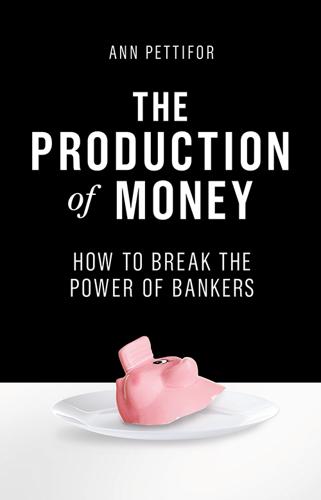
The Production of Money: How to Break the Power of Banks
by
Ann Pettifor
Published 27 Mar 2017
Often it was victims of financial deregulation – like the sub-prime borrowers of the US’s Rust Belt – that were blamed for borrowing too much and causing the crisis. According to one of the most powerful mainstream and so-called ‘Keynesian’ economists Larry Summers, societies were living through ‘The Age of Secular Stagnation’ caused by a ‘natural’ rate of interest that was too low! The public were constantly enjoined to simply accept the fate of falling incomes, cuts in public investment, financial failure, bankruptcy and unemployment, for as the economists effectively argued: ‘there is nothing to be done’. But that was, and is, a lie.
…
As in the 1930s, these debts were the result of easy and dear money. Unsustainable debts build up when lending is not managed by public authority and loans cannot be repaid. Unpayable debts are more likely under dear, rather than cheap money. The economics profession regards the subsequent failure of economic activity as the new norm – ‘secular stagnation’. Interest rates are thought merely to reflect in a passive way this dismal outlook, one expected to extend indefinitely into the future. Governments have been and are still required to retrench, to manage low investment, unemployment and political instability within severe constraints and with greatly reduced means.

Angrynomics
by
Eric Lonergan
and
Mark Blyth
Published 15 Jun 2020
Firstly, we are exploiting a unique feature of the world today: negative real interest rates. It is absurd that governments are not taking advantage of this. The only reason a very large national wealth fund can be created quickly is because the cost of debt to the government is so low. This is part of the solution to secular stagnation. The second distinct feature of what we are proposing is distributing ownership to those who don’t have assets. We want to create a national inheritance that goes beyond national insurance. MARK: This is compelling. It could be set up and implemented in a matter of months. It’s prudent because although the government is issuing debt its net debt, the difference between its assets and liabilities – which is what really matters – is unchanged because the government is not issuing debt to spend it on consumption.
…
These are the right responses to legitimate anger. But is there more we can do? For example, our proposal of dual interest rates to “fuel” a green investment boom is only ignited if our economies require further stimulus. MARK: This brings us to our final proposal: a flexible fiscal rule which turns “secular stagnation” (low interest rates) to our advantage. Without getting too bogged down in the technical details, whenever a country has a significant amount of public-sector debt the most important variable in assessing the sustainability of its borrowing is the relationship of its cost of debt to growth in nominal GDP.
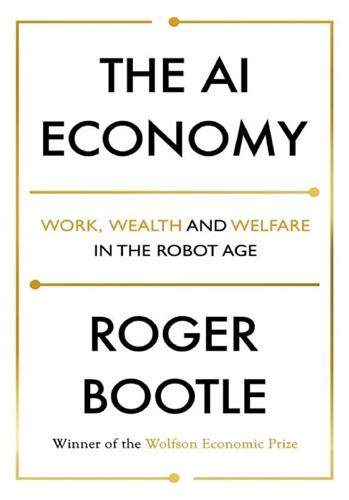
The AI Economy: Work, Wealth and Welfare in the Robot Age
by
Roger Bootle
Published 4 Sep 2019
Many of them have focused on the demand aspects of this slowdown. The distinguished American economist Larry Summers has revived the notion of “secular stagnation” that did the rounds in the 1930s and survived for a while after the war – until the prolonged postwar expansion dealt what seemed to be a killer blow. (It seems that economic ideas never really die; they merely shuffle offstage, apparently mortally wounded, only to return at a later date.) The essential notion behind secular stagnation is that, for a variety of reasons, aggregate demand displays a persistent tendency to fall short of aggregate supply. The result is that to prevent this from causing widespread unemployment, the fiscal and monetary authorities have to resort to exceptional stimulatory policies such as large increases in budget deficits, near-zero interest rates, and huge programs of bond purchases paid for with newly created money.
…
The result is that to prevent this from causing widespread unemployment, the fiscal and monetary authorities have to resort to exceptional stimulatory policies such as large increases in budget deficits, near-zero interest rates, and huge programs of bond purchases paid for with newly created money. Some, but by no means all, of the economists supporting this view emphasize an increase in inequality as the fundamental underlying cause of secular stagnation. (American Nobel laureate Joseph Stiglitz is a notable exponent of this view.) Other economists accept the correlation but argue that the causation runs in the opposite direction, that is to say, the weakening in the growth of productivity has increased inequality.26 Others tend to attribute the subdued growth of aggregate demand primarily to the weakness of the banks, the overhang of debt and various regulations, and the various inhibitions and deterrents that have made companies more wary and cautious.
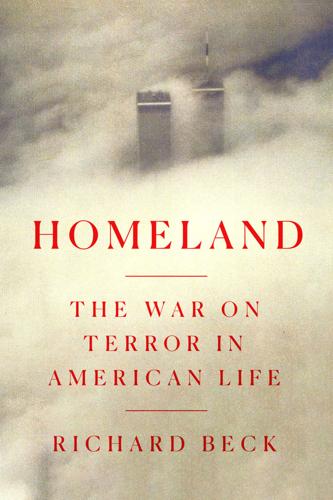
Homeland: The War on Terror in American Life
by
Richard Beck
Published 2 Sep 2024
Individual companies and countries have still found success in this environment, but only at the expense of others; slow growth turns the global economy into a zero-sum game that produces at least one loser for every winner rather than growing the pie quickly enough for most people to do well. One of the terms economists use for this situation is “secular stagnation.”[*] The growth slowdown has caused all kinds of problems, some of which I’ll discuss shortly. But the first problem to highlight is the threat that secular stagnation poses to America’s position of global leadership. To be a little crude about it, America became the most powerful country in the world because it was the first country that figured out how to manufacture consumer durables like cars and washing machines on a large scale and how to do so at sufficiently low cost that many people could afford to buy them.
…
The problem is that nobody seems to know what America should produce instead, what combination of goods and services and raw materials can not only satisfy some hitherto unnoticed global economic need but also help America maintain its competitive economic advantages. But just because an economic solution to the problem of secular stagnation hasn’t presented itself doesn’t mean it’s not worth trying political or military solutions instead. At its foundation, that’s what the war on terror is: a potential solution to the problem of slowing global growth and America’s declining power. * * * • • • The most important economic problem caused by slowing global growth is one that economic statistics don’t do a very good job of capturing.
…
The result is persistent underemployment rather than unemployment, a situation in which the economy’s vanishing core of full-time jobs is replaced by gig work that may provide a means of temporary survival but cannot offer the kinds of security and stability around which it’s possible to build a dignified life. And that’s in the wealthy countries. In middle- and low-income nations, the consequences of secular stagnation have been catastrophic. In his 2006 book Planet of Slums, the great historian and political writer Mike Davis pointed out that since the 1970s the world’s poor countries have urbanized at a rate that puts Europe’s experiences of nineteenth-century urbanization to shame.[22] But whereas those European experiences of urbanization were part of an industrial revolution that saw growth accelerate dramatically, the more recent urbanization of what used to be called the Third World has largely occurred in places where economic growth is either low, slowing down, or nonexistent.

The Euro and the Battle of Ideas
by
Markus K. Brunnermeier
,
Harold James
and
Jean-Pierre Landau
Published 3 Aug 2016
Keynesians favorite explanation for this empirical finding is the hysteresis hypothesis: long-lasting recessions destroy human capital and workers’ skills, depressing the economy further in the long run. This provides an additional reason for undertaking aggressive stimulus interventions in order to counteract hysteresis effects. Elsewhere Larry Summers went further, suggesting that the output gap was not temporary but permanent, and that industrial countries were in “secular stagnation,” requiring large scale investment, even at the cost of inducing bubbles, in order to escape from the predicament.17 “Boom-and-Bust” Theory of Unsustainable Booms According to the Austrian “boom-and-bust” theory, booms can be excessive and unsustainable especially when they are fueled by credit expansions and accompanied by malinvestment.
…
John Cochrane, “How Big Is the Random Walk in GNP?” Journal of Political Economy 96(5) (1988): 893–920. 16. Blanchard, Cerutti, and Summers, “Inflation and Activity.” 17. Lawrence Summers, in a speech at an IMF research conference on November 8, 2013, http://ftalphaville.ft.com/2013/11/18/1696762/summers-on-bubbles-and-secular-stagnation-forever/. 18. For recent empirical studies see, for example, Mathias Drehmann, Claudio Borio, and Kostas Tsatsaronis, “Characterising the Financial Cycle: Don’t Lose Sight of the Medium Term!”, 2012, Bank of International Settlement Working Paper 380, and Moritz Schularick and Alan Taylor “Credit Booms Gone Bust: Monetary Policy, Leverage Cycles and Financial Crises, 1870–2008.”
…
Bordo, John Landon Lane, and Angela Redish, “Good versus Bad Deflation: Lessons from the Gold Standard Era,” NBER Working Paper 10329, 2004; Claudio Borio, Magdalena Erdem, Andrew Filardo, and Boris Hofmann, “The Costs of Deflations: A Historical Perspective,” BIS Quarterly Review, March 2015. Last accessed January 4, 2016, from http://www.bis.org/publ/qtrpdf/r_qt1503e.htm. 61. Barry Eichengreen, “Secular Stagnation: The Long View,” American Economic Review Papers and Proceedings (May 2015), 66–70. 62. Holger Steltzner, “Euro-Geistesverwirrung,” FAZ, March 23, 2016. http://www.faz.net/aktuell/wirtschaft/wirtschaftspolitik/kommentar-zum-helikoptergeld-euro-geistesverwirrung-14142378.html. 63. Comfort, “Draghi Raids Bankers.” 64.

A Generation of Sociopaths: How the Baby Boomers Betrayed America
by
Bruce Cannon Gibney
Published 7 Mar 2017
Economic Policy Institute. Briefing paper, 374, 1 July 2014, p. 19 et seq. (citing CBO, CEA, Moody’s, and its own research); International Monetary Fund. World Economic Outlook. Oct. 2014, ch. 3, p. 82. 12. Summers, Lawrence H. “The Age of Secular Stagnation: What It Is and What to Do About It.” Foreign Affairs, March–April 2016, www.foreignaffairs.com/articles/united-states/2016-02-15/age-secular-stagnation. 13. US Department of Transportation, Federal Highway Administration. “Highway Statistics 2014.” tables VM-1, MF-2, www.fhwa.dot.gov/policyinformation/statistics/2014/. (Though the report’s title says 2014, the data are from 2015.) 14.
…
Once upon a time, slow growth might have been chalked up to an “output gap,” the difference between the economy’s actual performance and true potential. Because systematic underinvestment and bad policy have reduced potential, there’s not so much a gap as convergence toward a new and depressing normal, a “secular stagnation.” After 2007–2008, the Fed regularly revised its estimates of potential downward, from 2.8 percent to 2.5 percent, 2.4 percent, 2.2 percent, and then 2.0 percent in 2016, at which point one Fed governor gamely tried to put a floor under things, saying that it would be “hard” to make the case for 1.0–1.5 percent growth.3 Hard, perhaps, but not impossible; Fed governors more or less said the same thing about 2.0 percent growth back when they were predicting 2.8 percent.
…
In the first quarter of 2016, annualized real growth dropped to 0.8 percent before rebounding somewhat the following quarter to 1.4 percent, so it was not only not “hard” to make the case for sub-1.5 growth, it is what actually happened.4 At some point, one must bow to years of lackluster numbers and admit that there is little gap, “output” or otherwise, between what is happening and what could be happening. While Americans regularly rank the economy as a top concern, many have little idea what secular stagnation entails, a situation politicians have been careful to encourage. Judged by the Clintons’ exhalations, the 1990s were an era of uninterrupted prosperity rudely curtailed by Incurious George. (Skip over, as you are meant to, the fact that many of the problems George made worse were originally created by Bill.)

The Code of Capital: How the Law Creates Wealth and Inequality
by
Katharina Pistor
Published 27 May 2019
For a summary of this literature, see also Saskia Clausen and Stefan Hirth, “Measuring the Value of Intangibles,” Journal of Corporate Finance 40 (2016):110–127. 33. Haskel and Westlake, Capitalism without Capital, figures 2.1 and 2.2, pp. 24–25. 34. Ibid., chap. 5, p. 91. 35. Pagano, “The Crisis of Intellectual Monopoly Capitalism,” p. 1419. On secular stagnation see also Lawrence H. Summers, “U.S. Economic Prospects: Secular Stagnation, Hysteresis, and the Zero Lower Bound,” Business Economics 49, no. 2 (2014):65–73. 36. Pagano, “The Crisis of Intellectual Monopoly Capitalism,” p. 1420. 37. See Joseph A. Schumpeter, Capitalism, Socialism and Democracy (New York: Harper & Row, 1942), p. 82–83. 38.
…
Available evidence suggests that traditional capital investments have accounted for only 8 percent of economic growth in the United States between 1995 and 2003, whereas investments in intangibles have increased from only 4 percent in the late 1970s to more than 10 percent by 2006.32 In the United States and the United Kingdom, though less so in other leading economies, investments in intangibles now exceed investments in tangibles.33 The powerful arguments in favor of enclosure of assets for the promotion of private investments and creativity notwithstanding, monopolizing knowledge has not been an unmitigated success for economic development; to the contrary, the shares of intangibles in the market value of major corporations has gone hand in hand with a decline in investments. Several economists have called the current state of affairs, in which firms are sitting on stockpiles of cash but with few investment projects on hand, a “secular stagnation.” Some argue that once investments in intangibles are fully accounted for, this phenomenon will disappear.34 Others, however, have suggested that the enclosure of knowledge is responsible for the decline in viable investment opportunities and has led to an “investment famine.”35 Even though patents are only temporary monopolies, their longer-term effects go well beyond the duration of the patent itself.
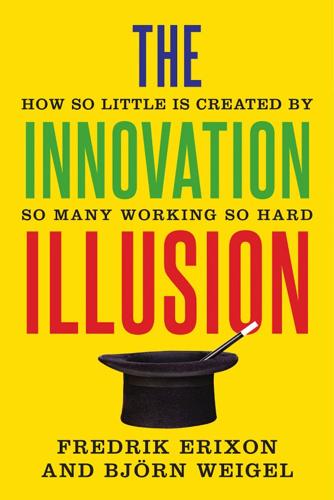
The Innovation Illusion: How So Little Is Created by So Many Working So Hard
by
Fredrik Erixon
and
Bjorn Weigel
Published 3 Oct 2016
At the sixty-fourth square, the pile of rise equaled the size of Mount Everest. 10.Nietzsche, Thus Spoke Zarathustra, 41. 11.Levy, Love and Sex with Robots. 12.Holley, “Apple Co-founder on Artificial Intelligence.” 13.Romm, “Americans Are More Afraid of Robots Than Death.” 14.Smith and Anderson, “AI, Robotics, and the Future of Jobs.” 15.This section on Stafford Beer and Project Cybersyn builds on Medina, Cybernetic Revolutionaries. 16.Medina, Cybernetic Revolutionaries, 25. 17.Morozov, “The Planning Machine.” 18.Huebner, “A Possible Declining Trend for Worldwide Innovation,” 985. 19.Taleb, Antifragile. 20.Kelly, “The New Socialism.” 21.Mason, Postcapitalism. 22.The Economist, “Caught in the Net.” 23.Gilder, Microcosm. 24.Carswell, The End of Politics and the Birth of iDemocracy. 25.Fukuyama, The End of History, 98–108. 26.Kaminsky, “Iran’s Twitter Revolution.” 27.Nixon, “Lack of Innovation Leaves EU Trailing.” 28.OECD, “Territorial Review: Stockholm, Sweden 2006.” 29.Legrain, European Spring, 367. 30.Gordon, “Secular Stagnation.” 31.Gage, “The Venture Capital Secret.” 32.Marmer et al., “Startup Genome Report Extra,” 10. 33.Schumpeter’s vision of capitalism is explained in Schumpeter, The Theory of Economic Development and, in a different way, in Schumpeter, Capitalism, Socialism, and Democracy. 34.For a discerning analysis of the similarities between Marx and Schumpeter, see Elliott, “Marx and Schumpeter on Capitalism’s Creative Destruction.” 35.Schumpeter, Capitalism, Socialism, and Democracy (1992), 61. 36.To avoid repetition in the book we will use terms like contestable innovation, big innovation, radical innovation, or game-changing innovation to describe the same phenomenon: innovation that contests markets. 37.Mokyr, “Long-Term Economic Growth and the History of Technology,” 4. 38.Broadberry et al., British Economic Growth. 39.Clark, A Farewell to Alms, 1. 40.Phelps, Mass Flourishing. 41.Our version of modern capitalism and its birth draws on several scholars such as Gregory Clark, David Landes, Joel Mokyr, and Edmund Phelps.
…
At http://www.knowyourmobile.com/nokia/nokia-3310/19848/history-mobile-phones-1973-2008-handsets-made-it-all-happen. Gordon, Robert J., “Is US Economic Growth Over? Faltering Innovation Confronts the Six Headwinds.” NBER Working Paper No. 18315. National Bureau of Economic Research, Aug. 2012. Gordon, Robert J., “Secular Stagnation: A Supply-Side View.” American Economic Review, 105.5 (2015): 54–9. At http://dx.doi.org/10.1257/aer.p20151102. Gordon, Robert, “The Demise of US Economic Growth: Restatement, Rebuttal, and Reflections.” NBER Working Paper No. 19895. National Bureau of Economic Research, Feb. 2014. At http://www.nber.org/papers/w19895.
…
Summers, Lawrence H., “Making Sense of the Productivity Slowdown,” Keynote address, Peterson Institute for International Economics, Washington, DC, Nov. 16, 2015. At https://piie.com/sites/default/files/publications/papers/transcript-20151116keynote.pdf. Summers, Lawrence H., “US Economic Prospects: Secular Stagnation, Hysteresis, and the Zero Lower Bound.” Business Economics, 49.2 (2014): 65–73. Sunstein, Cass, “Beyond the Precautionary Principle.” Public Law and Legal Theory Working Paper No. 38. Law School, University of Chicago, Jan. 2003. At http://ssrn.com/abstract=307098. Surowiecki, James, “Unequal Shares.”

The Great Reset: How the Post-Crash Economy Will Change the Way We Live and Work
by
Richard Florida
Published 22 Apr 2010
Not that it felt that way to anyone living through those dark times. The zeitgeist of the period was one of panic in the face of economic decline and “secular stagnation,” to borrow from the language that the Harvard economist and adviser of Franklin D. Roosevelt, Alvin Hansen, used to describe the tendency of the economy to stay depressed as people save money, even hoard it, rather than buy and invest in a manner that might create jobs or otherwise increase the general economic health. By the late 1930s, Hansen argued that secular stagnation had permanently paralyzed the American economy. It would never grow rapidly again, he believed, because all the ingredients for growth, including technological innovation and population growth, had been exhausted, and deficit spending by the government was the only way out.
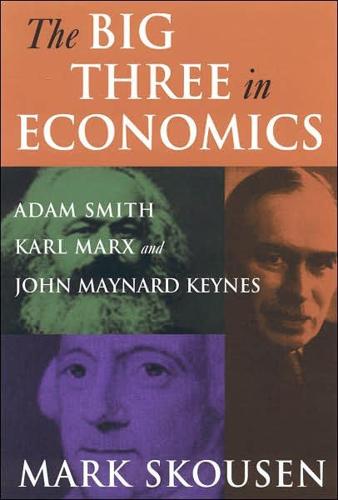
Big Three in Economics: Adam Smith, Karl Marx, and John Maynard Keynes
by
Mark Skousen
Published 22 Dec 2006
But if their monetary theories of the business cycle had all the answers, why didn't they catch on? Primarily, their model was not appreciated until after the Great Depression took hold. And when the Great Depression didn't end quickly, as the Austrians predicted, economists started searching for a new model that could explain secular stagnation in a capitalist economy. Hayek and Mises advocated standard neoclassical solutions such as cutting wages and prices, lowering taxes, and reducing government interference in commerce and trade, but they adamantly counseled against reinflation and deficit spending. "It would only mean that the seed would already be sown for new disturbances and new crises," Hayek warned.
…
According to Mark Blaug, "Alvin Hansen did more than any other economist to bring the Keynesian Revolution to America" (Blaug 1985, 79). "Stagnation Thesis" Discredits Hansen and Almost Destroys Samuelson's Reputation However, Hansen fell into a trap. He logically extended Keynes's unemployment equilibrium theory into a "secular stagnation thesis." (Keynes himself believed that conditions of the 1930s could persist indefinitely.) In his presidential address before the AEA in 1937, Hansen boldly announced that the United States was stuck in a "mature economy" rut from which it could not escape, due to its lack of technological innovations, the American frontier, and the population growth rate.

Limitless: The Federal Reserve Takes on a New Age of Crisis
by
Jeanna Smialek
Published 27 Feb 2023
When he took the helm of the Fed in 2018, Powell became the first chair to preside over the institution at a time when the threat of tepid growth and inflation across advanced economies was widely accepted as reality. When Yellen was in charge, people were only beginning to appreciate the extent of the issue. Larry Summers, the prominent Harvard economist and former Clinton administration Treasury secretary, had first dusted off the old concept of “secular stagnation” during a 2013 speech at the International Monetary Fund. The phrase had been coined in 1938 to describe a market-based economy doomed to little or no growth. Summers suggested, not exactly full-throatedly, that the idea might explain what was happening in Japan and “may not be without relevance to America’s experience today.”[9] Mainstream economists generally nodded along with the analysis, though some differed on the details.
…
.: appearance of, 43, 64; bank run avoidance by banking network of, 64–6, 161; birth, early life, and family of, 42–3, 43n, 118n; Bretton Woods meeting role of, 75–6; business success of, 43, 64, 66; chairmanship of, 67–9, 70–2, 72n; congressional testimony of, 66, 67; death of, 301; economic ideology of, 42, 66–7, 119–20; family ties to Quarles, 104, 117–20; Fed changes under, 6, 63, 67–9, 130, 278, 300, 301, 338n90; governor role of, 70–1; inflation policy of Truman administration response of, 71–4, 72n, 339n9; marriage of, 75; Mormon faith of, 75, 119–20; Rotary Club speech of, 62, 338n81; saving America from disaster by, 69, 70; as social gnat, 300; statue of, 118–19, 118n; thrift and frugality of, 43; wealth of, 43, 66 economic forecasts/projections, 77–8, 95, 106 economic policy: employment and labor market and, 4, 12, 18–19, 111–16, 231–4; Fed role in setting, 3–4, 61–2; financial crisis of 2008 and, 4, 24–6; income and wealth inequality, 5, 23, 113, 113n, 223–9, 227n, 348nn13–14, 348n19, 348nn21–22; macroeconomic management, 61–2, 82, 86, 130, 230, 341n9; public opinion about, 25–6 economists: conference of academic economists, 107; listening skills and awareness of challenges faced by Americans, 132–3; opinions about profession, 76–7; Powell’s lack of PhD in economics, 17, 108–9; staff economists at Fed, 108–9 economy: bond buying by Fed to support, 4–5, 20, 21, 22, 72–4, 72n, 93; expansion under Yellen, 101–2; expertise of Powell, 17; impact of pandemic on, 6, 40–1, 137–8, 139, 142, 166–8, 178–80, 202–4, 252, 263; impact of pandemic on global economy, 134–5, 136, 137; inflation and slowing of, 6, 8, 18–19, 22, 22n, 76–82, 284; interest rates, economic trends, and strength of, 111–16; jolt to, 113, 113n; lowering interest rates to support growth of, 4–5, 21–2, 108–10, 111–16, 341n9; management by Fed, 4; money supply as driver of economic outcomes, 79–80; raising interest rates to slow growth, 12, 18–19; rescue program during 2008 crisis, 184; rescue program of Fed and support for, 3, 4–5, 6, 13, 40–1; role of Fed in, 6; secular stagnation, 114, 341n9; slowdown of and Fed monetary policy, 108–10, 111–16, 341n9; 2020 presidential election and economic sabotage claims, 256 Employ America, 235–7, 239 Employment Act (1946), 74 employment/labor market: Depression and unemployment, 63, 69, 76; economic policy and the labor market, 4, 12, 18–19, 111–16, 231–4; Employ America (Fed Up) and employment policy, 235–7; financial crisis of 2008 and downturn in, 25–6, 93–4, 132–3, 132–3n; full employment and monetary policy, 22, 77–8, 80, 96–7, 97n, 101, 233–4, 239–44, 250; gradualism of Fed and, 26–7, 100–2; impact of pandemic on, 39, 179–80, 237, 252; inflation and, 6, 18–19, 22, 76–82, 96–7, 97n, 100–2, 234, 236–7, 239–44; labor shortages, 232, 244; maximum employment goal, 241–4, 284, 286; postcrisis rebound and unemployment rates, 26–7; unemployment benefits expansion during pandemic, 252, 281; unemployment filings during pandemic, 211 England/United Kingdom: Bank of England, 46, 51, 53, 94, 142, 175, 196, 267, 336n24; money market and financial system in, 50–1; NGFS role of, 266; sealed deposits in, 335n9; sterling crisis and gold standard in, 338n85 environment.
…
“Randy”: background, education, and expertise of, 117, 170; bipartisan qualities of, 127; career of, 117–18, 170, 170n; character and personal style of, 118, 120; departure from Fed and concerns about legacy of pandemic response programs, 293–4, 299; digital currency and role of Fed, position on, 272–3; discount window, support for using by banks, 156–7; economic ideology of, 119–21, 293–4, 297; environmental policy role of, 264–5, 268–70; family ties to Eccles, 104, 117–20; Libra, meetings about, 152–3, 153n; marriage and family of, 117–18; meeting before Asian markets open during pandemic, 34–5; Mormon faith of, 119–20; pandemic rescue program role of, 204, 214–16, 246–7; politics of, 127, 127n; regulation changes and deregulation under, 104, 121–2, 125–6, 127, 154–5, 214–16, 296, 347n20; relationship with Powell, 104, 122; resilience of financial system, opinion about, 104; rules-based policies preference of, 214–15; suspension of bank payments, opinion about, 215–16; trust between and working relationship of Powell, Brainard, and, 127–8; Utah home of and commute to D.C., 34, 117–18, 153–4; vice-chair for bank supervision position in, 271; vice-chair for bank supervision role of, 6, 34, 104, 116–17, 120–2; wealth of, 118, 133; work habits of, 152–4 R race and racism: Bostic comment on systemic racism, 223; diversity and racial equity at the Fed, 223–4, 229–31; income and wealth inequality, 23, 223–9, 227n, 348nn13–14, 348n19, 348nn21–22; Kashkari statement on racism, 223; murder of George Floyd and Black Lives Matter protests, 220–3, 347–8n7; racial disparities in public health and economic outcomes during pandemic, 220, 222–3, 250 Ramamurti, Bharat, 248, 249–50, 258 Reagan, Ronald, 83 regulation/financial regulation policy: bank stress tests, 121, 215–16, 216n; changes to and deregulation under Trump administration, 104, 117, 121–2, 125–6, 127, 169, 214–16, 296, 347n20; free-market economics/capitalism, 83, 120–1, 214–16, 264–5; lax oversight as a benefit to political donors, 169–70, 344–5n11; nonbank financial system and regulations, 52, 90, 103, 157–8, 168–72, 174, 216, 345n23, 347n20; oversight, regulation, and supervision of banks and financial markets, 13, 33, 38, 90–2, 103–4, 116–17, 157–8, 214–16, 334n6, 347n20; partisan nature of, 116–17; shadow banks, 168–72, 168n; transparency of, 120–1 research, economic, 12, 13, 222 Revolutionary War, 45, 335n12 Rexnord, 334n11 Rockefeller, John D., 52–3 Romney, Mitt, 164–5, 260, 276 Roosevelt, Franklin D., 63, 67, 68, 75 Rosengren, Eric, 171, 206n, 213–14, 233, 247, 295 Rotary Clubs, 62, 132, 338n81 Ryan, Paul, 96, 344–5n11 S Sanders, Bernie, 99, 102 San Francisco earthquake, 51 Schatz, Brian, 269–70 Schumer, Chuck, 138–9, 191, 199, 260–1 Schwarzman, Stephen, 178 secular stagnation, 114, 341n9 Securities and Exchange Commission, 103 sexism, 125n shadow banks, 168–72, 168n Shelton, Arthur, 54 Shelton, Judy, 235–6, 275–7, 279 shorting stocks, 52, 52n silver-backed money, 46, 47, 50 Silver Lane Elementary School, East Hartford, Connecticut, 11–12, 21, 22, 27–8, 105, 289 60 Minutes, 39–40, 94, 186 Smith, Michelle, 108, 136–7, 240 Snyder, John, 72–4 Solomon, David, 178 soup kitchens and food pantries, 288–9, 352n10 specie, 49, 335n11 stablecoins, 274–5 state and local government/municipal bonds, 152, 167–8, 207–9, 211, 213, 237–8, 248, 258–9, 294, 350n10, 350n31 state banks, 47–8, 336n16 Stein, Jeremy C., 13–14 Stephens, Samantha “Sam,” 202–4, 205, 212, 290–1 stock market crash (1987), 160, 344n47 Strong, Benjamin, Jr., 54n, 60–2, 130 Summers, Lawrence “Larry,” 114, 282–3, 341n9 T Tarullo, Daniel, 116–17, 153, 342n37 Taylor rule, 341n22 TD Securities, 29–30, 32, 163 Temporary Foreign and International Monetary Authorities Repo Facility (FIMA repo), 197–8 Tevlin, Stacey, 137 think tanks, economic and financial, 12, 17, 125n Tlaib, Rashida, 207–9 Today show, 190–1 Toomey, Patrick, 181, 249, 250, 253–4, 259–61, 276, 294 Treasury Department, U.S.: allocation of money for programs, 192, 199, 208, 211, 213, 247–8, 251–2, 253–62, 347n10; Brainard’s positions in, 122; Fed Board role of secretary of, 60, 69; financial decisions made during pandemic by, 7; Kashkari position at, 7, 37; location and meetings of Fed Board at, 60, 68–9; Mnuchin as secretary of, 104; Powell’s positions in, 14, 16–17; Quarles’s positions in, 117, 120–1; 2020 presidential election and continuation of pandemic relief efforts, 253–62, 263 Treasury-Fed Accord, 74 Treasury securities.

Investing Amid Low Expected Returns: Making the Most When Markets Offer the Least
by
Antti Ilmanen
Published 24 Feb 2022
It remains debated how much these benign developments reflected greater central bank independence and credibility (gravitational pull to their targets) versus mere luck.6 The Global Financial Crisis triggered widespread inflation concerns, given all the stimulus, yet the 2010s turned out to be a very disinflationary decade. A slow recovery led to worries of secular stagnation (growing debt and easier monetary policies were needed to sustain even moderate economic growth) and of “global Japanification” (Japan led the world by a couple of decades in demographics, excess savings, and its central bank's inability to generate inflation despite trying hard). Figure 2.4 Falling Yields Over Centuries: Eight-Country Evidence Since 1300s Source: Data from Paul Schmelzing's website.
…
It is also open whether asset prices are influenced more by global or local aging trends. 5 Vollrath (2020) estimates that most of the decline in US GDP-per-capita growth in the 21st century reflects slower human capital growth, as the multi-decade positive impact from women's higher labor force participation and the baby boomers' working age dissipated. Secondary reasons included slower productivity growth due to the shift from manufacturing to service economy as well as some firms' increasing market power. Rachel and Summers (2019) emphasize secular stagnation concerns and argue that the neutral real rate would have fallen even more in the absence of expansive fiscal policies and growing contingent liabilities related to aging. Other explanations to low real cash rates stress the saving glut channel (motivated by the high saving rates of workers in China and the rich in West), precautionary saving motive after the scars of the GFC and the Covid crisis, as well as modern tech companies' low investment needs (see e.g.
…
Qian, Edward; Ronald Hua; and Eric Sorensen (2007), Quantitative Equity Portfolio Management: Modern Techniques and Applications, Chapman and Hall. Rabin, Matthew; and Richard H. Thaler (2001), “Anomalies: Risk aversion,” Journal of Economic Perspectives 15(1), 219–232. Rachel, Lukasz; and Lawrence H. Summers (2019), “On secular stagnation in the industrialized world,” NBER working paper 26198. Randl, Otto; Arne Westerkamp; and Josef Zechner (2018), “Equilibrium policy portfolios when some assets are non-tradable,” SSRN working paper. Rattray, Sandy; Nick Granger; Campbell R. Harve; and Otto Van Hemert (2020), “Strategic rebalancing,” Journal of Portfolio Management 46(6), 10–31.

Make Your Own Job: How the Entrepreneurial Work Ethic Exhausted America
by
Erik Baker
Published 13 Jan 2025
See also Adam Tooze, Crashed: How a Decade of Financial Crises Changed the World (New York: Penguin, 2019); Lisa McCorkell and Sarah Hinkley, “The Post-Recession Labor Market: An Incomplete Recovery,” Institute for Research on Labor and Unemployment policy brief, University of California, Berkeley, March 25, 2019, https://irle.berkeley.edu/the-post-recession-labor-market-an-incomplete-recovery/. 2Lawrence H. Summers, “The Age of Secular Stagnation: What It Is and What to Do about It,” Foreign Affairs 95, no. 2 (2016): 2–9. See also Summers, “Demand Side Secular Stagnation,” American Economic Review 105, no. 5 (2015): 60–65. 3Robert J. Gordon, The Rise and Fall of American Growth: The U.S. Standard of Living since the Civil War (Princeton, NJ: Princeton University Press, 2016); Tyler Cowen, The Great Stagnation: How America Ate All the Low-Hanging Fruit of Modern History, Got Sick, and Will (Eventually) Feel Better (New York: Dutton, 2011). 4Fredric Jameson, Representing Capital: A Reading of Volume One (London: Verso, 2011), 2.
…
In total the twenty-first century decline in labor force participation has erased about half of the increase produced by the influx of women into the formal workforce that began in the 1960s.1 The track record of American growth in the twenty-first century has depressed many economists of a variety of political persuasions. Lawrence Summers, Clinton’s Treasury Secretary and one of the architects of the Obama administration’s response to the financial crisis, polished off the Depression-era concept of “secular stagnation” to diagnose an economy “stuck in neutral” due to a systemic, long-term excess of savings relative to investment, a downstream consequence of capital-saving innovation permitting rapid corporate growth without net investment.2 The Northwestern economic historian Robert J. Gordon made headlines in 2016 for asserting that the American economy had simply exhausted the pool of growth-enhancing innovations it was possible to develop—a thesis echoed but qualified by the libertarian economist Tyler Cowen, who insisted that only the “low-hanging fruit” have been plucked and capitalist ingenuity may prove to have more tricks still up its sleeve.3 Twenty-first-century Marxists, as well, have tended to sketch a picture of contemporary capitalism that emphasizes sluggishness and resource underutilization, in contrast to the rapacious dynamism accentuated in many past portraits.

The Vanishing Middle Class: Prejudice and Power in a Dual Economy
by
Peter Temin
Published 17 Mar 2017
“A Retrospective Look at Rescuing and Restructuring General Motors and Chrysler.” Journal of Economic Perspectives 29 (2) (Spring): 3–24. Goos, Maarten, Alan Manning, and Anna Salomons. 2014. “Explaining Job Polarization: Routine-Biased Technical Change and Offshoring.” American Economic Review 104 (8) (August): 2509–2526. Gordon, Robert J. 2015. “Secular Stagnation: A Supply-Side View.” American Economic Review 105 (5) (May): 54–59. Gornick, Janet C., and Branko Milanovic. 2015. “Income Inequality in the United States in Cross-National Perspective: Redistribution Revisited.” Luxembourg Income Study Center Research Brief (1/2015), May 4. Gottschalk, Marie. 2015.
…
New York Times, April 22. Stolberg, Sheryl Gay, and Nicholas Fandos. 2016. “Washington Metro, 40 and Creaking, Stares at a Midlife Crisis.” New York Times, April 3. Stuntz, William J. 2011. The Collapse of American Criminal Justice. Cambridge, MA: Harvard University Press. Summers, Lawrence H. 2015.“Demand Side Secular Stagnation.” American Economic Review 105 (5): 60–65. Surowiecki, James. 2016. “System Overload.” New Yorker, April 18. Swarns, Rachel L. 2015. “Biased Lending Evolves, and Blacks Face Trouble Getting Mortgages.” New York Times, October 30. Swavolo, Elizabeth, Kristine Riley, and Ram Subramanian. 2016.
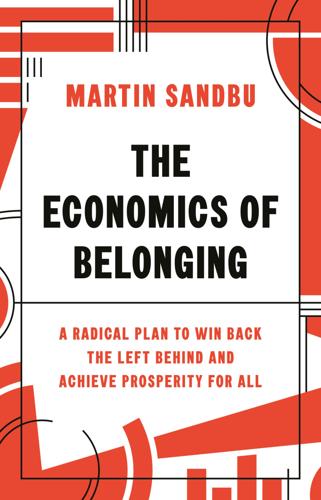
The Economics of Belonging: A Radical Plan to Win Back the Left Behind and Achieve Prosperity for All
by
Martin Sandbu
Published 15 Jun 2020
Raghuram Rajan, Fault Lines: How Hidden Fractures Still Threaten the World Economy, Princeton, NJ: Princeton University Press, 2010. 13. Irving Fisher, “The Debt-Deflation Theory of Great Depressions,” Econometrica 1, no. 4 (1933): 337–57; Richard Koo, “Balance Sheet Recession Is the Reason for ‘Secular Stagnation,’ ” VoxEU, 11 August 2014, https://voxeu.org/article/balance-sheet-recession-reason-secular-stagnation. 14. See Robert Shiller, Finance and the Good Society, Princeton, NJ: Princeton University Press, 2012, for more on equity-like financial products to make people’s lives less risky. 15. Shiller. 16. There are many other reasons for such a move.
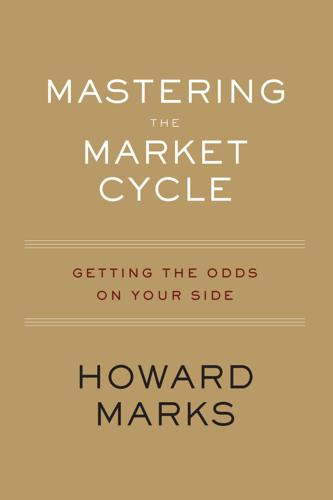
Mastering the Market Cycle: Getting the Odds on Your Side
by
Howard Marks
Published 30 Sep 2018
More recently, economic growth appears to have slowed in the U.S. (as well as elsewhere). Is this a short-term cyclical change relative to the underlying long-term trend, or a change in the long-term trend itself? It will take many years before we know definitively. But there has arisen a school of thought blaming it on “secular stagnation”—that is, a fundamental slowing of the long-term trend. Gains in population and productivity have declined in the U.S., as they have in other developed nations. Taken together, these two things suggest GDP will grow more slowly in the U.S. in the coming years than it did in the years following World War II.
…
You Can Prepare.” 33–34, 138, 141–42, 147 Masson, Richard, 6 Milken, Michael, 5, 165, 281–82 Misbehaving (Thaler), 93 Mlodinow, Leonard, 42–43 Morgan Stanley, 155 mortgage lending, 122–24, 127–28, 174–75 government role, 179 See also Global Financial Crisis of 2007–08 Munger, Charlie, 4, 5, 222, 284 N New York Times Magazine, 180 Newberg, Bruce, 5 Nifty Fifty, 197–99, 279, 292 “no price too high,” 198–99, 215, 288 O Oaktree Capital Management, 2, 6, 267 colleagues, 45, 126, 177, 190 distressed debt investments, 161 Global Financial Crisis of 2007–08, 230, 235–36, 244 levered funds, 129–32 Oaktree Conference (2012), 175 oscillation and secular trends, 24–25, 27–29, 31 cycle symmetry, 35–36, 45 secular stagnation, 57 P Paulson, Hank, 239 pendulums definition of, 24, 83 positive and negative elements, 83–84 stock market average, 85–86 See also bull and bear markets; cycles Phipps, Henry, 283 population birth rate, 52–54, 59 demographic movement, 54 unemployment rate, 54 portfolio balancing aggressiveness and defensiveness, 12 twin risks, 242–43 Prince, Charles, 121 probability distributions, 14–15, 19–21 productivity, effects on aspiration, 54–55 education, 55 globalization, 56 population, 51–52, 57–58 productive process changes, 53, 55–58 productivity, post-World War II, 56–57 profits and sales cycles of, 74–77, 137–38 determining profit, 79–80 disruption by technology, 80–81 leverage, financial, 78–79 leverage, operating, 77–78 See also companies pronouns, he or she, 7 psychology.

More: The 10,000-Year Rise of the World Economy
by
Philip Coggan
Published 6 Feb 2020
Mai Chi Dao, Mitali Das, Zsoka Koczan and Weicheng Lian, “Drivers of declining share of labor income”, April 12th 2017, https://blogs.imf.org/2017/04/12/drivers-of-declining-labor-share-of-income/ 40. Lawrence H. Summers, “Reflections on the new ‘Secular Stagnation hypothesis’”, October 30th 2014, https://voxeu.org/article/larry-summers-secular-stagnation 41. Ibid. 42. Jinill Kim, “The effects of demographic change on GDP growth in OECD economies”, September 28th 2016, www.federalreserve.gov 43. This was the issue at the heart of the Uber case, working its way through the British courts at the time of writing.
…
Another quarter of the shift was down to globalisation; companies in the developed world were shifting jobs to low-wage countries in the rest of the world.39 The sluggish overall level of growth that followed the financial crisis led some economists to rethink their previous models. Larry Summers, who was Treasury secretary under Bill Clinton and director of the National Economic Council under Barack Obama, argued that longer-term forces were at work. He revived a phrase first used by Alvin Hansen in 1938: secular stagnation.40 Mr Summers claimed that the shock caused by the financial crisis seemed to have caused a permanent shift in the trend growth rate of output. The fear was that no level of interest rates would “permit the balance of savings and investment at full employment”. This shift was driven by a number of factors.

Capitalism in America: A History
by
Adrian Wooldridge
and
Alan Greenspan
Published 15 Oct 2018
Uncle Sam provided the arsenal of democracy that saved the twentieth century from ruin. This is a remarkable story. But it is also a story with a sting in the tail: today, productivity growth has all but stalled. Tyler Cowen has talked about a “great stagnation.” Lawrence Summers has revived Alvin Hansen’s phrase, “secular stagnation.” Robert Gordon’s study of the American economy since the Civil War is called The Rise and Fall of American Growth. America is being defeated by China and other rising powers in one industry after another. The number of new companies being created has reached a modern low. The labor market is becoming stickier.
…
A country with 7 percent of the world’s population produced 42 percent of its manufactured goods, 43 percent of its electricity, 57 percent of its steel, 62 percent of its oil, and 80 percent of its cars. Before the war, Alvin Hansen, a Harvard economist, had worried that America was entering an era of “secular stagnation,” a phrase that we will encounter again in later chapters. For twenty-five years after the war, the economy boomed and Harvard economists, looking for an ax to grind, began to focus on the evils of affluence. Postwar America was a land of opportunity. Returning troops without a penny in their pockets could get into college and buy a house courtesy of the GI Bill.
…
Southern Pacific Railroad Co., 159 Sarbanes-Oxley Act of 2002, 369, 411 Saunders, Clarence, 215–16 savings rate, 377 Saxenian, AnnaLee, 353 Schlesinger, Arthur, Jr., 325, 423 Schlitz Brewing, 263 Schmidt, Eric, 355 Scholes, Myron, 383 Schultz, Howard, 333 Schumpeter, Joseph, 9, 14, 138–39, 169, 319, 333, 397, 424 Schwartz, Anna, 236 Scientific American, 147 Scopes, John, 153, 195–96 Scotch Irish, 60, 68 SeaLand Service, 292–93 Sears, Richard Warren, 140–42 “secular stagnation,” 4, 273 Securities and Exchange Commission (SEC), 243, 411 securitization, 340–41, 377–78 Sedition Act of 1918, 186 self-interest, 6–7 semiconductor industry, 317 sentencing guidelines, 398–99 September 11 attacks, 368, 369–70, 372 Servan-Schreiber, Jean-Jacques, 294–95 service sector, 195 7-Eleven, 263 Seventeenth Amendment, 179 Seventies, the, 299–325 sexism, 363 Shane (movie), 111 sharecropping, 87 “shareholder activism,” 338 shareholders, 206–9 Shaw, George Bernard, 310 Sherman, John, 84 Sherman, William Tecumseh, 80, 84 Sherman Antitrust Act of 1890, 143, 154, 159–60, 162, 184 Sherman Silver Purchase Act of 1890, 162 Shockley, William, 352 Shultz, George, 329 Silicon Valley, 28, 351–55, 366 Silliman, Benjamin, 101 silver, 152, 161–62 Sinclair, Upton, 177, 245 Singer, Isaac, 47, 48, 422 Sixteenth Amendment, 184, 427 Slater, Samuel, 71 slaughterhouses, 118–19 slavery, 9, 33–34, 43, 60–61, 74–87, 419, 433, 434 average price of prime field hand, 76, 76 Sloan, Alfred, 209–12 Smith, Adam, 6–7, 36, 256 Smith, Fred, 333 Smith, Gerald L.
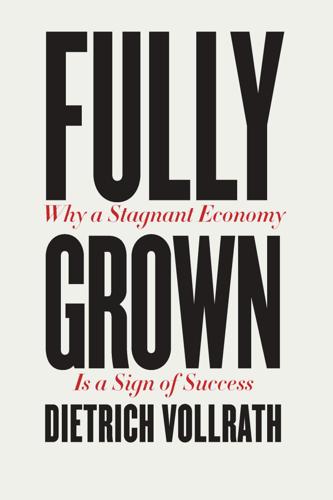
Fully Grown: Why a Stagnant Economy Is a Sign of Success
by
Dietrich Vollrath
Published 6 Jan 2020
You can find multiple stories on slow economic growth in past issues of the Wall Street Journal, the Economist, the Atlantic, the New York Times, and the Financial Times, just to name a few. During the 2016 Republican presidential primary, Jeb Bush made a campaign promise of achieving 4% growth in gross domestic product (GDP), something we haven’t seen in twenty years. There is an ongoing argument over whether the US economy is experiencing “secular stagnation,” but no one disputes that stagnation exists. Recurring debates about government spending and debt hinge on claims that certain policies can, or cannot, increase the growth rate of GDP. The slowdown is easy to see in the data. The growth rate of GDP per capita, which is what I focus on in this book, averaged 2.25% per year from 1950 to 2000.
…
See also residual growth professional services industry, 84, 85, 88, 90, 91, 94 Q ratio, 119–24, 240 real estate industry, 85 real GDP per capita: absolute growth, 14; accounting for growth rate, 46–54, 224–30, 239; across countries, 19–23; definition, 16–18, 184, 217, 218–20; errors in measuring, 73–75; growth rate, 12, 13, 77, 103, 208, 209, 215, 216; industrial composition, 83; level, 14, 15, 16; metropolitan statistical area level, 159; potential, 24; relationship to physical and human capital, 41–43, 45, 63, 65; state level, 157; trade, 197, 204 reallocation, 3, 79, 80, 152–54, 206, 207, 234, 241, 242; between establishments, 139–43; geographic, 155, 162, 164, 167, 178; from goods to services, 81, 82–89, 101; regulation, 171, 174, 175; trade, 201, 202 regulation, 3, 8–10, 170–72, 181–84, 206, 207, 210–12; business conditions, 181, 245; housing, 168, 178–80, 244–46; measurement, 174, 175; relationship with growth, 176, 177; relationship with investment, 124 residual growth, 3, 54, 157; calculation, 45–53, 224, 226–30, 242, 248; definition, 41, 42; equivalence with productivity, 70, 73; by industry, 75, 78, 82. See also productivity rival. See nonrival robot, 8, 35, 66 secular stagnation, 2 services, 2, 3, 4, 126, 137, 152, 162, 169, 215; from capital, 34, 36, 85, 165; cost disease, 95; effect on productivity growth, 85, 88, 89; income elasticity, 98–101, 103; inequality, 185, 193, 194; labor requirements, 94–96, 248; market power, 113, 114, 239, 240; price level, 90, 91, 96, 97; shift toward, 5, 6, 7, 10, 46, 78–83, 93, 102, 103, 138, 152, 155, 206–9, 233, 235, 236, 237; value of, 17, 26, 35, 72–75, 89, 91, 157, 183, 184, 197, 219, 220, 224 share buybacks, 111, 125, 210 Sherman Act, 135 Silicon Valley, 155, 160, 173, 179 Stigler Commission, 74 stock market, 17, 110 taxes, 3, 9, 10, 171, 173–78, 183, 184, 211, 244, 245; dividend tax, 9, 171, 172; income tax, 170, 173 technology, 46, 113, 128; difference from productivity, 71–73, 75 total factor productivity, 70, 86.

The Classical School
by
Callum Williams
Published 19 May 2020
Nonetheless, Luxemburg’s arguments will make mainstream economists stop and think. At certain points in history, economists have worried that capitalism has reached a point where further growth is not possible. Alvin Hansen, an American economist who in the 1930s was confronted by persistently weak economic growth, proposed the term “secular stagnation” to describe what he saw. In the face of weak growth in the period after the financial crisis of 2008–09, Lawrence Summers revived that term, arguing that as populations in rich countries age, more saving takes place, which results in structurally weak demand. Economists of both right and left worry that high levels of income inequality are bad for economic growth, since rich people save their income rather than spend it.
…
One defence, often used in books such as these, sounds something along the lines of “the economists of old can teach us something about today”. This is vague and almost always wrong. There is only a handful of examples where stuff written by long-dead economists is rediscovered and turns out to be genuinely helpful to the modern era–Alvin Hansen’s concept of “secular stagnation”, revived by Larry Summers in 2013, is one of the few. Adam Smith’s view of poverty as simultaneously relative and absolute also falls into this bracket. But does anyone really believe that, if only we read Ricardo closely enough, he will reveal to us something about the world that no one living today has thought of?

Shocks, Crises, and False Alarms: How to Assess True Macroeconomic Risk
by
Philipp Carlsson-Szlezak
and
Paul Swartz
Published 8 Jul 2024
Elise Gould and Katherine deCourcy, “Low-Wage Workers Have Seen Historically Fast Real Wage Growth in the Pandemic Business Cycle,” Economic Policy Institute, March 23, 2023, https://www.epi.org/publication/swa-wages-2022/. 15. Larry Summers, “Secular Stagnation or Secular Stagflation,” Speech at the London School of Economics, June 20, 2022, https://www.lse.ac.uk/Events/Open/202206201845/secular-stagnation-or-secular-stagflation. 16. Philipp Carlsson-Szlezak and Paul Swartz, “How to Break Inflation Expectations and the Equity Market,” Sanford C. Bernstein, June 15, 2018. Reprinted in An Economic History of Now, November 2018. 17.
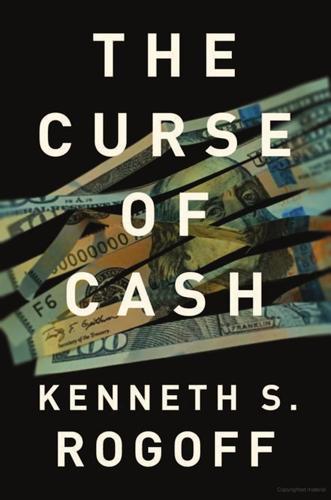
The Curse of Cash
by
Kenneth S Rogoff
Published 29 Aug 2016
Thus the usual view that loose monetary policy is a driver of speculative bubbles might not be properly accounting for underlying factors that are simultaneously shifting both interest rates and risky borrowing. 4. See the interview of Bernanke in Rolnick (2004). 5. Reinhart and Rogoff (2009). 6. Philippon (2015) emphasizes the difficulty of measuring the contribution of the financial industry to GDP. 7. Yes, if secular stagnation turns out to imply that equilibrium real policy interest rates must remain below –2.0% for years on end (implying nominal rates below zero), then great adaptation will be necessary, but for the moment, this is certainly not the central long-term scenario. 8. See Chris Kimball and Miles Kimball, “However Low Interest Rates Might Go, the IRS Will Never Act Like a Bank,” Quartz blog, April 15, 2015, available at http://qz.com/383737/however-low-interest-rates-might-go-the-irs-will-never-act-like-a-bank/.
…
Available at http://www.project-syndicate.org/commentary/inflation-is-now-the-lesser-evil. ———. 2014. “Costs and Benefits to Phasing Out Paper Currency.” In NBER Macroeconomics Annual, ed. Jonathan Parker and Michael Woodford. Chicago: University of Chicago Press. ———. 2016. “Debt Supercycle, Not Secular Stagnation.” In Progress and Confusion: The State of Macroeconomic Policy, edited by Olivier Blanchard, Raghuram Rajan, Kenneth Rogoff, and Lawrence H. Summers. Cambridge: MIT Press, pp. 19–28. Rolnick, Arthur J. 2004. “Interview with Ben S. Bernanke.” Minneapolis Federal Reserve, Region Magazine (June).

Rise of the Robots: Technology and the Threat of a Jobless Future
by
Martin Ford
Published 4 May 2015
* Obviously, I’m leaving aside those people who might choose to drop out of the workforce (at least temporarily) for reasons we would likely consider more legitimate, such as caring for children or other family members. For some families, for example, a basic income might turn out to be a partial solution to the looming elder-care problem. * Some economists, most notably former US Treasury secretary Larry Summers, have suggested that the economy is currently trapped in “secular stagnation”—a situation where interest rates are near zero, the economy is operating below its potential, and there is too little investment in more productive opportunities. I think a future where everyone is dependent almost entirely on his or her mutual fund balance for economic survival might well result in a similar outcome.
…
Medtronic, Inc., 150n risk, Peltzman effect and, 267–268 RoboBusiness conference/tradeshow, 7 Robot & Frank (film), 155 robotics, 6–8 cloud, 20–23 See also automation; robots robotic walkers, 157 robots in agriculture, 23–26 box-moving, 1–2, 5–6 consumer, 197n educational, 7 elder-care, 155–158 hospital and pharmacy, 153–155 industrial, 1–5, 10–11 personal, 7 telepresence, 119–120, 157 Rolling Stone (magazine), 56 Romney, Mitt, 272 Roosevelt, Franklin, 279 Rosenthal, Elisabeth, 160, 163 Rosenwald, Michael, 107 ROS (Robot Operating System), 6, 7 Russell, Stuart, 229 Rutter, Brad, 101 Sachs, Jeffrey, 60 Saez, Emmanuel, 46 safety, autonomous cars and, 184–185, 187 Salesforce.com, 134 Samsung Electronics, 70n Samuelson, Paul, x Sand, Benjamin M., 127 San Jose State University, 134 Sankai, Yoshiyuki, 156–157 Santelli, Rick, 170 savings, China’s high rate of, 224–225 SBTC. See skill biased technological change (SBTC) Schlosser, Eric, 210 Schmidt, Michael, 108, 109 Schwarzenegger, Arnold, 22 S-curves, 66–67, 68, 69, 70–71, 250 secular stagnation, 274n self-driving cars, See autonomous cars Selingo, Jeffrey J., 140, 141 Semiconductor Industry Association, 80 service sector, 12–20 The Shallows (Carr), 254 Shang-Jin Wei, 225 Silvercar, 20 Simonyi, Charles, 71 single-payer health care system, 165–167, 169 The Singularity, 233–238, 248 The Singularity Is Near (Kurzweil), 234 Singularity University, 234 Siu, Henry E., 49, 50 skill biased technological change (SBTC), 48 skills, acquisition of by computers, xv–xvi Skipper, John, 201 “Skynet,” 22 Slate (magazine), 153 Smalley, Richard, 244–245 Smith, Adam, 73 Smith, Noah, 219–220, 273 Smith, Will, 111 social media response program, 93–94 social safety net, 278.

The Startup Way: Making Entrepreneurship a Fundamental Discipline of Every Enterprise
by
Eric Ries
Published 15 Mar 2017
If there is no liquid market for the underlying stock, the employee can be forced into bankruptcy for lack of liquidity to pay these taxes. It’s a huge mess. Lack of access to growth for public investors. This is perhaps the worst consequence of all, from a policy point of view. Ordinary investors are simply shut out entirely from this ecosystem. In a world of low-growth investment opportunities and fears of “secular stagnation,”32 it seems especially cruel to prevent ordinary citizens from accessing the fastest-growing investment opportunities—especially younger citizens investing for retirement who have the time horizon to take maximum advantage of the risks involved in companies like these (with appropriate portfolio management).
…
Chopra, Innovative State, pp. 121–22. 30. hbr.org/2017/02/a-few-unicorns-are-no-substitute-for-a-competitive-innovative-economy. 31. site.warrington.ufl.edu/ritter/files/2017/06/IPOs2016Statistics.pdf. 32. jstor.org/stable/1806983?seq=1#page_scan_tab_contents; larrysummers.com/2017/06/01/secular-stagnation-even-truer-today. 33. techcrunch.com/2017/06/28/a-look-back-at-amazons-1997-ipo. 34. niskanencenter.org/blog/future-liberalism-politicization-everything/. EPILOGUE 1. bloomberg.com/view/articles/2017–04–12/here-s-one-more-thing-to-blame-on-senior-management. INDEX References to charts and diagrams appear in italics.

The Glass Half-Empty: Debunking the Myth of Progress in the Twenty-First Century
by
Rodrigo Aguilera
Published 10 Mar 2020
As if yet another contradiction of capitalism is needed at this point, we live in a world awash with savings yet with precious few investments into which they can be channeled. Economists have given this phenomenon various names and various causes. One is the “global savings glut” described by former Fed Chairman Ben Bernanke and driven by excess savings by certain economies (namely China, oil producers like Saudi Arabia, and Germany).5 Another is “secular stagnation”, a Depression-era hypothesis recently revived by Lawrence Summers, which is caused by low population growth, reduced capital intensity of new industries, and low prices of capital goods.6 Yet the extraordinary investments needed to combat climate change suggest that there should be no shortage of opportunities for climate-conscious investors.
…
, Finance and Development, 53(2), Jun. 2016, https://www.imf.org/external/pubs/ft/fandd/2016/06/ostry.htm 59 Harvey, D., “Neoliberalism as Creative Destruction”, The Annals of the American Academy of Political and Social Science, 610, Mar. 2007, https://doi.org/10.1177/0002716206296780 60 Biebricher, T., “Neoliberalism and Democracy”, Constellations, 22(2), 2015, https://doi.org/10.1111/1467-8675.12157 61 “Statement of Aims”, The Mont Pelerin Society, https://www.montpelerin.org/statement-of-aims/ Epilogue: Winds of Change 1 “Matt Ridley - Stories for Change”, OpenLearn, 13 Nov. 2015, https://www.open.edu/openlearn/nature-environment/the-environment/creative-climate/stories-change/matt-ridley-stories-change 2 Global Warming of 1.5 °C (Intergovernmental Panel on Climate Change, 2018), Ch. 1, https://www.ipcc.ch/sr15/ 3 Pinker, S., Enlightenment Now, pg. 7 4 Scripps CO2 program, https://scripps.ucsd.edu/programs/keelingcurve/permissions-and-data-sources/ http://scrippsco2.ucsd.edu/data/atmospheric_co2/icecore_merged_products 5 Bernanke, B., “The Global Saving Glut and the U.S. Current Account Deficit”, The Federal Reserve Board, 10 Mar. 2005, https://www.federalreserve.gov/boarddocs/speeches/2005/200503102/default.htm 6 Most of Lawrence Summer’s writing on the topic can be accessed at: http://larrysummers.com/category/secular-stagnation/ 7 Alcott, B., “Jevons’ paradox”, Ecological Economics, 50(1), Jul. 2005, https://doi.org/10.1016/j.ecolecon.2005.03.020 8 Peeters, P. et al., “Are technology myths stalling aviation climate policy?” Transportation Research Part D, 44, May 2016, https://doi.org/10.1016/j.trd.2016.02.004 9 “Millennium Development Goals Indicators”, United Nations, http://mdgs.un.org/unsd/mdg/SeriesDetail.aspx?

Slouching Towards Utopia: An Economic History of the Twentieth Century
by
J. Bradford Delong
Published 6 Apr 2020
The acronyms are for the Troubled Asset Relief Program, the Term-Asset Backed Security Loan Facility, the Home Affordable Modification Program, and the American Recovery and Reinvestment Act. 26. “Gore vs. Kemp: The 1996 Vice-Presidential Debate,” YouTube, posted by PBS NewsHour, September 26, 2020, www.youtube.com/watch?v=HZCcSTz1qLo. 27. Lawrence Summers, “The Age of Secular Stagnation,” Foreign Affairs, March/April 2016, www.foreignaffairs.com/articles/united-states/2016-02-15/age-secular-stagnation. 28. See Olivier J. Blanchard, “Public Debt and Low Interest Rates,” American Economic Association, January 4, 2019, www.aeaweb.org/webcasts/2019/aea-presidential-address-public-debt-and-low-interest-rates. 29. Barack Obama, “Remarks by the President in State of the Union Address,” White House, President Barack Obama, January 27, 2010, https://obamawhitehouse.archives.gov/the-press-office/remarks-president-state-union-address. 30.
…
In the United States, as well, policy makers lifted their foot off the gas pedal in the early 2010s. Future historians will find least comprehensible the unwillingness of governments at that moment to borrow and spend. Starting in the mid-2000s, there came an era of what the economist Larry Summers has named “secular stagnation”: a time of very low interest rates on safe bonds, driven by a shortage of risk-bearing capacity and a hunger for safe assets on the part of insecure private investors.27 As long as these circumstances held, governments could truly borrow for free. By now most economists agree that in such situations, governments should take advantage and borrow.

Why Wall Street Matters
by
William D. Cohan
Published 27 Feb 2017
Prudent risk taking is essential to keeping our economy growing and innovating. But at the moment, Washington is winning, and the American people are paying the heavy price for an economy that is mired in a low-growth, low-inflation, low-wage mode. Larry Summers, the Harvard economist and former Treasury secretary, refers to this lamentable state of affairs as the “secular stagnation” of an economy “stuck in neutral” and unable to generate annual GDP growth of more than 2 percent. “The reality is that if American growth continues to have a 2 per cent ceiling, it is doubtful that we will achieve any of our major national objectives,” Summers wrote in an August 2016 Washington Post column.
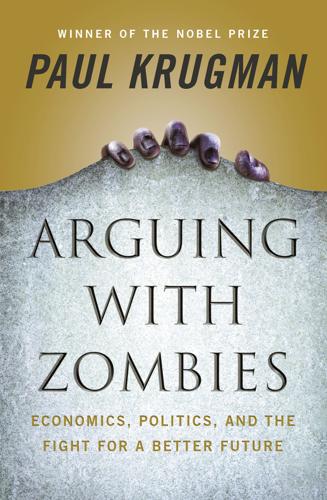
Arguing With Zombies: Economics, Politics, and the Fight for a Better Future
by
Paul Krugman
Published 28 Jan 2020
FIGURE 2. PUBLIC CONSTRUCTION SPENDING. Source: U.S. Bureau of Economic Analysis, U.S. Bureau of the Census. Notice, by the way, that I haven’t even talked about business-cycle-related reasons to stop obsessing over debt. An environment of persistently low interest rates raises concerns about secular stagnation—a tendency to suffer repeated intractable slumps, because the Fed doesn’t have enough ammunition to fight them. And such slumps may reduce long-term growth as well: the experience since 2008 suggests a high degree of hysteresis, in which seemingly short-run downturns end up reducing long-run economic potential.
…
.: and balanced budget, 107 on health care, 46 and reciprocal trade act, 247, 250, 252, 254 and Social Security, 25, 26 Roosevelt, Theodore, 239 Roosevelt (FDR) administration, and international trade, 244 rule of law: disdain of, 252, 256, 301, 347 interpretation and enforcement of, 367–68 rules for research, 399–404 dare to be silly, 401–2, 404 listen to the gentiles, 399–400, 404 question the question, 400–401, 404 simplify, simplify, 402–4 Russia, and trade, 256 Ryan, Jack, 381 Ryan, Paul, 28, 203, 219, 363 as flim-flam man, 194, 195–97, 362 and Medicare, 225 and Ryan plan, 193–94, 195–97, 201–2 super PAC of, 225 Saez, Emmanuel, 219, 234–35, 236, 238–39 safety-net programs, 4, 224, 313, 317, 320, 321, 323, 370 Samuelson, Paul, 124, 403, 407, 408, 410 San Diego, housing in, 87 “sand states,” unemployment in, 170 Santorum, Rick, 303 Sawhill, Isabel, 280 Scaife, Richard Mellon, 380 Schultz, Howard, 212, 308, 310 Schumer, Chuck, 93 Schumpeter, Joseph A., 132, 134, 395 Schwartz, Anna, 133 SeaWorld, 352 secular stagnation, 206 Securities and Exchange Commission, 93 segregationists, 346 Seltzer, Marlene, 166 Senate, role of, 368 September 11, 2001, attacks, aftermath of, 13 Sessions, Pete, 59 Shapiro, Ben, 354, 355, 356, 357 Shiller, Robert, 84, 136, 141, 146 Shleifer, Andrei, 146 Sicko (movie), 44–45 silver and gold coins, 411, 412 “silver-loading,” 71 Simple Art of Murder, The (Chandler), 327 Simpson, Alan, 198, 199, 203, 218 Sinema, Kyrsten, 365 “Skewing of America, The” (Krugman), 259–60 “skills gap,” 159, 166–68, 290 Slemrod, Joel, 277 Smith, Adam, 132, 138, 411 Smith, Noah, 95 smoking, dangers of, 333, 334 Smoot-Hawley Tariff Act (1930), 247 snake oil, peddling, 357 Snow, John, 81 social democracy, 313–14, 317, 320–21, 323 social dysfunction, indicators of, 286 socialism, 219, 313–14, 316, 319–21, 322–24 social justice, 3 social media, see media Social Security: cuts in benefits, 17, 32 expansion of, 30, 32, 212, 240 financial condition of, 16–17, 20, 28–29 guaranteed benefits of, 24 historic success of, 21, 22, 24, 31–32 importance to voters, 14, 26, 31, 306 as independent entity, 20 “Life Expectancy for Social Security” (Web site), 26 percentage of revenues going to benefits, 22 politicization of, 25–27 privatization of, 14–15, 19–21, 22–24, 25–27, 28–29, 32, 35, 302, 306, 361, 377, 378 retirement age for, 199 supported by dedicated tax on payroll earnings, 19 threats to, 16–18, 198, 199, 200, 223, 224 Trump administration’s lies about, 225 trust fund of, 20 Social Security Act (1934), 26 Solow, Bob, 396, 405 Soros, George, 345, 346, 365 Soviet Union: central planning by, 323 economy of, 324 fall of, 177 Spain: anti-establishment forces in, 99 economy of, 178–80, 184 and euro, 177, 178–79, 181, 187, 188 housing bubble in, 181 internal devaluation in, 179 loans to, 182 public debt of, 179 unemployment in, 182, 184 speculation: destructive, 135 short-term, 133 stagflation (1970s), 124, 133 Stalin, Joseph, 239, 324 “State of Macro, The” (Blanchard), 130 statistics, uses and abuses of, 262 Stein, Herbert, 271 Stiglitz, Joseph E., 5, 396–98, 403 “Stimulus Arithmetic” (Krugman), 104, 113–14 stock market bubble, 83, 84, 86 Stokes, Leah, 305, 306 Stone Center for the Study of Socioeconomic Inequality (CUNY), 259 Stross, Charlie, 357 sugar, import quotas on, 250 Summers, Larry, 136, 145–46 “Sum of All Fears, The” (Krugman), 81 supply-side economics, 128, 275–76, 299 Supreme Court, U.S.: on Affordable Care Act, 65, 68, 77 Kavanaugh appointment to, 345, 346, 352 moral authority destroyed, 345, 360 partisanship in, 346 sustainable growth rate, 153–54, 204 Sweden, economy of, 239, 323 Switzerland, health care in, 37 system overhaul, 210, 212 tanning parlors, tax on, 211 tariffs, 244, 246–48, 251, 252–53, 254–56 taxes: carbon tax, 339 corporate, see corporate taxes cutting, 8, 16–17, 19, 20, 116–17, 199, 201, 215–17, 218–20, 224–26, 227–29, 230–33, 231–33, 232, 236–37, 306–7, 351, 361, 370, 371 and debt, 154, 222–23, 224–26 economic effects of, 7, 222–23, 224–26, 233, 236–37 incentive effects of, 154 and income inequality, 238–39 low, 315 on middle class, 221–23 and monopoly power, 236 narrow-gauge, 211 optimal top rates of, 234–35 on payroll, 212 political trade-offs in, 153 on pollution, 339 progressive taxation, 238–40, 323 raising, 185, 196, 199, 219, 229, 380 tariffs, 244, 246–48, 251, 252–53, 254–56 temporary breaks, 222 top marginal income tax rates, 236–37, 236 Trump’s frauds, 348–50 value-added, 154, 212 on the wealthy, see wealthy on working class, 20, 221–23 tax evasion, 349–50, 413, 414 tax liabilities, 414 tax loopholes, 93, 349 Tax Policy Center, 196, 202, 283 tax reform, 26, 198–99 Tea Party, 53–54, 303 technology, and income inequality, 260, 288–90 Tennessee, health care in, 68 tethering, 413–14 Thatcher, Margaret, 22, 23, 128 “That Eighties Show” (Klugman), 124 “Theoretical Framework for Monetary Analysis, A” (Friedman), 144 Thompson, Fred, 47, 52 tobacco companies, 333, 334 Toles, Tom, 333 torture, 300 totalitarianism, 324 trade theory, 399–400, 401, 403 trade war, 353, 361, 371–72 see also international trade transcription costs, 411–14 transportation, greenhouse gases from, 339–40 Treasury, U.S.: on income gains, 279–81 Office of Tax Analysis, 278 partisan functions of, 26 and Social Security, 16 Trichet, Jean-Claude, 161 “Triumph of Macroeconomics, The” (Krugman), 103–5 Trotsky, Leon, 324 trucking industry, 290 Trump, Donald: attacks on media by, 347 attitude toward truth, 364–66 belligerent ignorance of, 246, 307, 337, 345, 346–47, 352 campaigning, 309, 370 contempt for rule of law, 252, 256, 347 corruption of, 335–37, 338, 343, 349, 350, 368, 389 and cronyism, 256, 343 as deal-maker, 348–50 election of (2016), 13, 343, 372, 375, 387–89 family history of, 348–49 foreign dictators admired by, 346–47, 365, 371 humiliating others, 352–53 and inequality, 260, 291 and international trade, 245, 246, 247–48, 249, 252–53, 254–56, 353, 361 laziness of, 352 as liar, 348, 353, 364, 365 on manhood, 370, 371, 372 on neo-Nazis as “very fine people,” 365 and populism, 351–53 and racism, 246, 310, 360 and Republican Party, 335–37, 359, 372 scandals about, 388–89 and socialism, 322–23 State of the Union address (2019), 207–9, 322 supporters scammed by, 353, 372, 389 and taxes, 216, 221–23, 224–26, 227–29, 230–33, 306–7, 308, 350, 361, 371 tax returns of, 359 tough-guy posturing by, 334, 346–47, 370–72 and 2020 election, 227, 347, 361 and the wall, 370, 371 Trump, Fred (father), 348 Trump administration: anti-science views of, 332 as anti-worker, 351–53 appointments to, 352 bad faith of, 151, 332, 365 charlatans and cranks in, 149, 151, 329, 331, 333 climate change deniers in, 329–31, 332–34, 335–37 and collapse of freedom, 187 compared to that of G.

The People vs. Democracy: Why Our Freedom Is in Danger and How to Save It
by
Yascha Mounk
Published 15 Feb 2018
See Thomas Piketty and Gabriel Zucman, “Capital Is Back: Wealth-Income Ratios in Rich Countries 1700–2010,” Quarterly Journal of Economics 129, no. 3 (2014): 1255–1310; Emmanuel Saez and Gabriel Zucman, “Wealth Inequality in the United States since 1913: Evidence from Capitalized Income Tax Data,” Quarterly Journal of Economics 131, no. 2 (2016): 519–578; Branko Milanovic, Global Inequality: A New Approach for the Age of Globalization (Cambridge, MA: Harvard University Press, 2016); and Lawrence H. Summers, “US Economic Prospects: Secular Stagnation, Hysteresis, and the Zero Lower Bound,” Business Economics 49, no. 2 (2014): 65–73. 22. Eliana Dockterman, “NYC Mayor to Skip Hillary Clinton Launch Event,” Time, June 10, 2015, http://time.com/3916983/bill-de-blasio-hillary-clinton-campaign-launch-nyc/. 23. Kevin Williamson, “What Does Hillary Want?”
…
Schott, “The Surprisingly Swift Decline of US Manufacturing Employment,” American Economic Review 106, no. 7 (2016): 1632–1662; Thomas Kemeny, David Rigby, and Abigail Cooke, “Cheap Imports and the Loss of US Manufacturing Jobs,” World Economy 38, no. 10 (2015): 1555–1573; and William J. Carrington and Bruce Fallick, “Why Do Earnings Fall with Job Displacement?” Federal Reserve Bank of Cleveland Working Paper no. 14–05, June 19, 2014, https://papers.ssrn.com/sol3/papers.cfm?abstract_id=2456813. 12. See Lawrence H. Summer, “U.S. Economic Prospects: Secular Stagnation, Hysteresis, and the Zero Lower Bound,” Business Economics 49 (2014): 65–73; and Tyler Cowen, The Great Stagnation: How America Ate All the Low-Hanging Fruit of Modern History, Got Sick, and Will (Eventually) Feel Better (New York: Dutton, 2011). For a nuanced discussion of the prospects of a convergence between countries like China, on the one hand, and North America as well as Western Europe, on the other, read Dani Rodrik, “The Future of Economic Convergence,” Jackson Hole Symposium of the Federal Reserve Bank of Kansas City, 2011, http://drodrik.scholar.harvard.edu/files/dani-rodrik/files/future-economic-convergence.pdf?

The Euro: How a Common Currency Threatens the Future of Europe
by
Joseph E. Stiglitz
and
Alex Hyde-White
Published 24 Oct 2016
If individuals insist, say, on saving a higher fraction of their income, the only way that the level of savings can be changed is if the level of income is reduced. Today the world is in this precise situation, with a deficiency of aggregate demand leading to slow growth and some 200 million unemployed around the world. This deficiency of aggregate demand is the cause of what many have referred to as global secular stagnation. (The term secular just means that it is long-term as opposed to cyclical, temporary slow growth that is part of recurrent business cycles.) The jobs “gap” has increased enormously since the onset of the Great Recession, with some 60 million fewer jobs in existence than what would have been expected if there had been no crisis.45 There is another reason that surpluses are particularly problematic.
…
Africa, 10, 95, 381 globalization and, 51 aggregate demand, 98, 107, 111, 118–19, 189, 367 deflation and, 290 lowered by inequality, 212 surpluses and, 187, 253 tech bubble slump in, 250 as weakened by imports, 111 aggregate supply, 99, 104, 189 agricultural subsidies, 45, 197 agriculture, 89, 224, 346 airlines, 259 Akerlof, George, 132 American Express, 287 Apple, 81, 376 Argentina, 18, 100, 110, 117, 371 bailout of, 113 debt restructuring by, 205–6, 266, 267 Arrow-Debreu competitive equilibrium theory, 303 Asia, globalization and, 51 asset price bubbles, 172 Athens airport, 191, 367–68 austerity, xvi–xvii, 9, 18–19, 20, 21, 28–29, 54, 69–70, 95, 96, 98, 97, 103, 106, 140, 150, 178, 185–88, 206, 211, 235, 316–17 academics for, 208–13 debt restructuring and, 203–6 design of programs of, 188–90 Germany’s push for, 186, 232 government investment curtailed by, 217 opposition to, 59–62, 69–70, 207–8, 315, 332, 392 private, 126–27, 241–42 reform of, 263–65 Austria, 331, 343 automatic destabilizers, see built-in destabilizers automatic stabilizers, 142, 244, 247–48, 357 flexible exchange rate as, 248 bail-ins, 113 bailouts, 91–92, 111, 112–13, 201–3, 354, 362–63, 370 of banks, 127–28, 196, 279, 362–63 of East Asia, 202 of Latin America, 202 of Mexico, 202 of Portugal, 178–79 of Spanish banks, 179, 199–200, 206 see also programs balanced-budget multiplier, 188–90, 265 Balkans, 320 bank capital, 284–85 banking system, in US, 91 banking union, 129–30, 241–42, 248, 263 and common regulations, 241 and deposit insurance, 241, 242, 246 Bank of England, 359 inflation target of, 157 Bank of Italy, 158 bankruptcies, 77, 94, 102, 104, 346, 390 super–chapter 11 for, 259–60 banks, 198–201 bailouts of, 127–28, 196, 279, 362–63 capital requirements of, 152, 249 closing of, 378 credit creation by, 280–82 development, 137–38 evolution of, 386–87 forbearance of regulations on, 130–31 Greek, 200–201, 228–29, 231, 270, 276, 367, 368 lending contracted by, 126–27, 246, 282–84 money supply increased by, 277 restructuring of, 113 small, 171 in Spain, 23, 186, 199, 200, 242, 270, 354 too-big-to-fail, 360 bank transfers, 49 Barclays, 131 behavioral economics, 335 Belgium, 6, 331, 343 belief systems, 53 Berlin Wall, 6 Bernanke, Ben, 251, 351, 363, 381 bilateral investment agreement, 369 Bill of Rights, 319 bimetallic standard, 275, 277 Blanchard, Olivier, 211 bonds, 4, 114, 150, 363 confidence in, 127, 145 Draghi’s promise to support, 127, 200, 201 GDP-indexed, 267 inflation and, 161 long-term, 94 restructuring of, 159 bonds, corporate, ECB’s purchase of, 141 borrowing, excessive, 243 Brazil, 138, 370 bailout of, 113 bread, 218, 230 Bretton Woods monetary system, 32, 325 Brunnermeier, Markus K., 361 Bryan, William Jennings, xii bubbles, 249, 381 credit, 122–123 real estate, see real estate bubble stability threatened by, 264 stock market, 200–201 tech, 250 tools for controlling, 250 budget, capital, 245 Buffett, Warren, 287, 290 built-in destabilizers, 96, 142, 188, 244, 248, 357–58 common regulatory framework as, 241 Bulgaria, 46, 331 Bundesbank, 42 Bush, George W., 266 Camdessus, Michel, 314 campaign contributions, 195, 355 Canada, 96 early 1990s expansion of, 209 in NAFTA, xiv railroad privatization in, 55 tax system in, 191 US’s free trade with, 45–46, 47 capital, 76–77 bank, 284–85 human, 78, 137 return to, 388 societal vs. physical, 77–78 tax on, 356 unemployment increased by, 264 capital adequacy standards, 152 capital budget, 245 capital controls, 389–90 capital flight, 126–34, 217, 354, 359 austerity and, 140 and labor flows, 135 capital flows, 14, 15, 25, 26, 27–28, 40, 116, 125, 128, 131, 351 economic volatility exacerbated by, 28, 274 and foreign ownership, 195 and technology, 139 capital inflows, 110–11 capitalism: crises in, xviii, 148–49 inclusive, 317 capital requirements, 152, 249, 378 Caprio, Gerry, 387 capture, 158–60 carbon price, 230, 260, 265, 368 cash, 39 cash flow, 194 Catalonia, xi CDU party, 314 central banks, 59, 354, 387–88 balance sheets of, 386 capture of, 158–59 credit auctions by, 282–84 credit creation by, 277–78 expertise of, 363 independence of, 157–63 inequality created by, 154 inflation and, 153, 166–67 as lender of last resort, 85, 362 as political institutions, 160–62 regulations and, 153 stability and, 8 unemployment and, 8, 94, 97, 106, 147, 153 CEO compensation, 383 Chapter 11, 259–60, 291 childhood poverty, 72 Chile, 55, 152–53 China, 81, 98, 164, 319, 352 exchange-rate policy of, 251, 254, 350–51 global integration of, 49–50 low prices of, 251 rise of, 75 savings in, 257 trade surplus of, 118, 121, 350–52 wages controlled in, 254 as world’s largest economy, 318, 327 chits, 287–88, 290, 299–300, 387, 388–389 Citigroup, 355 climate change, 229–30, 251, 282, 319 Clinton, Bill, xiv, xv, 187 closing hours, 220 cloves, 230 cognitive capture, 159 Cohesion Fund, 243 Cold War, 6 collateral, 364 collective action, 41–44, 51–52 and inequality, 338 and stabilization, 246 collective bargaining, 221 collective goods, 40 Common Agricultural Policy, 338 common regulatory framework, 241 communism, 10 Community Reinvestment Act (CRA), 360, 382 comparative advantage, 12, 171 competition, 12 competitive devaluation, 104–6, 254 compromise, 22–23 confidence, 95, 200–201, 384 in banks, 127 in bonds, 145 and structural reforms, 232 and 2008 crisis, 280 confirmation bias, 309, 335 Congress, US, 319, 355 connected lending, 280 connectedness, 68–69 Connecticut, GDP of, 92 Constitutional Court, Greek, 198 consumption, 94, 278 consumption tax, 193–94 contract enforcement, 24 convergence, 13, 92–93, 124, 125, 139, 254, 300–301 convergence criteria, 15, 87, 89, 96–97, 99, 123, 244 copper mines, 55 corporate income tax, 189–90, 227 corporate taxes, 189–90, 227, 251 corporations, 323 regulations opposed by, xvi and shutdown of Greek banks, 229 corruption, 74, 112 privatization and, 194–95 Costa, António, 332 Council of Economic Advisers, 358 Council of State, Greek, 198 countercyclical fiscal policy, 244 counterfactuals, 80 Countrywide Financial, 91 credit, 276–85 “divorce”’s effect on, 278–79 excessive, 250, 274 credit auctions, 282–84 credit bubbles, 122–123 credit cards, 39, 49, 153 credit creation, 248–50, 277–78, 386 by banks, 280–82 domestic control over, 279–82 regulation of, 277–78 credit default swaps (CDSs), 159–60 crisis policy reforms, 262–67 austerity to growth, 263–65 debt restructuring and, 265–67 Croatia, 46, 331, 338 currency crises, 349 currency pegs, xii current account, 333–34 current account deficits, 19, 88, 108, 110, 120–121, 221, 294 and exit from euro, 273, 285–89 see also trade deficit Cyprus, 16, 30, 140, 177, 331, 386 capital controls in, 390 debt-to-GDP ratio of, 231 “haircut” of, 350, 367 Czech Republic, 46, 331 debit cards, 39, 49 debtors’ prison, 204 debt restructuring, 201, 203–6, 265–67, 290–92, 372, 390 of private debt, 291 debts, xx, 15, 93, 96, 183 corporate, 93–94 crisis in, 110–18 in deflation, xii and exit from eurozone, 273 with foreign currency, 115–18 household, 93–94 increase in, 18 inherited, 134 limits of, 42, 87, 122, 141, 346, 367 monetization of, 42 mutualization of, 242–43, 263 place-based, 134, 242 reprofiling of, 32 restructuring of, 259 debt-to-GDP ratio, 202, 210–11, 231, 266, 324 Declaration of Independence, 319 defaults, 102, 241, 338, 348 and debt mutualization, 243 deficit fetishism, 96 deficits, fiscal, xx, 15, 20, 93, 96, 106, 107–8, 122, 182, 384 and balanced-budget multiplier, 188–90, 265 constitutional amendment on, 339 and exit from euro, 273, 289–90 in Greece, 16, 186, 215, 233, 285–86, 289 limit of, 42, 87, 94–95, 122, 138, 141, 186, 243, 244, 265, 346, 367 primary, 188 problems financing, 110–12 structural, 245 deficits, trade, see trade deficits deflation, xii, 147, 148, 151, 166, 169, 277, 290 Delors, Jacques, 7, 332 democracy, lack of faith in, 312–14 Democracy in America (Tocqueville), xiii democratic deficit, 26–27, 35, 57–62, 145 democratic participation, xix Denmark, 45, 307, 313, 331 euro referendum of, 58 deposit insurance, 31, 44, 129, 199, 301, 354–55, 386–87 common in eurozone, 241, 242, 246, 248 derivatives, 131, 355 Deutsche Bank, 283, 355 devaluation, 98, 104–6, 254, 344 see also internal devaluation developing countries, and Washington Consensus, xvi discretion, 262–63 discriminatory lending practices, 283 disintermediation, 258 divergence, 15, 123, 124–44, 255–56, 300, 321 in absence of crisis, 128–31 capital flight and, 126–34 crisis policies’ exacerbation of, 140–43 free mobility of labor and, 134–36, 142–44, 242 in public investment, 136–38 reforms to prevent, 243 single-market principle and, 125–26 in technology, 138–39 in wealth, 139–40 see also capital flows; labor movement diversification, of production, 47 Dodd-Frank Wall Street Reform and Consumer Protection Act, 355 dollar peg, 50 downsizing, 133 Draghi, Mario, 127, 145, 156, 158, 165, 269, 363 bond market supported by, 127, 200, 201 Drago, Luis María, 371 drug prices, 219 Duisenberg, Willem Frederik “Wim,” 251 Dynamic Stochastic Equilibrium model, 331 East Asia, 18, 25, 95, 102–3, 112, 123, 202, 364, 381 convergence in, 138 Eastern Europe, 10 Economic Adjustment Programme, 178 economic distortions, 191 economic growth, xii, 34 confidence and, 232 in Europe, 63–64, 69, 73–74, 74, 75, 163 lowered by inequality, 212–13 reform of, 263–65 and structural reforms, 232–35 economic integration, xiv–xx, 23, 39–50 euro and, 46–47 political integration vs., 51–57 single currency and, 45–46 economic rents, 226, 280 economics, politics and, 308–18 economic security, 68 economies of scale, 12, 39, 55, 138 economists, poor forecasting by, 307 education, 20, 76, 344 investment in, 40, 69, 137, 186, 211, 217, 251, 255, 300 electricity, 217 electronic currency, 298–99, 389 electronics payment mechanism, 274–76, 283–84 emigration, 4, 68–69 see also migration employment: central banks and, 8, 94, 97 structural reforms and, 257–60 see also unemployment Employment Act (1946), 148 energy subsidies, 197 Enlightenment, 3, 318–19 environment, 41, 257, 260, 323 equality, 225–26 equilibrium, xviii–xix Erasmus program, 45 Estonia, 90, 331, 346 euro, xiv, 325 adjustments impeded by, 13–14 case for, 35–39 creation of, xii, 5–6, 7, 10, 333 creation of institutions required by, 10–11 divergence and, see divergence divorce of, 272–95, 307 economic integration and, 46–47, 268 as entailing fixed exchange rate, 8, 42–43, 46–47, 86–87, 92, 93, 94, 102, 105, 143, 193, 215–16, 240, 244, 249, 252, 254, 286, 297 as entailing single interest rate, 8, 85–88, 92, 93, 94, 105, 129, 152, 240, 244, 249 and European identification, 38–39 financial instability caused by, 131–32 growth promised by, 235 growth slowed by, 73 hopes for, 34 inequality increased by, xviii interest rates lowered by, 235 internal devaluation of, see internal devaluation literature on, 327–28 as means to end, xix peace and, 38 proponents of, 13 referenda on, 58, 339–40 reforms needed for, xii–xiii, 28–31 risk of, 49–50 weakness of, 224 see also flexible euro Eurobond, 356 euro crisis, xiii, 3, 4, 9 catastrophic consequences of, 11–12 euro-euphoria, 116–17 Europe, 151 free trade area in, 44–45 growth rates in, 63–64, 69, 73–74, 74, 75, 163 military conflicts in, 196 social models of, 21 European Central Bank (ECB), 7, 17, 80, 112–13, 117, 144, 145–73, 274, 313, 362, 368, 380 capture of, 158–59 confidence in, 200–201 corporate bonds bought by, 141 creation of, 8, 85 democratic deficit and, 26, 27 excessive expansion controlled by, 250 flexibility of, 269 funds to Greece cut off by, 59 German challenges to, 117, 164 governance and, 157–63 inequality created by, 154–55 inflation controlled by, 8, 25, 97, 106, 115, 145, 146–50, 151, 163, 165, 169–70, 172, 250, 256, 266 interest rates set by, 85–86, 152, 249, 302, 348 Ireland forced to socialize losses by, 134, 156, 165 new mandate needed by, 256 as political institution, 160–62 political nature of, 153–56 quantitative easing opposed by, 151 quantitative easing undertaken by, 164, 165–66, 170, 171 regulations by, 249, 250 unemployment and, 163 as unrepresentative, 163 European Commission, 17, 58, 161, 313, 332 European Court of Human Rights, 45 European Economic Community (EEC), 6 European Exchange Rate Mechanism (ERM), 30, 335 European Exchange Rate Mechanism II (ERM II), 336 European Free Trade Association, 44 European Free Trade Association Court, 44 European Investment Bank (EIB), 137, 247, 255, 301 European Regional Development Fund, 243 European Stability Mechanism, 23, 246, 357 European Union: budget of, 8, 45, 91 creation of, 4 debt and deficit limits in, 87–88 democratic deficit in, 26–27 economic growth in, 215 GDP of, xiii and lower rates of war, 196 migration in, 90 proposed exit of UK from, 4 stereotypes in, 12 subsidiarity in, 8, 41–42, 263 taxes in, 8, 261 Euro Summit Statement, 373 eurozone: austerity in, see austerity banking union in, see banking union counterfactual in, 235–36 double-dip recessions in, 234–35 Draghi’s speech and, 145 economic integration and, xiv–xx, 23, 39–50, 51–57 as flawed at birth, 7–9 framework for stability of, 244–52 German departure from, 32, 292–93 Greece’s possible exit from, 124 hours worked in, 71–72 lack of fiscal policy in, 152 and move to political integration, xvi, 34, 35, 51–57 Mundell’s work on dangers of, 87 policies of, 15–17 possible breakup of, 29–30 privatization avoided in, 194 saving, 323–26 stagnant GDP in, 12, 65–68, 66, 67 structure of, 8–9 surpluses in, 120–22 theory of, 95–97 unemployment in, 71, 135, 163, 177–78, 181, 331 working-age population of, 70 eurozone, proposed structural reforms for, 239–71 common financial system, see banking union excessive fiscal responsibility, 163 exchange-rate risks, 13, 47, 48, 49–50, 125, 235 exchange rates, 80, 85, 288, 300, 338, 382, 389 of China, 251, 254, 350–51 and competitive devaluation, 105–6 after departure of northern countries, 292–93 of euro, 8, 42–43, 46–47, 86–87, 92, 93, 94, 102, 105, 215–16, 240, 244, 249, 252, 254, 286, 297 flexible, 50, 248, 349 and full employment, 94 of Germany, 254–55, 351 gold and, 344–45 imports and, 86 interest rates and, 86 quantitative easing’s lowering of, 151 real, 105–6 and single currencies, 8, 42–43, 46–47, 86–87, 92, 93, 94, 97–98 stabilizing, 299–301 and trade deficits, 107, 118 expansionary contractions, 95–96, 208–9 exports, 86, 88, 97–99, 98 disappointing performance of, 103–5 external imbalances, 97–98, 101, 109 externalities, 42–43, 121, 153, 301–2 surpluses as, 253 extremism, xx, 4 Fannie Mae, 91 farmers, US, in deflation, xii Federal Deposit Insurance Corporation (FDIC), 91 Federal Reserve, US, 349 alleged independence of, 157 interest rates lowered by, 150 mandate of, 8, 147, 172 money pumped into economy by, 278 quantitative easing used by, 151, 170 reform of, 146 fiat currency, 148, 275 and taxes, 284 financial markets: lobbyists from, 132 reform of, 214, 228–29 short-sighted, 112–13 financial systems: necessity of, xix real economy of, 149 reform of, 257–58 regulations needed by, xix financial transaction system, 275–76 Finland, 16, 81, 122, 126, 292, 296, 331, 343 growth in, 296–97 growth rate of, 75, 76, 234–35 fire departments, 41 firms, 138, 186–87, 245, 248 fiscal balance: and cutting spending, 196–98 tax revenue and, 190–96 Fiscal Compact, 141, 357 fiscal consolidation, 310 fiscal deficits, see deficits, fiscal fiscal policy, 148, 245, 264 in center of macro-stabilization, 251 countercyclical, 244 in EU, 8 expansionary, 254–55 stabilization of, 250–52 fiscal prudence, 15 fiscal responsibility, 163 flexibility, 262–63, 269 flexible euro, 30–31, 272, 296–305, 307 cooperation needed for, 304–5 food prices, 169 forbearance, 130–31 forecasts, 307 foreclosure proposal, 180 foreign ownership, privatization and, 195 forestry, 81 France, 6, 14, 16, 114, 120, 141, 181–82, 331, 339–40, 343 banks of, 202, 203, 231, 373 corporate income tax in, 189–90 euro creation regretted in, 340 European Constitution referendum of, 58 extreme right in, xi growth in, 247 Freddie Mac, 91 Freefall (Stiglitz), 264, 335 free mobility of labor, xiv, 26, 40, 125, 134–36, 142–44, 242 Friedman, Milton, 151, 152–53, 167, 339 full employment, 94–97, 379 G-20, 121 gas: import of, 230 from Russia, 37, 81, 93 Gates Foundation, 276 GDP-indexed bonds, 267 German bonds, 114, 323 German Council of Economic Experts, 179, 365 Germany, xxi, 14, 30, 65, 108, 114, 141, 181–82, 207, 220, 286, 307, 331, 343, 346, 374 austerity pushed by, 186, 232 banks of, 202, 203, 231–32, 373 costs to taxpayers of, 184 as creditor, 140, 187, 267 debt collection by, 117 debt in, 105 and debt restructuring, 205, 311 in departure from eurozone, 32, 292–93 as dependent on Russian gas, 37 desire to leave eurozone, 314 ECB criticized by, 164 EU economic practices controlled by, 17 euro creation regretted in, 340 exchange rate of, 254–55, 351 failure of, 13, 78–79 flexible exchange of, 304 GDP of, xviii, 92 in Great Depression, 187 growing poverty in, 79 growth of, 78, 106, 247 hours worked per worker in, 72 inequality in, 79, 333 inflation in, 42, 338, 358 internal solidarity of, 334 lack of alternative to euro seen by, 11 migrants to, 320–21, 334–35, 393 minimum wage in, 42, 120, 254 neoliberalism in, 10 and place-based debt, 136 productivity in, 71 programs designed by, 53, 60, 61, 202, 336, 338 reparations paid by, 187 reunification of, 6 rules as important to, 57, 241–42, 262 share of global employment in, 224 shrinking working-age population of, 70, 78–79 and Stability and Growth Pact, 245 and structural reforms, 19–20 “there is no alternative” and, 306, 311–12 trade surplus of, 117, 118–19, 120, 139, 253, 293, 299, 350–52, 381–82, 391 “transfer union” rejected by, 22 US loans to, 187 victims blamed by, 9, 15–17, 177–78, 309 wages constrained by, 41, 42–43 wages lowered in, 105, 333 global financial crisis, xi, xiii–xiv, 3, 12, 17, 24, 67, 73, 75, 114, 124, 146, 148, 274, 364, 387 and central bank independence, 157–58 and confidence, 280 and cost of failure of financial institutions, 131 lessons of, 249 monetary policy in, 151 and need for structural reform, 214 originating in US, 65, 68, 79–80, 112, 128, 296, 302 globalization, 51, 321–23 and diminishing share of employment in advanced countries, 224 economic vs. political, xvii failures of, xvii Globalization and Its Discontents (Stig-litz), 234, 335, 369 global savings glut, 257 global secular stagnation, 120 global warming, 229–30, 251, 282, 319 gold, 257, 275, 277, 345 Goldman Sachs, 158, 366 gold standard, 148, 291, 347, 358 in Great Depression, xii, 100 goods: free movement of, 40, 143, 260–61 nontraded, 102, 103, 169, 213, 217, 359 traded, 102, 103, 216 Gordon, Robert, 251 governance, 157–63, 258–59 government spending, trade deficits and, 107–8 gravity principle, 124, 127–28 Great Depression, 42, 67, 105, 148, 149, 168, 313 Friedman on causes of, 151 gold standard in, xii, 100 Great Malaise, 264 Greece, 14, 30, 41, 64, 81, 100, 117, 123, 142, 160, 177, 265–66, 278, 307, 331, 343, 366, 367–68, 374–75, 386 austerity opposed by, 59, 60–62, 69–70, 207–8, 392 balance of payments, 219 banks in, 200–201, 228–29, 231, 270, 276, 367, 368 blaming of, 16, 17 bread in, 218, 230 capital controls in, 390 consumption tax and, 193–94 counterfactual scenario of, 80 current account surplus of, 287–88 and debt restructuring, 205–7 debt-to-GDP ratio of, 231 debt write-offs in, 291 decline in labor costs in, 56, 103 ECB’s cutting of funds to, 59 economic growth in, 215, 247 emigration from, 68–69 fiscal deficits in, 16, 186, 215, 233, 285–86, 289 GDP of, xviii, 183, 309 hours worked per worker in, 72 inequality in, 72 inherited debt in, 134 lack of faith in democracy in, 312–13 living standards in, 216 loans in, 127 loans to, 310 migrants and, 320–21 milk in, 218, 223, 230 new currency in, 291, 300 oligarchs in, 16, 227 output per working-age person in, 70–71 past downturns in, 235–36 pensions in, 16, 78, 188, 197–98, 226 pharmacies in, 218–20 population decline in, 69, 89 possible exit from eurozone of, 124, 197, 273, 274, 275 poverty in, 226, 261, 376 primary surplus of, 187–88, 312 privatization in, 55, 195–96 productivity in, 71, 342 programs imposed on, xv, 21, 27, 60–62, 140, 155–56, 179–80, 181, 182–83, 184–85, 187–88, 190–93, 195–96, 197–98, 202–3, 205, 206, 214–16, 218–23, 225–28, 229, 230, 231, 233–34, 273, 278, 308, 309–11, 312, 315–16, 336, 338 renewable energy in, 193, 229 social capital destroyed in, 78 sovereign spread of, 200 spread in, 332 and structural reforms, 20, 70, 188, 191 tax revenue in, 16, 142, 192, 227, 367–368 tools lacking for recovery of, 246 tourism in, 192, 286 trade deficits in, 81, 194, 216–17, 222, 285–86 unemployment in, xi, 71, 236, 267, 332, 338, 342 urgency in, 214–15 victim-blaming of, 309–11 wages in, 216–17 youth unemployment in, xi, 332 Greek bonds, 116, 126 interest rates on, 4, 114, 181–82, 201–2, 323 restructuring of, 206–7 green investments, 260 Greenspan, Alan, 251, 359, 363 Grexit, see Greece, possible exit from eurozone of grocery stores, 219 gross domestic product (GDP), xvii decline in, 3 measurement of, 341 Growth and Stability Pact, 87 hedge funds, 282, 363 highways, 41 Hitler, Adolf, 338, 358 Hochtief, 367–68 Hoover, Herbert, 18, 95 human capital, 78, 137 human rights, 44–45, 319 Hungary, 46, 331, 338 hysteresis, 270 Iceland, 44, 111, 307, 354–55 banks in, 91 capital controls in, 390 ideology, 308–9, 315–18 imports, 86, 88, 97–99, 98, 107 incentives, 158–59 inclusive capitalism, 317 income, unemployment and, 77 income tax, 45 Independent Commission for the Reform of International Corporate Taxation, 376–377 Indonesia, 113, 230–31, 314, 350, 364, 378 industrial policies, 138–39, 301 and restructuring, 217, 221, 223–25 Industrial Revolution, 3, 224 industry, 89 inequality, 45, 72–73, 333 aggregate demand lowered by, 212 created by central banks, 154 ECB’s creation of, 154–55 economic performance affected by, xvii euro’s increasing of, xviii growth’s lowering of, 212 hurt by collective action, 338 increased by neoliberalism, xviii increase in, 64, 154–55 inequality in, 72, 212 as moral issue, xviii in Spain, 72, 212, 225–26 and tax harmonization, 260–61 and tax system, 191 inflation, 277, 290, 314, 388 in aftermath of tech bubble, 251 bonds and, 161 central banks and, 153, 166–67 consequences of fixation on, 149–50, 151 costs of, 270 and debt monetization, 42 ECB and, 8, 25, 97, 106, 115, 145, 146–50, 151, 163, 165, 169–70, 172, 255, 256, 266 and food prices, 169 in Germany, 42, 338, 358 interest rates and, 43–44 in late 1970s, 168 and natural rate hypothesis, 172–73 political decisions and, 146 inflation targeting, 157, 168–70, 364 information, 335 informational capital, 77 infrastructure, xvi–xvii, 47, 137, 186, 211, 255, 258, 265, 268, 300 inheritance tax, 368 inherited debt, 134 innovation, 138 innovation economy, 317–18 inputs, 217 instability, xix institutions, 93, 247 poorly designed, 163–64 insurance, 355–356 deposit, see deposit insurance mutual, 247 unemployment, 91, 186, 246, 247–48 integration, 322 interest rates, 43–44, 86, 282, 345, 354 in aftermath of tech bubble, 251 ECB’s determination of, 85–86, 152, 249, 302, 348 and employment, 94 euro’s lowering of, 235 Fed’s lowering of, 150 on German bonds, 114 on Greek bonds, 4, 114, 181–82 on Italian bonds, 114 in late 1970s, 168 long-term, 151, 200 negative, 316, 348–49 quantitative easing and, 151, 170 short-term, 249 single, eurozone’s entailing of, 8, 85–88, 92, 93, 94, 105, 129, 152, 240, 244, 249 on Spanish bonds, 114, 199 spread in, 332 stock prices increased by, 264 at zero lower bound, 106 intermediation, 258 internal devaluation, 98–109, 122, 126, 220, 255, 388 supply-side effects of, 99, 103–4 International Commission on the Measurement of Economic Performance and Social Progress, 79, 341 International Labor Organization, 56 International Monetary Fund (IMF), xv, xvii, 10, 17, 18, 55, 61, 65–66, 96, 111, 112–13, 115–16, 119, 154, 234, 289, 309, 316, 337, 349, 350, 370, 371, 381 and Argentine debt, 206 conditions of, 201 creation of, 105 danger of high taxation warnings of, 190 debt reduction pushed by, 95 and debt restructuring, 205, 311 and failure to restore credit, 201 global imbalances discussed by, 252 and Greek debts, 205, 206, 310–11 on Greek surplus, 188 and Indonesian crisis, 230–31, 364 on inequality’s lowering of growth, 212–13 Ireland’s socialization of losses opposed by, 156–57 mistakes admitted by, 262, 312 on New Mediocre, 264 Portuguese bailout of, 178–79 tax measures of, 185 investment, 76–77, 111, 189, 217, 251, 264, 278, 367 confidence and, 94 divergence in, 136–38 in education, 137, 186, 211, 217, 251, 255, 300 infrastructure in, xvi–xvii, 47, 137, 186, 211, 255, 258, 265, 268, 300 lowered by disintermediation, 258 public, 99 real estate, 199 in renewable energy, 229–30 return on, 186, 245 stimulation of, 94 in technology, 137, 138–39, 186, 211, 217, 251, 258, 265, 300 investor state dispute settlement (ISDS), 393–94 invisible hand, xviii Iraq, refugees from, 320 Iraq War, 36, 37 Ireland, 14, 16, 44, 113, 114–15, 122, 178, 234, 296, 312, 331, 339–40, 343, 362 austerity opposed in, 207 debt of, 196 emigrants from, 68–69 GDP of, 18, 231 growth in, 64, 231, 247, 340 inherited debt in, 134 losses socialized in, 134, 156–57, 165 low debt in, 88 real estate bubble in, 108, 114–15, 126 surplus in, 17, 88 taxes in, 142–43, 376 trade deficits in, 119 unemployment in, 178 irrational exuberance, 14, 114, 116–17, 149, 334, 359 ISIS, 319 Italian bonds, 114, 165, 323 Italy, 6, 14, 16, 120, 125, 331, 343 austerity opposed in, 59 GDP per capita in, 352 growth in, 247 sovereign spread of, 200 Japan, 151, 333, 342 bubble in, 359 debt of, 202 growth in, 78 quantitative easing used by, 151, 359 shrinking working-age population of, 70 Java, unemployment on, 230 jobs gap, 120 Juncker, Jean-Claude, 228 Keynes, John Maynard, 118, 120, 172, 187, 351 convergence policy suggested by, 254 Keynesian economics, 64, 95, 108, 153, 253 King, Mervyn, 390 knowledge, 137, 138–39, 337–38 Kohl, Helmut, 6–7, 337 krona, 287 labor, marginal product of, 356 labor laws, 75 labor markets, 9, 74 friction in, 336 reforms of, 214, 221 labor movement, 26, 40, 125, 134–36, 320 austerity and, 140 capital flows and, 135 see also migration labor rights, 56 Lamers, Karl, 314 Lancaster, Kelvin, 27 land tax, 191 Latin America, 10, 55, 95, 112, 202 lost decade in, 168 Latvia, 331, 346 GDP of, 92 law of diminishing returns, 40 learning by doing, 77 Lehman Brothers, 182 lender of last resort, 85, 362, 368 lending, 280, 380 discriminatory, 283 predatory, 274, 310 lending rates, 278 leverage, 102 Lichtenstein, 44 Lipsey, Richard, 27 liquidity, 201, 264, 278, 354 ECB’s expansion of, 256 lira, 14 Lithuania, 331 living standards, 68–70 loans: contraction of, 126–27, 246 nonperforming, 241 for small and medium-size businesses, 246–47 lobbyists, from financial sector, 132 location, 76 London interbank lending rate (LIBOR), 131, 355 Long-Term Refinancing Operation, 360–361 Lucas, Robert, xi Luxembourg, 6, 94, 142–43, 331, 343 as tax avoidance center, 228, 261 luxury cars, 265 Maastricht Treaty, xiii, 6, 87, 115, 146, 244, 298, 339, 340 macro-prudential regulations, 249 Malta, 331, 340 manufacturing, 89, 223–24 market failures, 48–49, 86, 148, 149, 335 rigidities, 101 tax policy’s correction of, 193 market fundamentalism, see neoliberalism market irrationality, 110, 125–26, 149 markets, limitations of, 10 Meade, James, 27 Medicaid, 91 medical care, 196 Medicare, 90, 91 Mellon, Andrew, 95 Memorandum of Agreement, 233–34 Merkel, Angela, 186 Mexico, 202, 369 bailout of, 113 in NAFTA, xiv Middle East, 321 migrant crisis, 44 migration, 26, 40, 68–69, 90, 125, 320–21, 334–35, 342, 356, 393 unemployment and, 69, 90, 135, 140 see also labor movement military power, 36–37 milk, 218, 223, 230 minimum wage, 42, 120, 254, 255, 351 mining, 257 Mississippi, GDP of, 92 Mitsotakis, Constantine, 377–78 Mitsotakis, Kyriakos, 377–78 Mitterrand, François, 6–7 monetarism, 167–68, 169, 364 monetary policy, 24, 85–86, 148, 264, 325, 345, 364 as allegedly technocratic, 146, 161–62 conservative theory of, 151, 153 in early 1980s US, 168, 210 flexibility of, 244 in global financial crisis, 151 political nature of, 146, 153–54 recent developments in theory of, 166–73 see also interest rates monetary union, see single currencies money laundering, 354 monopolists, privatization and, 194 moral hazard, 202, 203 mortgage rates, 170 mortgages, 302 multinational chains, 219 multinational development banks, 137 multinationals, 127, 223, 376 multipliers, 211–12, 248 balanced-budget, 188–90, 265 Mundell, Robert, 87 mutual insurance, 247 mutualization of debt, 242–43, 263 national development banks, 137–38 natural monopolies, 55 natural rate hypothesis, 172 negative shocks, 248 neoliberalism, xvi, 24–26, 33, 34, 98–99, 109, 257, 265, 332–33, 335, 354 on bubbles, 381 and capital flows, 28 and central bank independence, 162–63 in Germany, 10 inequality increased by, xviii low inflation desired by, 147 recent scholarship against, 24 Netherlands, 6, 44, 292, 331, 339–40, 343 European Constitution referendum of, 58 New Democracy Party, Greek, 61, 185, 377–78 New Mediocre, 264 New World, 148 New Zealand, 364 Nokia, 81, 234, 297 nonaccelerating inflation rate of unemployment (NAIRU), 379–80 nonaccelerating wage rate of unemployment (NAWRU), 379–80 nongovernmental organizations (NGOs), 276 nonperforming loans, 241 nontraded goods sector, 102, 103, 169, 213, 217, 359 North American Free Trade Agreement (NAFTA), xiv North Atlantic Treaty Organization (NATO), 196 Norway, 12, 44, 307 referendum on joining EU, 58 nuclear deterrence, 38 Obama, Barack, 319 oil, import of, 230 oil firms, 36 oil prices, 89, 168, 259, 359 oligarchs: in Greece, 16, 227 in Russia, 280 optimal currency area, 345 output, 70–71, 111 after recessions, 76 Outright Monetary Transactions program, 361 overregulate, 132 Oxfam, 72 panic of 1907, 147 Papandreou, Andreas, 366 Papandreou, George, xiv, 60–61, 184, 185, 220, 221, 226–27, 309, 312, 366, 373 reform of banks suggested by, 229 paradox of thrift, 120 peace, 34 pensions, 9, 16, 78, 177, 188, 197–98, 226, 276, 370 People’s Party, Portugal, 392 periphery, 14, 32, 171, 200, 296, 301, 318 see also specific countries peseta, 14 pharmacies, 218–20 Phishing for Phools (Akerlof and Shiller), 132 physical capital, 77–78 Pinochet, Augusto, 152–53 place-based debt, 134, 242 Pleios, George, 377 Poland, 46, 333, 339 assistance to, 243 in Iraq War, 37 police, 41 political integration, xvi, 34, 35 economic integration vs., 51–57 politics, economics and, 308–18 pollution, 260 populism, xx Portugal, 14, 16, 64, 177, 178, 331, 343, 346 austerity opposed by, 59, 207–8, 315, 332, 392 GDP of, 92 IMF bailout of, 178–79 loans in, 127 poverty in, 261 sovereign spread of, 200 Portuguese bonds, 179 POSCO, 55 pound, 287, 335, 346 poverty, 72 in Greece, 226, 261 in Portugal, 261 in Spain, 261 predatory lending, 274, 310 present discount value, 343 Price of Inequality, The (Stiglitz), 154 prices, 19, 24 adjustment of, 48, 338, 361 price stability, 161 primary deficit, 188, 389 primary surpluses, 187–88 private austerity, 126–27, 241–42 private sector involvement, 113 privatization, 55, 194–96, 369 production costs, 39, 43, 50 production function, 343 productivity, 71, 332, 348 in manufacturing, 223–24 after recessions, 76–77 programs, 17–18 Germany’s design of, 53, 60, 61, 187–88, 205, 336, 338 imposed on Greece, xv, 21, 27, 60–62, 140, 155–56, 179–80, 181, 182–83, 184–85, 187–88, 190–93, 195–96, 197–98, 202–3, 205, 206, 214–16, 218–23, 225–28, 229, 230, 231, 233–34, 273, 278, 308, 309–11, 312, 315–16, 336, 338 of Troika, 17–18, 21, 155–57, 179–80, 181, 182–83, 184–85, 187–93, 196, 202, 205, 207, 208, 214–16, 217, 218–23, 225–28, 229, 231, 233–34, 273, 278, 308, 309–11, 312, 313, 314, 315–16, 323–24, 346, 366, 379, 392 progressive automatic stabilizers, 244 progressive taxes, 248 property rights, 24 property taxes, 192–93, 227 public entities, 195 public goods, 40, 337–38 quantitative easing (QE), 151, 164, 165–66, 170–72, 264, 359, 361, 386 railroads, 55 Reagan, Ronald, 168, 209 real estate bubble, 25, 108, 109, 111, 114–15, 126, 148, 172, 250, 301, 302 cause of, 198 real estate investment, 199 real exchange rate, 105–6, 215–16 recessions, recovery from, 94–95 recovery, 76 reform, 75 theories of, 27–28 regulations, 24, 149, 152, 162, 250, 354, 355–356, 378 and Bush administration, 250–51 common, 241 corporate opposition to, xvi difficulties in, 132–33 of finance, xix forbearance on, 130–31 importance of, 152–53 macro-prudential, 249 in race to bottom, 131–34 Reinhardt, Carmen, 210 renewable energy, 193, 229–30 Republican Party, US, 319 research and development (R&D), 77, 138, 217, 251, 317–18 Ricardo, David, 40, 41 risk, 104, 153, 285 excessive, 250 risk markets, 27 Rogoff, Kenneth, 210 Romania, 46, 331, 338 Royal Bank of Scotland, 355 rules, 57, 241–42, 262, 296 Russia, 36, 264, 296 containment of, 318 economic rents in, 280 gas from, 37, 81, 93, 378 safety nets, 99, 141, 223 Samaras, Antonis, 61, 309, 377 savings, 120 global, 257 savings and loan crisis, 360 Schäuble, Wolfgang, 57, 220, 314, 317 Schengen area, 44 schools, 41, 196 Schröeder, Gerhard, 254 self-regulation, 131, 159 service sector, 224 shadow banking system, 133 shareholder capitalism, 21 Shiller, Rob, 132, 359 shipping taxes, 227, 228 short-termism, 77, 258–59 Silicon Valley, 224 silver, 275, 277 single currencies: conflicts and, 38 as entailing fixed exchange rates, 8, 42–43, 46–47, 86–87, 92, 93, 94, 97–98 external imbalances and, 97–98 and financial crises, 110–18 integration and, 45–46, 50 interest rates and, 8, 86, 87–88, 92, 93, 94 Mundell’s work on, 87 requirements for, 5, 52–53, 88–89, 92–94, 97–98 and similarities among countries, 15 trade integration vs., 393 in US, 35, 36, 88, 89–92 see also euro single-market principle, 125–26, 231 skilled workers, 134–35 skills, 77 Slovakia, 331 Slovenia, 331 small and medium-sized enterprises (SMEs), 127, 138, 171, 229 small and medium-size lending facility, 246–47, 300, 301, 382 Small Business Administration, 246 small businesses, 153 Smith, Adam, xviii, 24, 39–40, 41 social cohesion, 22 Social Democratic Party, Portugal, 392 social program, 196 Social Security, 90, 91 social solidarity, xix societal capital, 77–78 solar energy, 193, 229 solidarity fund, 373 solidarity fund for stabilization, 244, 254, 264, 301 Soros, George, 390 South Dakota, 90, 346 South Korea, 55 bailout of, 113 sovereign risk, 14, 353 sovereign spreads, 200 sovereign wealth funds, 258 Soviet Union, 10 Spain, 14, 16, 114, 177, 178, 278, 331, 335, 343 austerity opposed by, 59, 207–8, 315 bank bailout of, 179, 199–200, 206 banks in, 23, 186, 199, 200, 242, 270, 354 debt of, 196 debt-to-GDP ratio of, 231 deficits of, 109 economic growth in, 215, 231, 247 gold supply in, 277 independence movement in, xi inequality in, 72, 212, 225–26 inherited debt in, 134 labor reforms proposed for, 155 loans in, 127 low debt in, 87 poverty in, 261 real estate bubble in, 25, 108, 109, 114–15, 126, 198, 301, 302 regional independence demanded in, 307 renewable energy in, 229 sovereign spread of, 200 spread in, 332 structural reform in, 70 surplus in, 17, 88 threat of breakup of, 270 trade deficits in, 81, 119 unemployment in, 63, 161, 231, 235, 332, 338 Spanish bonds, 114, 199, 200 spending, cutting, 196–98 spread, 332 stability, 147, 172, 261, 301, 364 automatic, 244 bubble and, 264 central banks and, 8 as collective action problem, 246 solidarity fund for, 54, 244, 264 Stability and Growth Pact, 245 standard models, 211–13 state development banks, 138 steel companies, 55 stock market, 151 stock market bubble, 200–201 stock market crash (1929), 18, 95 stock options, 259, 359 structural deficit, 245 Structural Funds, 243 structural impediments, 215 structural realignment, 252–56 structural reforms, 9, 18, 19–20, 26–27, 214–36, 239–71, 307 from austerity to growth, 263–65 banking union, 241–44 and climate change, 229–30 common framework for stability, 244–52 counterproductive, 222–23 debt restructuring and, 265–67 of finance, 228–29 full employment and growth, 256–57 in Greece, 20, 70, 188, 191, 214–36 growth and, 232–35 shared prosperity and, 260–61 and structural realignment, 252–56 of trade deficits, 216–17 trauma of, 224 as trivial, 214–15, 217–20, 233 subsidiarity, 8, 41–42, 263 subsidies: agricultural, 45, 197 energy, 197 sudden stops, 111 Suharto, 314 suicide, 82, 344 Supplemental Nutrition Assistance Program (SNAP), 91 supply-side effects: in Greece, 191, 215–16 of investments, 367 surpluses, fiscal, 17, 96, 312, 379 primary, 187–88 surpluses, trade, see trade surpluses “Swabian housewife,” 186, 245 Sweden, 12, 46, 307, 313, 331, 335, 339 euro referendum of, 58 refugees into, 320 Switzerland, 44, 307 Syria, 321, 342 Syriza party, 309, 311, 312–13, 315, 377 Taiwan, 55 tariffs, 40 tax avoiders, 74, 142–43, 227–28, 261 taxes, 142, 290, 315 in Canada, 191 on capital, 356 on carbon, 230, 260, 265, 368 consumption, 193–94 corporate, 189–90, 227, 251 cross-border, 319, 384 and distortions, 191 in EU, 8, 261 and fiat currency, 284 and free mobility of goods and capital, 260–61 in Greece, 16, 142, 192, 193–94, 227, 367–68 ideal system for, 191 IMF’s warning about high, 190 income, 45 increase in, 190–94 inequality and, 191 inheritance, 368 land, 191 on luxury cars, 265 progressive, 248 property, 192–93, 227 Reagan cuts to, 168, 210 shipping, 227, 228 as stimulative, 368 on trade surpluses, 254 value-added, 190, 192 tax evasion, in Greece, 190–91 tax laws, 75 tax revenue, 190–96 Taylor, John, 169 Taylor rule, 169 tech bubble, 250 technology, 137, 138–39, 186, 211, 217, 251, 258, 265, 300 and new financial system, 274–76, 283–84 telecoms, 55 Telmex, 369 terrorism, 319 Thailand, 113 theory of the second best, 27–28, 48 “there is no alternative” (TINA), 306, 311–12 Tocqueville, Alexis de, xiii too-big-to-fail banks, 360 tourism, 192, 286 trade: and contractionary expansion, 209 US push for, 323 trade agreements, xiv–xvi, 357 trade balance, 81, 93, 100, 109 as allegedly self-correcting, 98–99, 101–3 and wage flexibility, 104–5 trade barriers, 40 trade deficits, 89, 139 aggregate demand weakened by, 111 chit solution to, 287–88, 290, 299–300, 387, 388–89 control of, 109–10, 122 with currency pegs, 110 and fixed exchange rates, 107–8, 118 and government spending, 107–8, 108 of Greece, 81, 194, 215–16, 222, 285–86 structural reform of, 216–17 traded goods, 102, 103, 216 trade integration, 393 trade surpluses, 88, 118–21, 139–40, 350–52 discouragement of, 282–84, 299–300 of Germany, 118–19, 120, 139, 253, 293, 299, 350–52, 381–82, 391 tax on, 254, 351, 381–82 Transatlantic Trade and Investment Partnership, xv, 323 transfer price system, 376 Trans-Pacific Partnership, xv, 323 Treasury bills, US, 204 Trichet, Jean-Claude, 100–101, 155, 156, 164–65, 251 trickle-down economics, 362 Troika, 19, 20, 26, 55, 56, 58, 60, 69, 99, 101–3, 117, 119, 135, 140–42, 178, 179, 184, 195, 274, 294, 317, 362, 370–71, 373, 376, 377, 386 banks weakened by, 229 conditions of, 201 discretion of, 262 failure to learn, 312 Greek incomes lowered by, 80 Greek loan set up by, 202 inequality created by, 225–26 poor forecasting of, 307 predictions by, 249 primary surpluses and, 187–88 privatization avoided by, 194 programs of, 17–18, 21, 155–57, 179–80, 181, 182–83, 184–85, 187–93, 196, 197–98, 202, 204, 205, 207, 208, 214–16, 217, 218–23, 225–28, 229, 231, 233–34, 273, 278, 308, 309–11, 312, 313, 314, 315–16, 323–24, 348, 366, 379, 392 social contract torn up by, 78 structural reforms imposed by, 214–16, 217, 218–23, 225–38 tax demand of, 192 and tax evasion, 367 see also European Central Bank (ECB); European Commission; International Monetary Fund (IMF) trust, xix, 280 Tsipras, Alexis, 61–62, 221, 273, 314 Turkey, 321 UBS, 355 Ukraine, 36 unemployment, 3, 64, 68, 71–72, 110, 111, 122, 323, 336, 342 as allegedly self-correcting, 98–101 in Argentina, 267 austerity and, 209 central banks and, 8, 94, 97, 106, 147 ECB and, 163 in eurozone, 71, 135, 163, 177–78, 181, 331 and financing investments, 186 in Finland, 296 and future income, 77 in Greece, xi, 71, 236, 267, 331, 338, 342 increased by capital, 264 interest rates and, 43–44 and internal devaluation, 98–101, 104–6 migration and, 69, 90, 135, 140 natural rate of, 172–73 present-day, in Europe, 210 and rise of Hitler, 338, 358 and single currency, 88 in Spain, 63, 161, 231, 235, 332, 338 and structural reforms, 19 and trade deficits, 108 in US, 3 youth, 3, 64, 71 unemployment insurance, 91, 186, 246, 247–48 UNICEF, 72–73 unions, 101, 254, 335 United Kingdom, 14, 44, 46, 131, 307, 331, 332, 340 colonies of, 36 debt of, 202 inflation target set in, 157 in Iraq War, 37 light regulations in, 131 proposed exit from EU by, 4, 270 United Nations, 337, 350, 384–85 creation of, 38 and lower rates of war, 196 United States: banking system in, 91 budget of, 8, 45 and Canada’s 1990 expansion, 209 Canada’s free trade with, 45–46, 47 central bank governance in, 161 debt-to-GDP of, 202, 210–11 financial crisis originating in, 65, 68, 79–80, 128, 296, 302 financial system in, 228 founding of, 319 GDP of, xiii Germany’s borrowing from, 187 growing working-age population of, 70 growth in, 68 housing bubble in, 108 immigration into, 320 migration in, 90, 136, 346 monetary policy in financial crisis of, 151 in NAFTA, xiv 1980–1981 recessions in, 76 predatory lending in, 310 productivity in, 71 recovery of, xiii, 12 rising inequality in, xvii, 333 shareholder capitalism of, 21 Small Business Administration in, 246 structural reforms needed in, 20 surpluses in, 96, 187 trade agenda of, 323 unemployment in, 3, 178 united currency in, 35, 36, 88, 89–92 United States bonds, 350 unskilled workers, 134–35 value-added tax, 190, 192 values, 57–58 Varoufakis, Yanis, 61, 221, 309 velocity of circulation, 167 Venezuela, 371 Versaille, Treaty of, 187 victim blaming, 9, 15–17, 177–78, 309–11 volatility: and capital market integration, 28 in exchange rates, 48–49 Volcker, Paul, 157, 168 wage adjustments, 100–101, 103, 104–5, 155, 216–17, 220–22, 338, 361 wages, 19, 348 expansionary policies on, 284–85 Germany’s constraining of, 41, 42–43 lowered in Germany, 105, 333 wage stagnation, in Germany, 13 war, change in attitude to, 38, 196 Washington Consensus, xvi Washington Mutual, 91 wealth, divergence in, 139–40 Weil, Jonathan, 360 welfare, 196 West Germany, 6 Whitney, Meredith, 360 wind energy, 193, 229 Wolf, Martin, 385 worker protection, 56 workers’ bargaining rights, 19, 221, 255 World Bank, xv, xvii, 10, 61, 337, 357, 371 World Trade Organization, xiv youth: future of, xx–xxi unemployment of, 3, 64, 71 Zapatero, José Luis Rodríguez, xiv, 155, 362 zero lower bound, 106 ALSO BY JOSEPH E.

Narrative Economics: How Stories Go Viral and Drive Major Economic Events
by
Robert J. Shiller
Published 14 Oct 2019
One such narrative occurred after the 2007–9 world financial crisis, when near-zero interest rates were interpreted as a harbinger of a “lost decade,” as they had been for Japan in the 1990s. The Japanese “lost decades” story is just one example, just one observation and hence of no statistical significance, but it was contagious enough around the world to rekindle Great Depression narratives, and it launched serious fears about “secular stagnation.” Indeed, such narratives and fears can have serious effects on the economy and our lives. For example, according to political scientist Stephen Van Evera (1984), World War I started at least partly because a false narrative, which he calls “the Cult of the Offensive,” went viral. This narrative was a theory that the country that moves first to attack another country will generally have the advantage.
…
.: Rossum’s Universal Robots (Čapek), 181–82, 196 Ryōkan, 150 Sadow, Bernard, 38 Saiz, Albert, 222 Salganik, Matthew J., 39, 300 salon, literature read aloud in, 274 Samuelson, Paul A., 24, 27–28, 303n8 Sandow, Eugen, 122 Sartre, Jean-Paul, 31 Saver, Jeffrey, 65–66 saving: in early twentieth century, 219; in eighteenth and nineteenth centuries, 116–17; homeownership and, 219–20 Schank, Roger C., 37 Schapiro, Morton, 16 schizophrenia, narrative in, 66 Schwartz, Anna J., 73, 132–33 Scott, Howard, 193, 194 scripts, 37–38; bank runs of 1893 and, 164–65; of Bush’s narrative after terrorist attacks, 83; economic narratives involving, 74, 77 search engines, x; changes in contagion caused by, 273; improvements needed for narrative economics research, 280–81 searching digitized data: companies offering intelligent searches, 287; differing meanings of words and phrases in, 93; of public documents and the media, 287. See also databases for studying narratives; textual analysis secular stagnation: fears of, after 2007–9 financial crisis, 95; narratives in thinking about, 71 SEIHFR model, 294 SEIR model, 294; chaotic variations of, 299, 323n21 self-censorship of narratives, 115 self-fulfilling prophecies in economics, 73–74, 123–24, 125; optimistic stories after 1948 and, 198; temporary hardships creating pessimism and, 209 self-made man narrative, xii self-referencing in marketing, 77 semantic search, 287 September 11, 2001, terrorist attacks, 82–83, 284 sexual selection, 64–65 Sharpe, William, 275 Shell, Karl, 74 Shiller, Robert, xviii, 29, 38, 61, 64, 67, 216, 285, 298, 301n13 Sidis, Boris, 121 Silber, William, 94 Silverites, 158, 159, 160, 162–63, 164, 167; Wizard of Oz and, 171, 313n29 Simonides, 46 singularity, 199, 204–5, 207 Siri (Apple), 8, 206–7, 287 SIR model.

The End of Indexing: Six Structural Mega-Trends That Threaten Passive Investing
by
Niels Jensen
Published 25 Mar 2018
I shall not list every single reason I have come across over the years; suffice to say that the following six reasons – or some variety of those – probably cover most that I have seen: 1. A statistical mirage Argument: There isn’t a problem. Smartphones replacing cameras, etc., underestimate actual economic growth. 2. A hangover from the Global Financial Crisis Argument: Severe financial crises make recovery from a downturn even more difficult. 3. Secular stagnation Argument: Reduced population and workforce growth, lower prices for capital goods, and the nature of recent innovations (e.g. online shopping replacing brick and mortar shops) all hold back economic growth. 4. Slower innovation Argument: The pace of innovation has declined; almost everyone now benefits from the things that matter the most to productivity – e.g. electricity and transportation – and recent innovations are more marginal in nature in terms of economic benefits. 5.
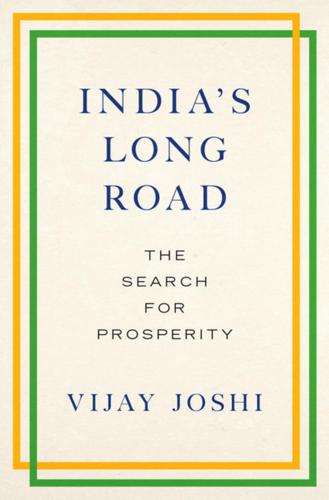
India's Long Road
by
Vijay Joshi
Published 21 Feb 2017
Though the United States may perhaps be recovering from the global credit crisis, Europe and Japan are not. China is slowing down sharply, which does not bode well for growth in Europe and in various emerging countries, especially those that rely on commodity exports. Perhaps even more important is another problem: the advanced countries may well be suffering from so-called ‘secular stagnation’ that will slow their medium-and long-term growth in the coming decades.1 Deflationary winds are blowing hard in the global economy. W h at I s t o B e D o n e ? W h at Li e s A h e a d ? [ 277 ] 278 The implication for India is that it cannot, very probably, count on any tail- wind from the world economy to support its growth, let alone to boost it.
…
In implementing it, India’s biggest challenge will be to become less of a fractious and lackadaisical democracy, and more of a resolute and purposeful one, while retaining its liberal and secular personality. There is no blueprint, template, or formula that contains the secret of how this is to be done. NOTES 1. Some explanations for secular stagnation focus on stagnant demand, i.e. households and firms are not spending enough even at zero interest rates. Others focus on the supply side, especially ageing of the population, and slowdown in the rate of technical progress. 2. See Fukuyama (2011). I am of course well aware that history may not determine destiny.
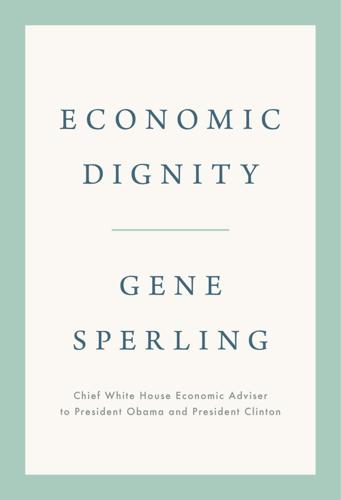
Economic Dignity
by
Gene Sperling
Published 14 Sep 2020
Kezia Scales, “Success across Settings: Six Best Practices in Promoting Quality Care through Quality Jobs,” PHI, August 21, 2017, https://phinational.org/wp-content/uploads/2017/09/evaluation_brief_final.pdf. 67. Drake, “How ‘Upskilling’ Can Maximize Home Care Workers’ Contributions and Improve Serious Illness Care.” 68. Lawrence H. Summers, “The Risk to Our Economy from Secular Stagnation,” Washington Post, March 7, 2019, https://www.washingtonpost.com/opinions/2019/03/07/risk-our-economy-secular-stagnation/; and Lawrence Summers, “The Next President Should Make Infrastructure Spending a Priority,” Washington Post, September 11, 2016, https://www.washingtonpost.com/opinions/whoever-wins-the-presidential-election-must-make-infrastructure-spending-a-priority/2016/09/11/406ef0ee-76c2-11e6-b786-19d0cb1ed06c_story.html 69.
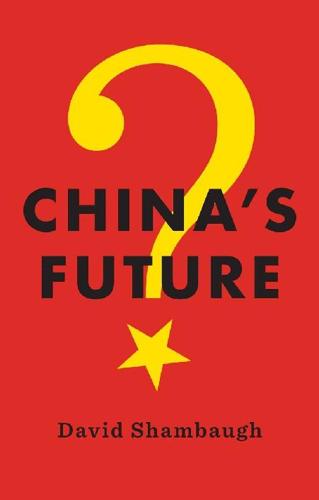
China's Future
by
David Shambaugh
Published 11 Mar 2016
Given this range of possible political pathways for China, I would estimate that Hard Authoritarianism will prevail until the Nineteenth Party Congress in 2017. After that the chances of a return to Soft Authoritarianism will rise, given the turnover of personnel described above, although it likely will not prevail. If it does not, then secular stagnation will continue, the reforms will continue to stall, and the CCP will gradually lose its grip on power. Notes 1. See H. Gordon Skilling and Franklin Griffiths, Interest Groups in Soviet Politics (Princeton: Princeton University Press, 1970). 2. This term was coined by Franklyn Griffiths in 1971.
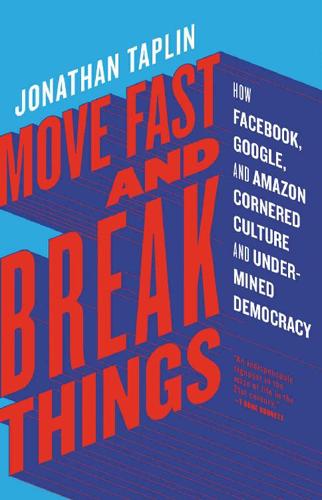
Move Fast and Break Things: How Facebook, Google, and Amazon Cornered Culture and Undermined Democracy
by
Jonathan Taplin
Published 17 Apr 2017
They generally create few jobs because they’re substitutive: When customers buy the new product, they usually don’t buy the old product.” While economists of such different political affiliations as Paul Krugman, Larry Summers, and Tyler Cowen all have written extensively about the cause of the joblessness and “secular stagnation” in the US economy that has endured since 2000, they never examine the role that monopoly capitalism might play in this crisis. If the rise of monopoly can be seen as a cause of economic stagnation, why has it endured? Because, as Peter Thiel points out in his book, “whereas a competitive firm must sell at a market price, a monopoly owns its market, so it can set its own prices.
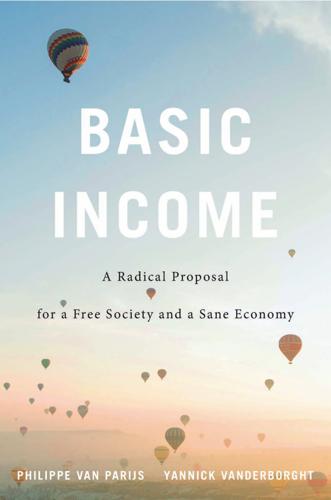
Basic Income: A Radical Proposal for a Free Society and a Sane Economy
by
Philippe van Parijs
and
Yannick Vanderborght
Published 20 Mar 2017
Â�These are now amplified by awareness of irreversible and largely unpredictable impacts on climate. Second, even among Â�those who do not question the desirability of sustained growth, Â�there are doubts about its very possibility. Particularly with regard to EuÂ�rope and North AmerÂ�iÂ�ca, they anticipate what Larry Summers diagnosed as “secular stagnation.” Third, even Â�those who believe growth to be both desirable and posÂ�siÂ�ble have grounds to question the belief that growth offers a structural solution to unemployment and precariousness. True, Â�there is a neat negative correlation between growth and unemployment rates. But Â�after all, we have had massive growth since the beginning of the golden sixties—Â�GDP per capita has doubled or trebled since then—Â�and we have not exactly seen the end of joblessness and job insecurity.7 Each of Â�these doubts about growth as a solution to unemployment and precariousness in the context of further automation could be challenged in variÂ�ous ways.
…
Story, Michael. 2015. Â�Free Market Welfare: The Case for a Negative Income Tax. London: Adam Smith Institute. Sturn, Richard, and Dujmovits, Rudi. 2000. “Basic Income in Complex Worlds: Individual Freedom and Social Interdependencies.” Analyse und Kritik 22(2): 198–222. Summers, Lawrence H. 2016. “The Age of Secular Stagnation.” Foreign Affairs 95(2): 2–9. Suplicy, Eduardo M. 2006. Renda de Cidadania. A saída é pela porta, 4th ed. Sao Paulo: Cortez Editora. —Â�—Â�—. 2011. “Â�Towards an Unconditional Basic Income in Brazil?” In Axel Gosseries and Yannick Vanderborght, eds., Arguing about Justice: Essays for Philippe Van Parijs, 337– 346.

The Rise and Fall of American Growth: The U.S. Standard of Living Since the Civil War (The Princeton Economic History of the Western World)
by
Robert J. Gordon
Published 12 Jan 2016
A strong case can be made that World War II, however devastating in terms of deaths and casualties among the American military (albeit much less than the greater toll of deaths and wounded among other combatants), nevertheless represented an economic miracle that rescued the American economy from the secular stagnation of the late 1930s. In fact, this chapter will argue that the case is overwhelming for the “economic rescue” interpretation of World War II along every conceivable dimension, from education and the GI Bill to the deficit-financed mountain of household saving that gave a new middle class the ability to purchase the consumer durables made possible by the Second Industrial Revolution.
…
All the food, clothing, and housing for the 12 million in the military (whether it be in barracks, camps, or on ships) was provided by the government and counted in wartime government spending rather than personal consumption expenditures. A broader and more important point is that the wartime prosperity, despite its inconveniences, marked a sea change in the outlook and expectations of the entire nation after a decade of grinding depression and unemployment that appeared without end, a world of “secular stagnation” in the famous phrase of Harvard’s Alvin Hansen. The Great Depression had a searingly negative effect on the nation’s sense of well-being. Through most of the 1930s, a sizable portion of the population was badly fed, clothed, and housed. This extreme poverty was eliminated by the war economy.
…
A favorite photograph of the hardships of the World War II home front shows women painting stripes on their legs to replace the rayon and nylon stockings that were no longer available. Two overriding conclusions emerge from this study of one of the great puzzles of economic growth. First, World War II saved the U.S. economy from secular stagnation, and a hypothetical scenario of economic growth after 1939 that does not include the war looks dismal at best. Second, much more than in traditional economic history, the Great Inventions of the late nineteenth century, especially electricity and the internal combustion engine, continued to alter production methods beyond recognition not just in the 1920s but in the 1930s and 1940s as well.

Humans as a Service: The Promise and Perils of Work in the Gig Economy
by
Jeremias Prassl
Published 7 May 2018
In the gig econ- omy, every worker will be able to enjoy the stimulating diversity, grapple with the exhilarating challenges, and reap the vast financial rewards of entrepreneurship. * * * 46 Doublespeak It gets even better: micro-entrepreneurship in the gig economy is char- acterized as a tool for inclusive growth in times of secular stagnation, bring- ing more and more citizens into gainful economic activity. Given the flexibility of platform work (‘You choose, not your boss!’), making a bit of money on the side has become easier than ever—for everyone: students who want to supplement their incomes; bohemians who can afford to dip in and out of the labour market; young mothers who want to combine bringing up children with part-time jobs; [and] the semi-retired, whether voluntarily so or not.54 TaskRabbit founder Busque is one of the key proponents of this view: ‘[P]roviding people with the tools and resources to set their own schedules, be their own bosses and say how much they want to get paid is incredibly empowering.
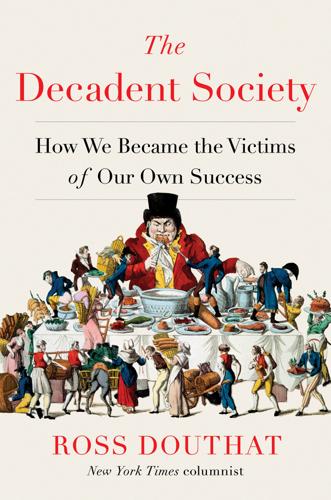
The Decadent Society: How We Became the Victims of Our Own Success
by
Ross Douthat
Published 25 Feb 2020
And if austerity has weakened Western economies, it’s often the sort of “austerity” that would have been considered wildly profligate fifty years ago—with far more welfare spending and far higher deficits and borrowed-against-the-future costs than in the booming 1950s and 1960s, which, even if such deficits are necessary, suggests that something dramatic and unfortunate has changed between that era and this one. What has changed, according to the less solutionist and more pessimistic analysis, is that we’ve entered an age of economic limits—an era of “secular stagnation,” as the chastened neoliberal Larry Summers wrote in 2013, in which “the presumption that normal economic and policy conditions will return at some point cannot be maintained.” For the pessimists, the unusual features of the post-2007 landscape—the persistently low interest rates, the low rate of inflation, the disappointing rate of growth, the great fortunes parked in rent-seeking rather than risk-taking—are actually inevitabilities in a developed world where there just aren’t enough impressive enterprises to invest in; a developed world that inflates bubbles and then pops them (or invests in Theranos and then repents) because that’s all there is for capital to do; a developed world slowly growing accustomed to unexpected limits on its future possibilities.

Less Is More: How Degrowth Will Save the World
by
Jason Hickel
Published 12 Aug 2020
See also William Lamb et al., ‘Transitions in pathways of human development and carbon emissions,’ Environmental Research Letters 9(1), 2014; Angus Deaton, ‘Income, health, and well-being around the world: Evidence from the Gallup World Poll,’ Journal of Economic Perspectives 22(2), 2008, pp. 53–72; Ronald Inglehart, Modernization and Postmodernization: Cultural, Economic, and Political Change in 43 Societies (Princeton University Press, 1997). 13 Tim Jackson, ‘The post-growth challenge: secular stagnation, inequality and the limits to growth,’ CUSP Working Paper No. 12 (Guildford: University of Surrey, 2018). 14 Mark Easton, ‘Britain’s happiness in decline,’ BBC News, 2006. 15 Richard Wilkinson and Kate Pickett, The Spirit Level: Why Equality is Better for Everyone (Penguin 2010). 16 Lukasz Walasek and Gordon Brown, ‘Income inequality and status seeking: Searching for positional goods in unequal US states,’ Psychological Science, 2015. 17 Adam Okulicz-Kozaryn, I.
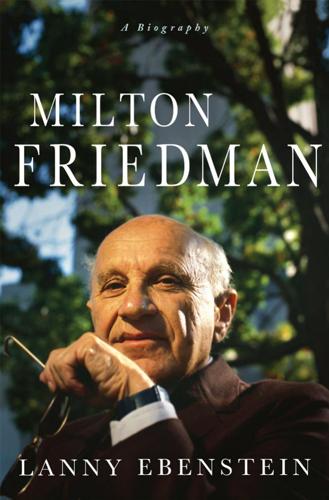
Milton Friedman: A Biography
by
Lanny Ebenstein
Published 23 Jan 2007
The language has made its way into the conventional language of economics; ‘permanent’ and ‘transitory’ are part of the lexicon.” With respect to the question of the accuracy of Keynes’s underlying proposition that there are fewer investment opportunities as economies mature, so that, particularly with oversaving, there would be long-term, secular stagnation, Friedman says that, in this case, there would not be unemployment but a lower rate of interest: The “end result would simply be a different interest rate, not unemployment.”14 This page intentionally left blank 12 KEYNES he ideas of John Maynard Keynes were triumphant in Tthe economics profession in the 1950s and 1960s.

Brexit, No Exit: Why in the End Britain Won't Leave Europe
by
Denis MacShane
Published 14 Jul 2017
Britain’s greatest historian of postwar Europe, Tony Judt, used part of those lines for the title of his great deathbed essay – Ill Fares the Land – attacking the meretricious Britain that came into being this century as the gap between have and have-not Britain grew ever wider. According to a McKinsey Global Institute report published in July 2016 the era of slow growth – what the US economist and former US treasury secretary Larry Summers calls secular stagnation – means that 70 per cent of the UK population is an income bracket with flat or declining incomes in the decade since 2006. They feel their lives and those of their children are getting no better and would like to pin the blame on someone, something. Immigrants have been a scapegoat since time immemorial for a nation’s worries and lack of direction.

The Seventh Sense: Power, Fortune, and Survival in the Age of Networks
by
Joshua Cooper Ramo
Published 16 May 2016
“Inflation is always and everywhere a monetary phenomenon”: Milton Friedman, “The Counter-Revolution in Monetary Theory,” IEA Occasional Paper 33 (London: Institute of Economic Affairs, 1970), 11. “I think it is fair to say that six years ago”: Lawrence H. Summers, “U.S. Economic Prospects: Secular Stagnation, Hysteresis, and the Zero Lower Bound” (Keynote address at NABE Policy Conference, February 24, 2014), Business Economics 49, no. 2 (2014): 65. “A commander-in-chief”: Carl von Clausewitz, On War, ed. and trans. Michael Howard and Peter Paret (Princeton, NJ: Princeton University Press, 1984), 110.

The Corruption of Capitalism: Why Rentiers Thrive and Work Does Not Pay
by
Guy Standing
Published 13 Jul 2016
People who have basic security tend to be healthier and more resilient.17 And they are more productive, cooperative, tolerant and altruistic. These are a formidable set of arguments for moving in the direction of basic income. BASIC INCOME PILOTS: QE FOR REAL PEOPLE The 2008 crash, the perception that the global economy is facing secular stagnation, and fears, however misplaced, that the technological revolution is creating a future of labour displacement, have led to growing calls for basic income pilot schemes of one sort or another; some have been carried out. Before considering them, it is worth commenting on one misguided approach and one great missed opportunity.

Keeping at It: The Quest for Sound Money and Good Government
by
Paul Volcker
and
Christine Harper
Published 30 Oct 2018
He illustrated with simple graphics and arithmetic how Keynesian “consumption functions” and “investment multipliers” could interact with precision. One advanced student, Laurence Klein, managed to put it all in more formal mathematical form, building toward an early application of “econometrics.” As an empirical judgment, Hansen pronounced with confidence that the United States, after years of depression, was caught up in “secular stagnation.” Only wartime spending and big federal budget deficits had rescued the nation from the Depression. Government deficit spending would need to be sustained. Inflation, which had risen during World War II and again during the Korean War, didn’t seem to be considered a serious threat. In fact, one of the less renowned professors, Arthur Smithies, lectured week after week about the importance of maintaining an inflationary bias in the economy—maybe only 2 or 3 percent a year, but inflation nonetheless.

The Bitcoin Standard: The Decentralized Alternative to Central Banking
by
Saifedean Ammous
Published 23 Mar 2018
Buchanan and Gordon Tullock, The Calculus of Consent: Logical Foundations of Constitutional Democracy (1962). 22 Mark Skousen, “The Perseverance of Paul Samuelson's Economics,” Journal of Economic Perspectives, vol. 11, no. 2 (1997): 137–152. 23 David Levy and Sandra Peart, “Soviet Growth and American Textbooks: An Endogenous Past,” Journal of Economic Behavior & Organization, vol. 78, issues 1–2 (April 2011): 110–125. 24 Mark Skousen, “The Perseverance of Paul Samuelson's Economics,” Journal of Economic Perspectives, vol. 11, no. 2 (1997): 137–152. 25 Paul Krugman, “Secular Stagnation, Coalmines, Bubbles, and Larry Summers,” New York Times, November 16, 2003. 26 For a formal modeling of this statement, see D. W. Diamond and P. H. Dybvig, “Bank Runs, Deposit Insurance, and Liquidity,” Journal of Political Economy, vol. 91, no. 3 (1983): 401–419. 27 Thomas Philippon and Ariell Reshef.
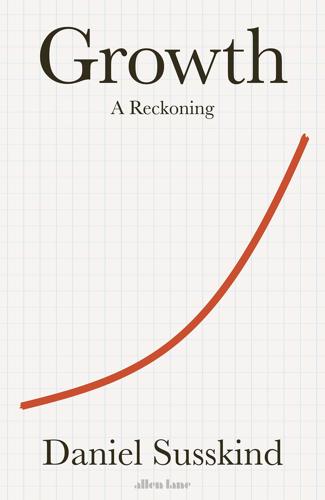
Growth: A Reckoning
by
Daniel Susskind
Published 16 Apr 2024
Tyler Cowen, in his 2011 book The Great Stagnation, wrote that, ‘life is better and we have more stuff, but the pace of change has slowed down compared to what people saw two or three generations ago.’3 Robert Gordon, in his 2016 The Rise and Fall of American Growth, made the case that ‘future growth will be slower than in the past.’4 Dietrich Vollrath, in his 2020 book Fully Grown, explained how a slowdown in American growth ‘has forced economists and policy makers to recalibrate their expectations of how fast the economy will grow in the future’.5 Larry Summers spent the 2010s resuscitating Alvin Hansen’s old idea of ‘secular stagnation’, where a country gets stuck in a low-growth rut, in order to explain why anaemic economic progress was plaguing many parts of the world. And Brad DeLong, in his 2022 Slouching towards Utopia, lamented that, while ‘the trail to utopia came into view’ in the last century and a half, in the sense that growth seemed to promise a future of material abundance, today ‘we are still on the trail – maybe, for we can no longer see clearly to the end of the trail or even to wherever the trail we are on is going to lead.’7 Figure 2: 10-year average growth rate of real GDP per capita6 How, then, do we get more growth?
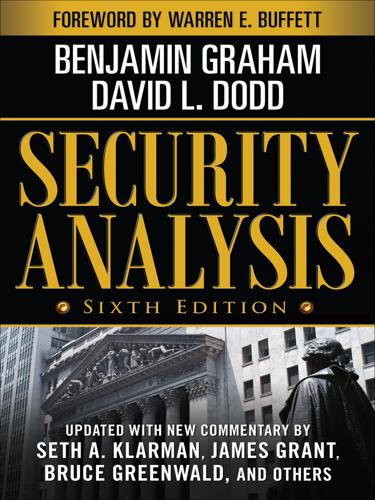
Security Analysis
by
Benjamin Graham
and
David Dodd
Published 1 Jan 1962
“The first thing you know,” the judge had upbraided the suspects, “you’ll wind up as stock brokers in Wall Street with yachts and country homes on Long Island.”3 In ways now difficult to imagine, Murphy’s Law was the order of the day; what could go wrong, did. “Depression” was more than a long-lingering state of economic affairs. It had become a worldview. The academic exponents of “secular stagnation,” notably Alvin Hansen and Joseph Schumpeter, each a Harvard economics professor, predicted a long decline in American population growth. This deceleration, Hansen contended in his 1939 essay, “together with the failure of any really important innovations of a magnitude to absorb large capital outlays, weighs very heavily as an explanation for the failure of the recent recovery to reach full employment.”4 Neither Hansen nor his readers had any way of knowing that a baby boom was around the corner.
…
Louis-San Francisco Railway Company, 63, 66, 197n, 198, 199n, 202n, 212, 646 Saltex Looms, Inc., 227 Salvador, 175 Samberg, Arthur, 267 San Antonio and Aransas Pass Railway Company, 220, 221 San Francisco Toll-Bridge Company, 309 San Joaquin Light and Power Corporation, 320n Sao Paulo, 173n Savings Bank Trust Company of New York, 172 Savold Tire, 15 Savoy Plaza Corporation, 208n Schackno Act, 233n Schletter and Zander, Inc., 365 Schloss, Edwin, 57–58 Schloss, Walter, 57–58 Schulte Retail Stores Corporation, 221 Schumpeter, Joseph, 3 Schwartz, Carl H., 213n Schwed, Fred, Jr., 6 Seaboard Air Line, 182 Seaboard-All Florida Railway, 145 Seager, Henry R., 680n Sears Roebuck, 53, 383n Seasoned issues, price inertia of, 688–689 Secular stagnation, 3–4 Securities Act of 1933, 414n Securities analysis, general procedure for, 669–670 Securities and Exchange Commission, 115n, 223, 232 Securities as element in security analysis, 7 Securities Exchange Act of 1934, 255n, 414n, 582 Securities prices: comparative, discrepancies in, 691–692 of convertible and warrant-bearing issues, 306–307 of definitely related issues, comparison of, 693–695 as element in security analysis, 77 intrinsic value vs., 64–65 of seasoned issues, inertia of, 688–689 sensitivity of, 256–257 of speculative preferred stocks, 330–334 supply and demand factors and, 695–696 (See also Bond prices; Stock prices) Security analysis: Ayres mechanical forecasting method and, 702–703 at Chieftain Capital Management, 397–400 critical function of, 73–74 cyclical nature of, 11–12 descriptive function of, 62 disadvantages of market analysis as compared with, 703–704 market analysis as substitute or adjunct to, 697–702 prestige of, 61 prophesies based on near-term prospects and, 704–706, 707 selective function of, 62–71 speculation and, 71–73 usefulness of, 62 Security Analysis, shortcomings of, 620–622 Security Analysis, first edition: acceptance of, 16–19, 39–40 analytical approach of, 41–44 endurance of, 40–41, 42–43, 137–140 focus on bonds, 44 historical background, 1–19 Rich’s review of, 2 Security Analysis, second edition: on corporate finance, 8–12 historical background, 1, 6 Segregations, market exaggerations due to, 680 Selective function of security analysis, 62–71 examples of analytical judgments and, 63–64 intrinsic value and, 64–68, 70–71 obstacles to, 68–70 tardy adjustment of price value and, 70 Semiannual reports as information source, 91 Senior securities, 229–241 indenture or charter provisions designed to protect holders of, 229–230 Seton Leather, 674 Shabacker, R.

Human Frontiers: The Future of Big Ideas in an Age of Small Thinking
by
Michael Bhaskar
Published 2 Nov 2021
And Jones and his colleagues aren't alone among economists. Evidence is mounting from across the field. * Economists are increasingly sceptical about claims that we live in an age of radical innovation. High-profile names like Lawrence Summers, Robert Gordon and Tyler Cowen elaborate the idea of ‘secular stagnation’, citing that strange slowing of Western economies despite a surface-level technological abundance. Cowen's ‘Great Stagnation’ is exactly what you'd expect if research productivity were to decline at 5.1 per cent a year.51 Prior to the 1970s, living standards doubled every couple of decades.

The Great Divide: Unequal Societies and What We Can Do About Them
by
Joseph E. Stiglitz
Published 15 Mar 2015
Though as this book goes to press, it appears that growth is at last returning to the economy—a full eight years after the beginning of the recession in 2007—the growth is still barely robust enough to create employment for the new entrants into the labor force. The unemployment rate is down, but mainly because labor-force participation is down, to a level not seen in almost four decades—millions of Americans have dropped out of the labor force. But as I explain here and elsewhere, this long-term (or as it has sometimes been called secular) stagnation into which the United States seems to be descending is a result not so much of underlying laws of economics as of our policies: the failure of government to facilitate the structural transformation and its failure to do anything about our increasing inequality. The final chapters of this part pursue the implications of changing technology—and the enigmas it seemingly presents—somewhat further.

Hedgehogging
by
Barton Biggs
Published 3 Jan 2005
New Deal disciples maintain that Keynesian economics was the backbone of the New Deal, and that it was what brought the U.S. economy back from the Depression to full employment.The United States in turn resuscitated the world.The skeptics argue that it was another event called World War II, not Keynesian economics, that revived the world. Keynes believed that in rich societies capital investment would be inadequate to sustain growth because of the high propensity of people to save. He also was pessimistic about the falling birth rate of the 1930s. This led him to worry about “secular stagnation,” the inability of mature economies to sustain recoveries. Both these problems still plague Europe today. Is it possible that the sharp decline in the birth rate in Japan, which is the cause of so much secular pessimism about Japan’s future growth, could be a function of 15 years of hard times?

Shutdown: How COVID Shook the World's Economy
by
Adam Tooze
Published 15 Nov 2021
The yields on investment-grade corporate bonds in the United States plunged to lows not seen since the 1950s.48 German federal government revenue from selling bonds at negative interest rates (in billion euros) While 2020 may have been extreme, the fact that interest rates fell as debt surged wasn’t in fact a new trend. Over recent decades, even as public debt was on a secular upgrade, interest rates had been moving in the opposite direction. This was one of the phenomena that moved Larry Summers in 2013 to suggest that we were living in an age of secular stagnation.49 True to the basic supply-and-demand framework, Summers argued that if the price of funds, the interest rate, was falling, it must be due to an imbalance. There was either too much saving or too little investment. Either way, it was a good moment for government investment to take up the slack.

People, Power, and Profits: Progressive Capitalism for an Age of Discontent
by
Joseph E. Stiglitz
Published 22 Apr 2019
United States, 133 science and collective judgments, 262–63n20 Enlightenment and, 10–12 opposition to, 20 replacement with ideology, 20 as shared value, 228 as social enterprise, 262n18 and standard of living, 263n22 Trump’s attack on, xvii, 16–17 and wealth of a nation, xiv sea level rise, 207 secular stagnation, 120 securitization of mortgages, 217 self-driving cars, 118 self-interest, 19–20, 113 selfishness, 30, 240 Senate, 6, 159–60 senior citizens, 181–82 service sector, 122–23 share buybacks, 109 shareholder interests, 102 shareholder value maximization, 112 share of capital, 53 Shelby County v.
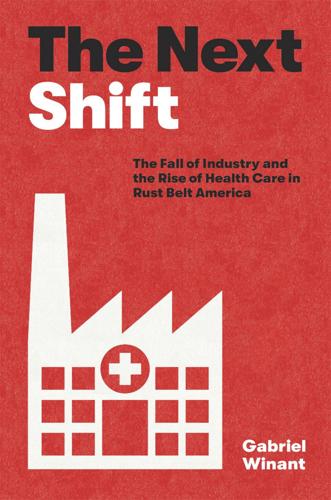
The Next Shift: The Fall of Industry and the Rise of Health Care in Rust Belt America
by
Gabriel Winant
Published 23 Mar 2021
Baumol, The Cost Disease: Why Computers Get Cheaper and Health Care Doesn’t (New Haven, CT: Yale University Press, 2013); Jochen Hartwig, “Structural Change, Aggregate Demand, and Employment Dynamics in the OECD, 1970–2010,” Structural Change and Economic Dynamics 34 (September 2015), 36–45; Peter Temin, The Vanishing Middle Class: Prejudice and Power in a Dual Economy (Cambridge, MA: MIT Press, 2017); Servaas Storm, “The New Normal: Demand, Secular Stagnation, and the Vanishing Middle Class,” International Journal of Political Economy 46, no. 4 (2018), 169–210. 5. See Teresa Leste, Yakir Siegal, and Maulesh Shukla, “Return on Capital Performance in Life Sciences and Health Care,” Deloitte Insights, April 30, 2019, available at https://www2.deloitte.com/us/en/insights/industry/health-care/return-on-capital-health-care.html; Lawton R.

The Tyranny of Nostalgia: Half a Century of British Economic Decline
by
Russell Jones
Published 15 Jan 2023
Reflecting an ageing population structure and slower technological progress, among other considerations, the trend rate of growth slowed over the course of the period under scrutiny, as indeed it did across all the advanced economies. The steadily increasing prosperity of the 1950s and 1960s became an increasingly distant memory, ultimately to be replaced by an environment more akin to secular stagnation. The average annual rate of growth in UK productive potential progressively retreated to levels not seen consistently since the early nineteenth century and the initial stages of the Industrial Revolution. That is to say, perhaps as low as 1% per annum. Perhaps more pertinently, the UK’s slowdown proved somewhat greater than the advanced economy average, compounding the fact that the initial starting point had also been sub-par.
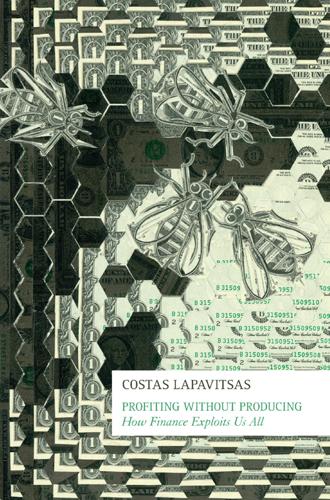
Profiting Without Producing: How Finance Exploits Us All
by
Costas Lapavitsas
Published 14 Aug 2013
Thus, Joachim Becker and Johannes Jaeger have distinguished among, first, productive/financialized accumulation determined by the sectoral direction of investment; second, extensive/intensive accumulation, determined by whether wage earners consume goods that are obtained primarily in the market; third, introverted/extroverted accumulation, determined by the orientation of output toward domestic or international markets.24 Along these lines Becker et al. have postulated four types of financialization: i) based on ‘fictitious’ capital, by which is meant inflation of financial prices; ii) based on interest-bearing capital, meaning expansion of banks; iii) ‘elite’, implying the involvement of the bourgeoisie and the upper middle class; iv) ‘popular’, indicating that workers have also been drawn into financial operations. Irrespective of the validity of these categorizations, distinguishing among varieties of financialization is vital to analysing the phenomenon in its totality.25 Theories of perpetual crisis The perception that the rise of finance has been associated with secular stagnation, or malfunctioning, of capitalist accumulation is also apparent among Marxist approaches that have retained an ostensible allegiance to the theory of the tendency of rate of profit to fall. Generally speaking, the underlying assumption of this type of Marxism is that the sphere of production in recent decades has been characterized by low and unstable profitability for a variety of reasons, including overaccumulation.
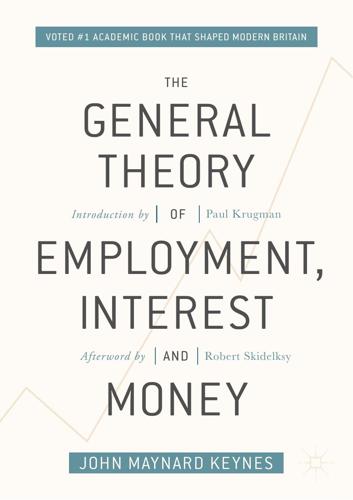
The-General-Theory-of-Employment-Interest-and-Money
by
John Maynard Keynes
Published 13 Jul 2018
Furthermore, even Keynes’s belief that 30s-type problems would be the norm looking forward looks a lot more reasonable now than it used to. Circa 2000, the conventional wisdom was that 2 percent inflation was sufficiently high that episodes in which monetary policy lost traction because of the zero lower bound on interest rates would be rare and brief. Obviously that turned out to be wrong. Moreover, worries about “secular stagnation”—about a shortage of investment opportunities leading to persistently low interest rates even during periods of expansion, which in turn makes depression-like episodes highly likely, even the norm—have made a comeback. With a sharp slowdown in working-age population growth in advanced economies, xlii Introduction by Paul Krugman and an apparent slowdown in productivity growth, Keynes’s bleak vision of the future absent consistent government support for demand may be coming true after all.

Good Economics for Hard Times: Better Answers to Our Biggest Problems
by
Abhijit V. Banerjee
and
Esther Duflo
Published 12 Nov 2019
To name just one example, in 1938, just as the US economy was going back into high-growth mode after the Great Depression, Alvin Hansen (who was not a nobody; he was the co-inventor of the IS-LM model most students of economics will remember from their first macroeconomics class, and a professor at Harvard) coined the term secular stagnation to describe the state of the economy at the time. His view was that the American economy would never grow again because all the ingredients of growth had already played out. Technological progress and population growth in particular were over, he thought.16 Most of us today who grew up in the West grew up with fast growth or with parents used to fast growth.
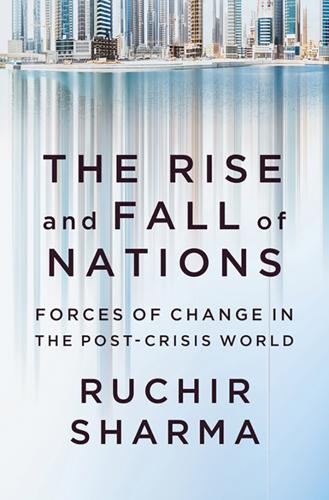
The Rise and Fall of Nations: Forces of Change in the Post-Crisis World
by
Ruchir Sharma
Published 5 Jun 2016
Smith, Tony. “In Brazil, Chafing at Economic Restraints.” New York Times, March 17, 2004. “A Strongman Cometh.” JP Morgan Research, November 2012. Summers, Lawrence. “Second-Term Presidents Cost America 40 Lost Years” Financial Times, August 10, 2014. ——. “Bold Reform Is the Only Answer to Secular Stagnation.” Financial Times, September 7, 2014. “Technocrats—Minds Like Machines.” Economist, November 19, 2011. “Turkey: Business Climate Will Gradually Erode with Erdogan Presidency.” Eurasia Group, July 2014. “Turkey’s Delight: A Growing Economy.” Bloomberg News, August 31, 2003. “Turkish PM’s Top Aide Says Erdoan One of Only Two World Leaders.”

The Technology Trap: Capital, Labor, and Power in the Age of Automation
by
Carl Benedikt Frey
Published 17 Jun 2019
As the industries that constituted the key drivers of the Industrial Revolution—textiles, rail transport, and steam engineering—started to slow at the end of the nineteenth century, some observers asserted that the capitalist system had broken down.1 In a similar spirit, during the Great Depression, Marxist critics declared that capitalism was incapable of achieving sustained growth, and non-Marxist writers, like the economist Alvin Hansen, predicted that the U.S. economy was in for a period of secular stagnation in part due to faltering innovation: “When a revolutionary new industry like the railroad or the automobile … reaches maturity and ceases to grow, as all industries finally must, the whole economy must experience a profound stagnation.… And when giant new industries have spent their force, it may take a long time before something else of equal magnitude emerges.”2 Robert Gordon has recently put forward an equally bleak outlook on the future of growth in The Rise and Fall of American Growth.3 He argues that contemporary breakthroughs in artificial intelligence (AI), mobile robotics, drones, and other by-products of the computer revolution cannot match the great inventions of the early twentieth century.
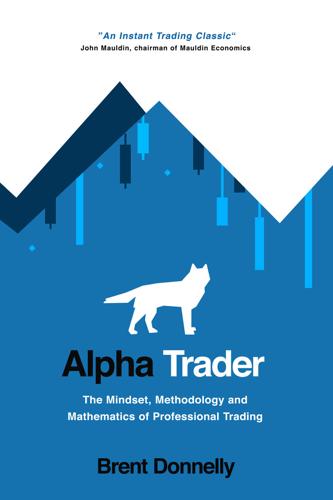
Alpha Trader
by
Brent Donnelly
Published 11 May 2021
If the Fed has hiked seven times and the economy is still strong and yields are ripping higher, then sure, that kind of rising rate move is probably bad for stocks. On the other hand, almost every time US interest rates went up in recent years, that was likely good news for stocks as it signaled reflation and momentum away from the dreaded deflationary secular stagnation environment. Any time someone posts or blogs or tweets that rising rates are bad for stocks, stop and think. What do higher rates represent? Why are rates rising? Where are we in the interest rate and economic cycles? Unless you’re near the end of the cycle, rising rates are usually good news for stocks, not bad news. 2.

Termites of the State: Why Complexity Leads to Inequality
by
Vito Tanzi
Published 28 Dec 2017
This possibility tends to be dismissed by those convinced Keynesians who continue to believe that with enough public spending, countries can be pulled out of any recession, regardless of structural impediments and regardless of initial conditions as to the level of public debts and fiscal deficits. Some even believe that more public spending may be a long run cure for low economic growth, because of “secular stagnation.” The public officials responsible for the stabilization objective must have the information, the technical knowledge, the power to act, and the wisdom to make the right and timely decisions on spending and taxing, decisions that are never easy to make in real-world situations and that always tend to be distorted by the pressures of vested interests and by honest disagreements among economists and policymakers.

Escape From Rome: The Failure of Empire and the Road to Prosperity
by
Walter Scheidel
Published 14 Oct 2019
England followed suit, catching up in the eighteenth century, while continental Europe stagnated (figure 10.3).73 This impression of divergent development meshes well with information concerning urbanization and sectoral distribution. The proportion of the urban population, a rough indicator of economic development, rapidly expanded in seventeenth- and eighteenth-century England to rise far above the European average. In fact, thanks to secular stagnation on the continent, a large and growing share of the net increase in overall European urbanization during this period took place in England (figure 10.4).74 Likewise, between 1500 and 1800, the share of the population not engaged in agriculture rose much faster in the Low Countries and especially in England than it did in other parts of Europe (figure 10.5).75 FIGURE 10.2 Real wages of urban unskilled workers in different parts of Europe, 1500–1780 CE.

Bourgeois Dignity: Why Economics Can't Explain the Modern World
by
Deirdre N. McCloskey
Published 15 Nov 2011
“Beyond Markets and States: Polycentric Governance of Complex Economic Systems. American Economic Review 100 (June): 1–33. Ostrom, Elinor, Roy Gardner, and James Walker. 1994. Rules, Games, and Common-Pool Resources. Ann Arbor: University of Michigan Press. Pagano, Patrizio, and Massimo Sbracia. 2014. “The Secular Stagnation Hypothesis: A Review of the Debate and Some Insights.” Bank of Italy, Occasional Papers. At http://www.bancaditalia.it. Palmer, Tom G. 2012. “Bismarck’s Legacy.” In Palmer, ed., After the Welfare State, pp. 33–54. Washington, DC: Atlas Economic Research Foundation. Palmer, Tom G. 2014. “The Political Economy of Empire and War.”